The food and drink trends of 2023
Get a taste of warming drinks, Polish bar snacks and orzo
- Warming drinks
- Why Poland leads on bar snacks
- Why the British are embracing orzo
- Tips for bagging a restaurant table
- In praise of white balsamic
- Can any steak be worth £760?
- The perfect roastie: a definitive guide
- A 'flavour-bomb' of a seasoning
- The horrible ubiquity of balsamic vinegar
- Ready meals in French bistros
- Fine wines from Essex
- Thieves are targeting 'liquid gold'
- Moët's vintage years
- The best ready-made stock...
- ...and the best supermarket butter
- Snails come out of their shells
- How to dress up the humble crumble
- A more relaxed approach to recipes
- New Zealand pinot gris
- A champion pizza chef in west London
- Eat yoghurt to avoid garlic breath
- From cabbies' pit stop to hip café
- The new caviar enthusiasts
- End of the road for food art
- The blight of the self-checkout
- Busting the 'national dish' myth
- Dinner party crimes
- France's glut of unsold wine
- 'Liquid investments' for whisky collectors
- Dog ice cream
- ‘Flat’ recyclable wine bottles
- Le Creuset ‘supercollectors’
- Minimalist menus
- The appeal of the Sichuan peppercorn
- Omelettes: ‘difficult to master’
- Japanese bread is coming to Britain
- Are supermarkets ruining the roast?
- The case for riesling
- Britain embraces spice
- A hot dog like no other
- Where kids eat for free
- A tomato tart for summer
- The deep-fried jam sandwich
- Japan’s ‘rice separation’
- Tips for a perfect picnic
- Tips for storing and using spices
- How to make a non-stick pan
- The joys of a microwave
- The wine bar gets a 'reboot'
- Food rules you can ignore
- The rise of the carnivore diet
- Vinho verde: a perfect summer wine
- Heatwave salads
- Why baking raspberries makes sense
- The man who reinvented sauces
- The sad decline of the Balti Triangle
- The magic and joy of confit
- Making the most of 'nduja
- Why pickles have become hot
- An Italian restaurant for coeliacs
- Why desserts are disappearing
- Making the best of asparagus season
- Time to revive an Edwardian favourite
- A delicious umami dressing
- Smoky tea from a bygone age
- Moving beyond classic vinaigrette
- The cheesy pud revolution
- The underrated pork knuckle
- A trend that harks back to the past
- A quiche fit for a king?
- Finding inspiration in pantry porn
- Why venison is going to food banks
- The trend for ‘immersive’ dining
- A fine time for blood oranges
- How to obey the laws of the fridge
- The peculiar craze for tinned fish
- Bristol's booming dining scene
- How to liven up your batch cooking
- Waitrose bids farewell to Heston
- A rarefied import from Japan
- The French cheese meltdown
- The fashion for gourmet mushrooms
- The slow cooker stages a comeback
- Knotweed is surprisingly nice
- The birth of the triple-cooked chip
- The trouble with no-egg egg
- A better use for a sandwich toaster
- The plusses of a pressure cooker
Sign up for The Week’s Food & Drink newsletter for recipes, reviews and recommendations.
Warming drinks
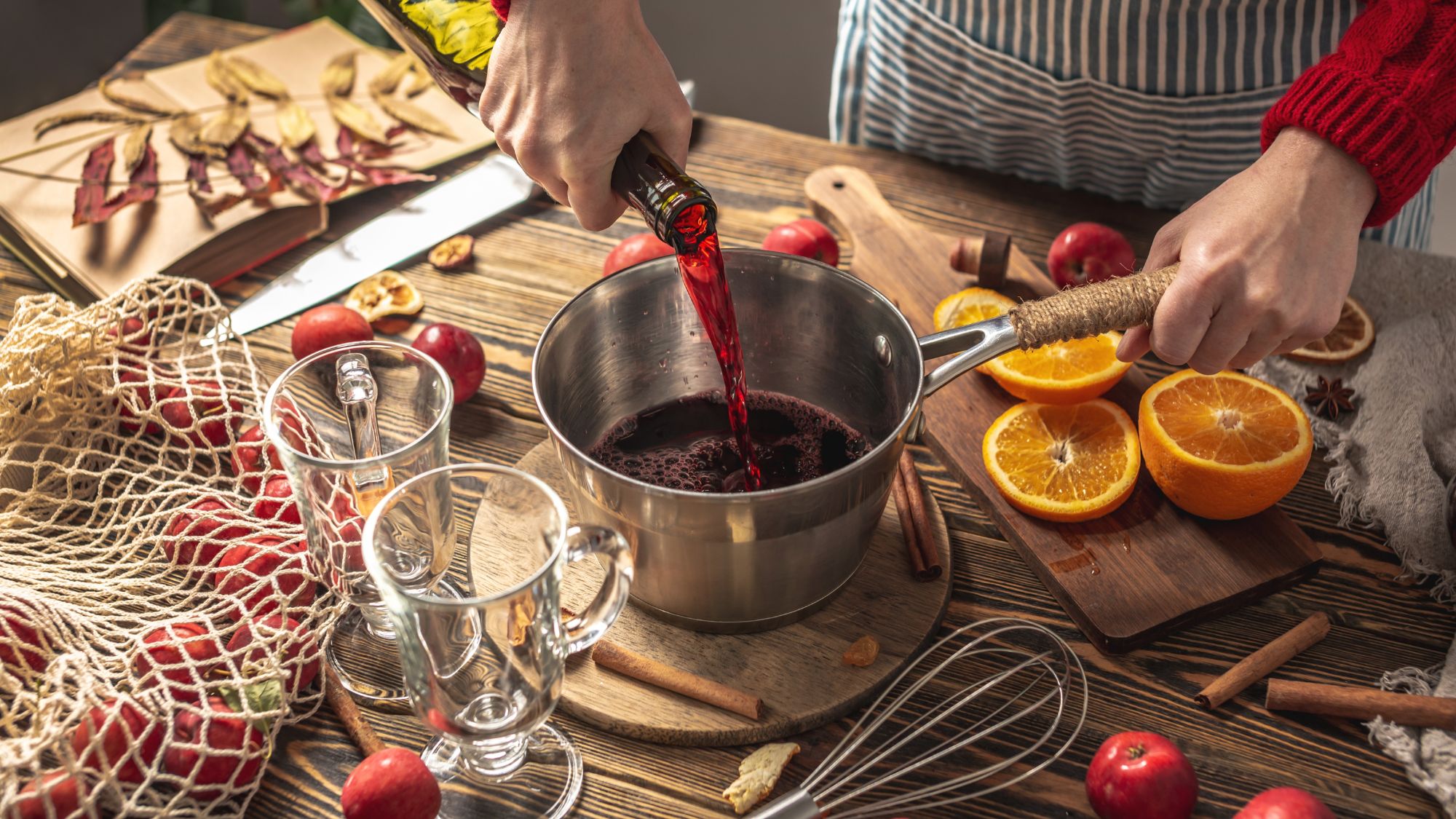
It's 'much cosier' to make mulled wine from scratch
On cold winter evenings our thoughts may turn to warming drinks, said David Williams in The Observer. One of the best is a Whisky Mac toddy – a drink with rare warming powers, despite having reputedly been invented by a Scottish soldier in "the heat of late 19th century India". To make it, simply pour blended Scotch and equal parts Stone's Ginger Wine into a heated glass, with around the same total volume of boiling water. Or you could try a "bit of mulling instead". It's definitely "much cosier" to make mulled wine from scratch, rather than buying pre-mixed. I don't like it too sweet, so instead of adding sugar, I'll use half a bottle of decent port, and half a bottle of full-bodied red wine, simmering in a pan for 10 minutes with a cinnamon stick, a slice or two of orange, and a couple of star anise and cloves. If I'm not in the mood for alcohol, I'll have hot chocolate the Spanish way, made by melting a "chunky corner" of a bar of drinking chocolate into hot milk. Simón Coll 60% Cacao y Canela (£3.95; tugboat.co.uk) is my favourite: with its "subtle infusion of cinnamon", it makes an "exquisitely dark and silky" drink.
Why Poland leads on bar snacks
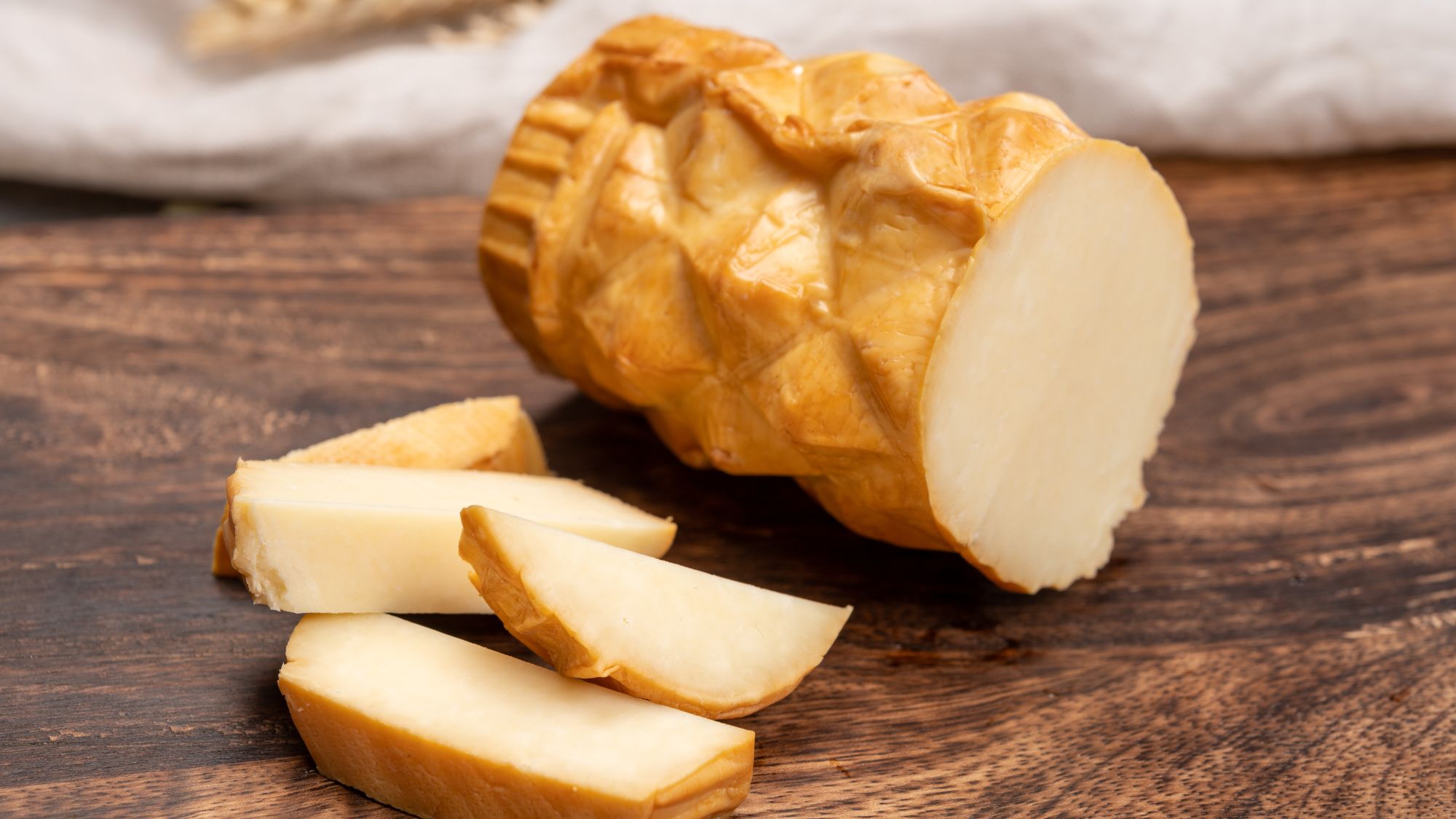
Oscypek is a delicious smoked cheese from Poland
Poland, where I've lived for a decade, puts Britain to shame when it comes to bar snacks, said Ben Sixsmith in The Spectator. In the UK, go to the pub, or to a friend's house, and the only thing you'll find to "add ballast to your booze" is crisps; or if you're lucky, a bowl of nuts. But when I visit my Polish friends, we sip vodka while feasting on paluszki (breadsticks studded with salt), Oscypek (a delicious smoked cheese made of salted sheep's milk, which is also excellent for lining the stomach) and herring (such a popular companion to vodka, there is a chain of bars named after it). And as the Poles love pickling, there may be pickled peppers or mushrooms too, offering "electrolytes to take the edge off a hangover". Much of the scorn directed at British food is undeserved, but in this area it's merited. Crisps do offer an excellent combination of salt and crunch, but we really could do with broadening our range of bar snacks.
The Week
Escape your echo chamber. Get the facts behind the news, plus analysis from multiple perspectives.

Sign up for The Week's Free Newsletters
From our morning news briefing to a weekly Good News Newsletter, get the best of The Week delivered directly to your inbox.
From our morning news briefing to a weekly Good News Newsletter, get the best of The Week delivered directly to your inbox.
Why the British are embracing orzo
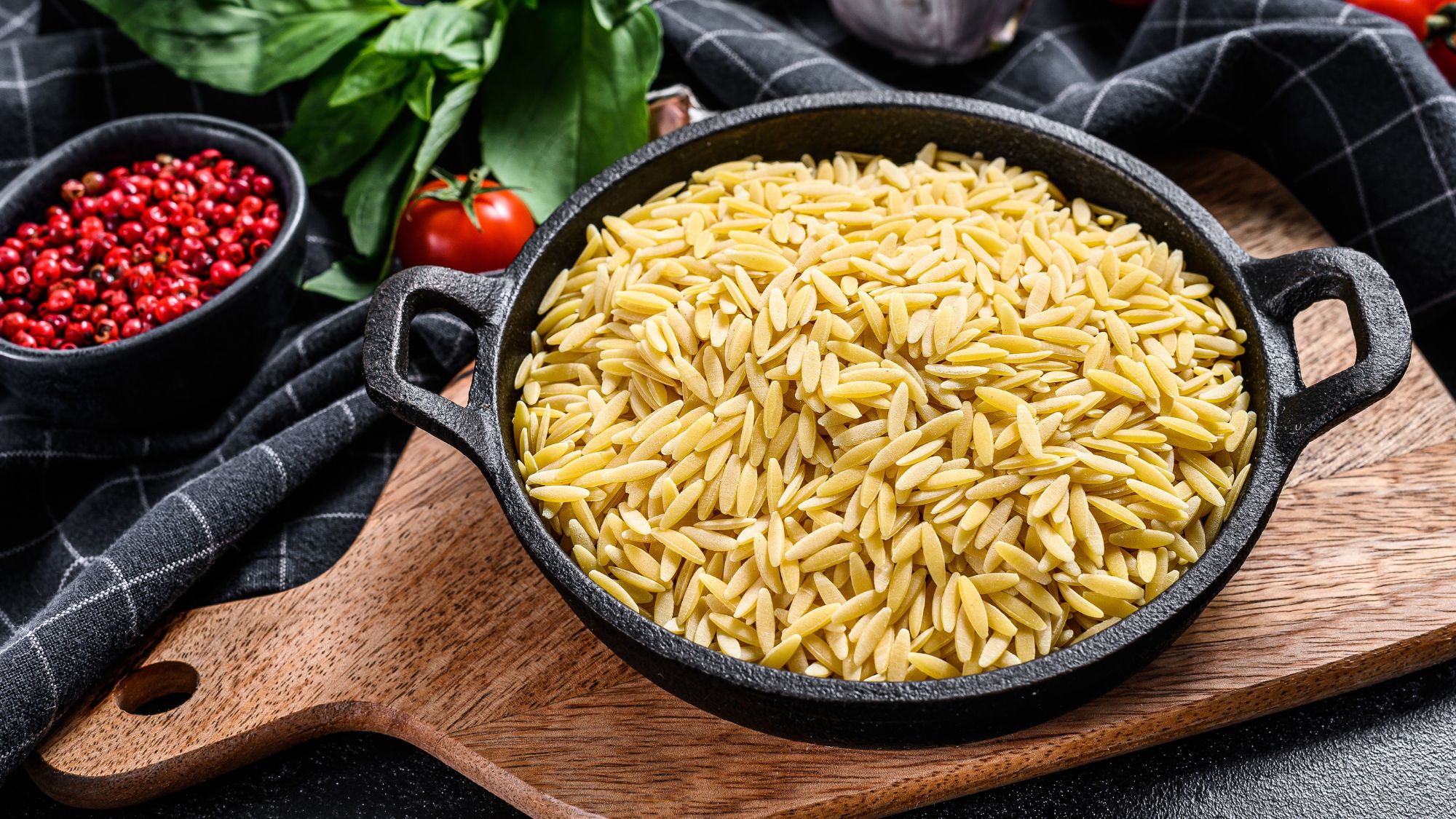
Orzo is easy to cook and highly versatile
Supermarket shelves are filled with packets of spaghetti, penne and tagliatelle, but according to a report by HelloFresh, the second-most Googled pasta shape in the UK after lasagne is orzo, said Ed Cumming in The Daily Telegraph. Initially, "I found this surprising": the grain-like variety (named after the Italian for barley) isn't chic, like pappardelle or pici, nor do you often encounter it in restaurants. A search of Google's Ngram, which scans the incidence of words in English, suggests that it was "virtually unknown here" until the 1980s. So what explains the "burgeoning interest" in it? I suspect it's because home cooks have started to appreciate that it's easy to cook, and highly versatile. Its shape places it in the category of "grains-with-airs, such as giant couscous, bulgur and quinoa", and like these, it can be used as an alternative to rice, but takes far less time to cook. "An orzo-risotto (rizorzo?) can be yours in a third of the time as a rice one." It's also a "perfect weaning food – filling, but not big enough to choke on". I'd recommend starting your orzo adventures with one of two dishes: Ottolenghi's prawn, feta and orzo – a lockdown hit – and Nigella's "idiot-proof roast chicken, swimming in orzo".
Tips for bagging a restaurant table

There are some strategies you can follow to get the 'impossible' table
Securing a table at a popular restaurant, and at a decent hour, can be devilishly tricky, said Hannah Evans in The Times. Too often, aspiring diners find themselves embroiled in the appetite-killing experience of scouring reservation platforms such as Resy or OpenTable – which most restaurants now use to handle their bookings – and finding that the only tables available are at either 5pm or 9pm. If eating early or late is not your bag, and you're not the sort to book an evening out weeks in advance, what can you do? Industry insiders confirm that there are no "special tricks" that will get you the "impossible" table, but there are some sensible strategies you can follow. One is to pay attention to the cycle of buzz surrounding restaurants. According to Adam Hyman, founder of the Code Hospitality network, it is rarely a good idea to visit restaurants at the "peak of their popularity"; you'd do better to "wait for that buzz to die" – when the food is likely to be better, and more tables will be available. He also recommends that, where possible, people circumvent the reservation platforms and book face to face. If you simply walk into the restaurant and ask the reservation team what they have available, you'll be surprised by how often then can find a slot. Your chances will be better still if you're a regular customer. But be realistic: with restaurants often needing to fit in two evening sittings to keep themselves afloat, you may still struggle to get that "perfect" 7:30pm booking.
In praise of white balsamic
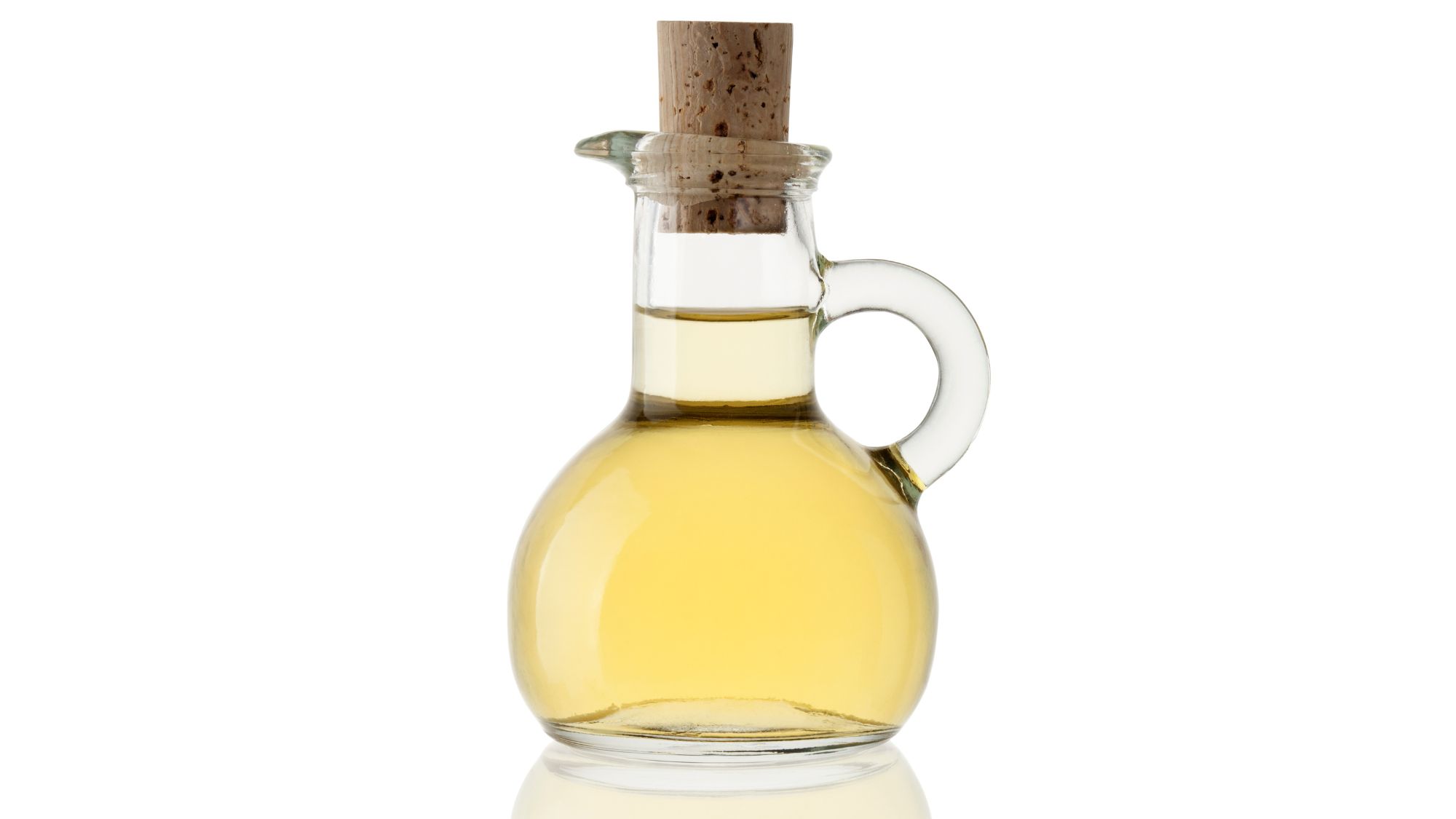
White balsamic vinegar can be used in dressings and as a marinade
My "secret ingredient", said the chef and cookery writer Theo Randall in The Observer, is white balsamic vinegar. It "starts off as regular balsamic vinegar, but is steamed, rather than caramelised and aged". The result is rather like a sweet white wine vinegar, but one where "you can taste the grapes more". I use it in dressings with olive oil and a touch of honey – this is excellent tossed through shaved courgette and a little rocket, and finished with walnuts and shaved pecorino. But it works with practically any vegetable. You can also use white balsamic as a marinade for chicken thighs, with a little garlic and some sage. The vinegar helps flavour and tenderise the thighs, and when you bake them they'll be "sticky but not too caramelised, with this brilliant roast chicken flavour".
Can any steak be worth £760?
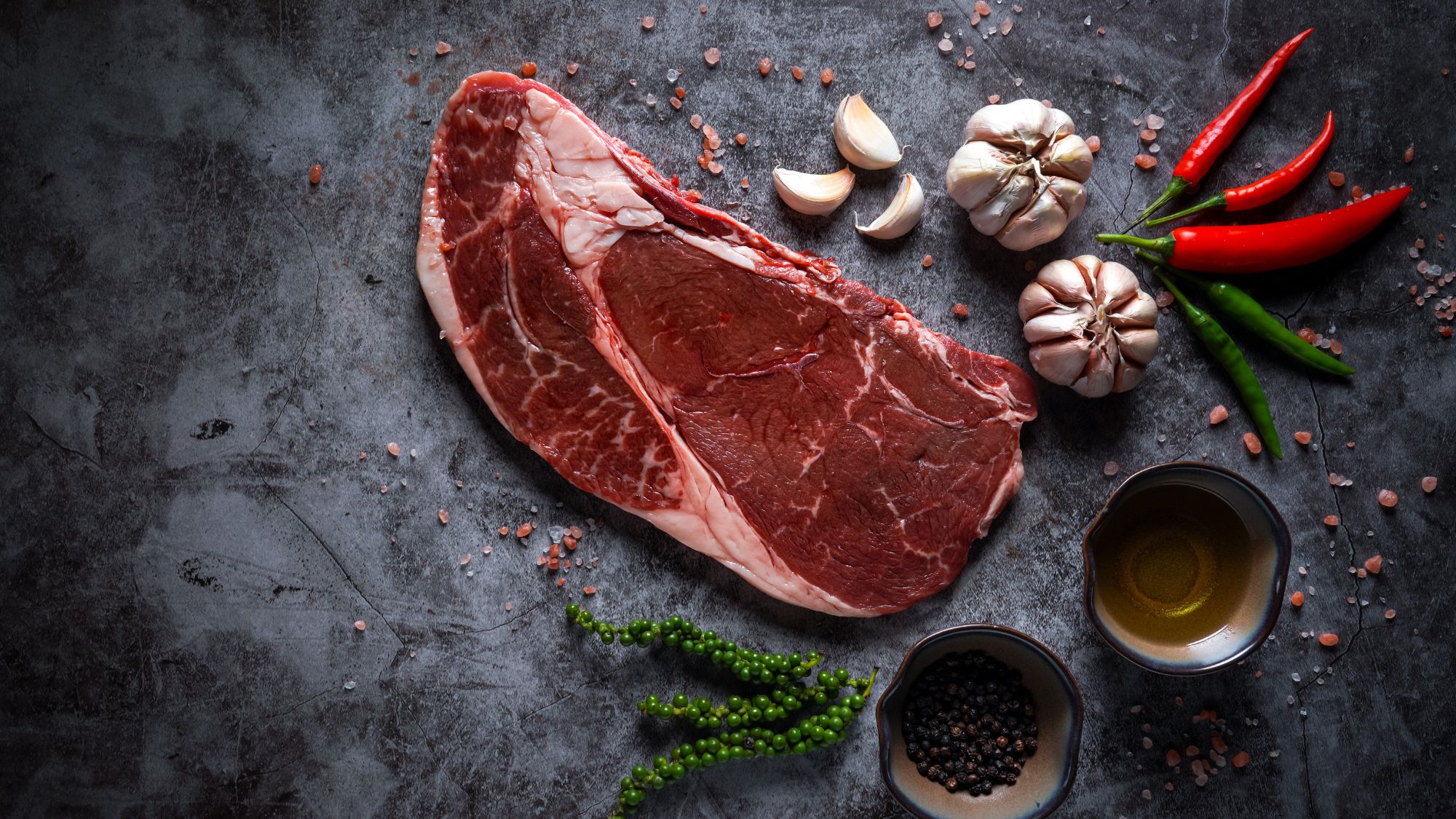
Tajima wagyu is 'super-premium' beef
In October, a Japanese steak restaurant opened in London's Mayfair that is "so discreet, the only outward sign of its existence is the name in Japanese on a brass bell plaque", said Damian Whitworth in The Times. But as the media swiftly noted, there is "nothing restrained" about the prices at Aragawa, the first overseas outpost of a lauded Tokyo eatery. Steaks here start at £500, and go up to £900 for a 400g sirloin. The reason for these prices lies with the beef, which comes from the "super-premium Tajima strain of wagyu cattle". The cows are "reared indoors with all manner of fussing" – including "soothing music" and "exquisite hoof trimming". The result is exceptionally well marbled meat, which is cooked in a kiln fired with Japanese binchotan charcoal. The chef uses no temperature gauges, as he claims he can tell how done a steak is by the "sound of the sizzle on the coals". My £760 sirloin is actually "sensationally good: buttery, meltingly soft" – but unless you're a steak connoisseur with exceptionally deep pockets, I think it would be wiser to spend the money "on a return flight from London to Tokyo".
A free daily email with the biggest news stories of the day – and the best features from TheWeek.com
The perfect roastie: a definitive guide
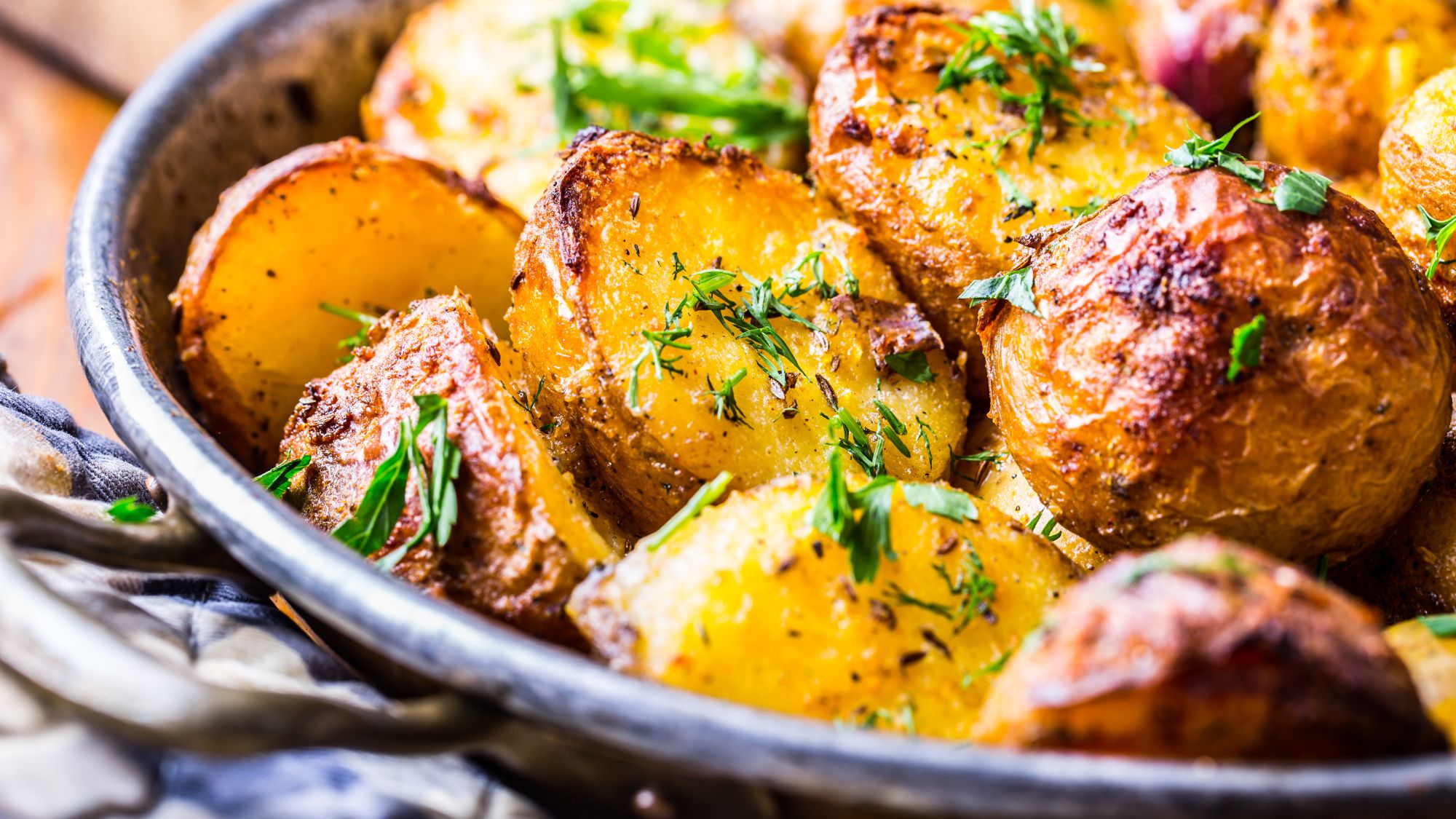
How to roast potatoes is a highly contentious question in Britain
How to cook the perfect roast potato? It's a simple question, but in Britain, a highly contentious one, said Eleanor Steafel in The Daily Telegraph. From the fluffing technique to the type of fat, every stage inspires strong feelings. I recently conducted my own experiment to see if I could nail the perfect roastie – and "10kg of potatoes and two litres of fat later", I believe I have got it. Variety is the "least important element": Vivaldis and Désirées have a nice buttery texture, but Maris Pipers and King Edwards also work well. What does matter is how you cut the spuds. I reckon that following Nigella's advice, to "cut each potato into three by cutting off each end at a slant so that you are left with a wedge or triangle in the middle", results in the best balance between crunch and fluff. Then introduce the potatoes to cold, well-salted water, bring to the boil and cook until you can "easily fluff up the edge" when you lift one out. Drain, and cool in a colander for ten minutes, then put back in the pan and, with the lid on, shake the pan vigorously so that the "edges get beaten up": this is the all-important "chuffing". Now cook the spuds in a tray containing 1cm of sunflower oil, which you've preheated for at least 15 minutes at 220°C/200°C fan. Roast for 50 minutes, turning once after 30. Remove, sprinkle with salt, and serve.
A 'flavour-bomb' of a seasoning
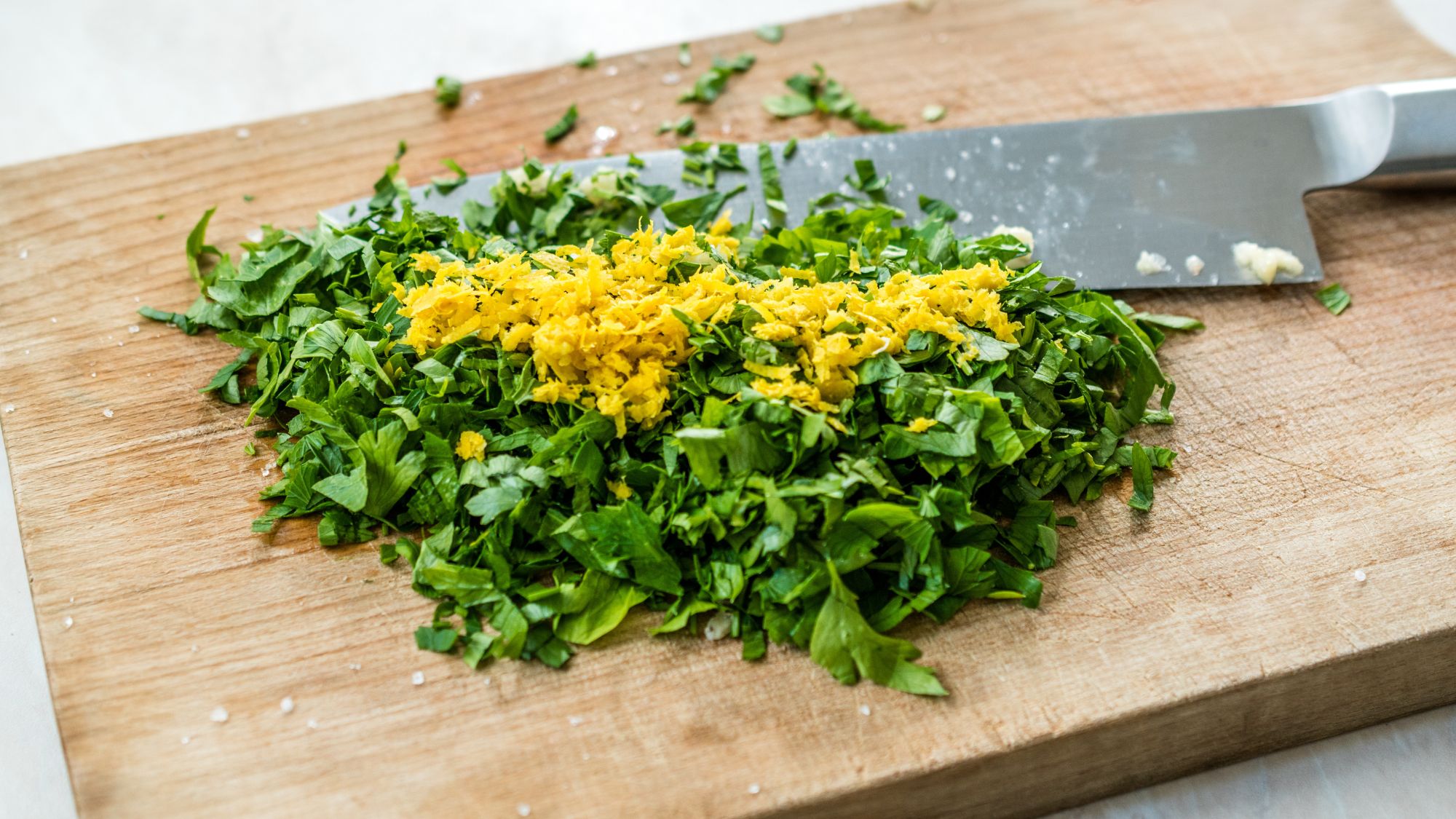
Gremolata is a mix of parsley, raw garlic and lemon zest
Parsley stalks and lemon peel often end up getting thrown away, said Tom Hunt in The Guardian. That's a shame, because they can easily be "upcycled" into a "magical seasoning that is somehow far more than the sum of its parts". I am talking about gremolata, a mix of finely chopped parsley, raw garlic and lemon zest. In Italy, this "belter of a flavour-bomb" is traditionally used as a garnish for ossobuco alla milanese – or slow-cooked Milanese veal shank. That gives you an idea of what it pairs with: basically, any fatty cut of meat or fish, or fried vegetables. I like it with pig's cheek, sprinkled over beef brisket, or with a fish head that has been braised in herbs, butter, garlic and white wine. It's also pleasingly adaptable, so use lime or grapefruit zest if you don't have lemons, and substitute any soft herb for parsley. To make gremolata, separately chop 15g parsley stalks, 10g lemon zest and 1 garlic clove – aiming for about 1mm dice. Combine the ingredients, toss them with 1tsp sea salt, and store in the fridge until it's ready to use.
The horrible ubiquity of balsamic vinegar
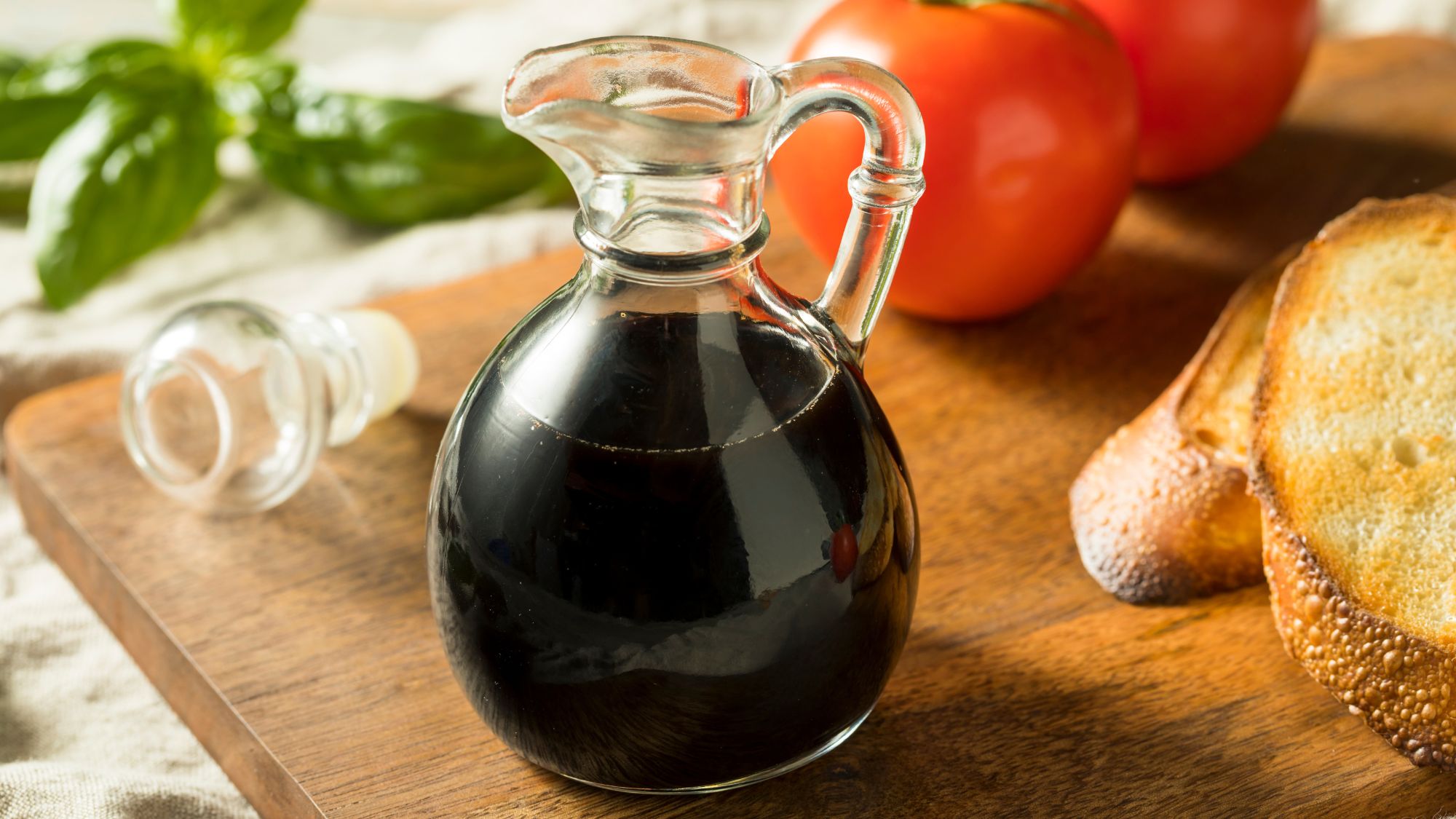
Restaurants have a tendency to put balsamic vinegar on practically everything
A recent poll found that a quarter of all Brits regard balsamic vinegar as an "essential store cupboard ingredient", said Julie Bindel in The Spectator. Clearly, a lot of people are very partial to the "dark, syrupy fermented grape juice" – yet when I started travelling in Italy in the 1980s, it was impressed upon me that "unless you are in the region of Emilia-Romagna in northern Italy", you should not ask for "balsamic vinegar to dress your salad". Today, that invaluable rule is cheerfully ignored right across the Mediterranean. You're probably thinking: if you don't like balsamic vinegar, for goodness sake, just don't use it. But "if only it were that simple". Restaurants have a tendency now to put it on practically everything, invariably without asking first. I once ordered a full English breakfast in Margate, and found that my crispy bacon had been smothered with "balsamic glaze". Many a "gleaming-white burrata" has been "defiled by it", and a waitress once ruined an otherwise delicious-looking Eton mess by drizzling it with the "black stuff". Worse still is the latest craze, which is to put balsamic in cocktails. "If anyone ever puts a drop of the devil's spawn anywhere near my Negroni", I'll not be answerable for my actions.
Ready meals in French bistros
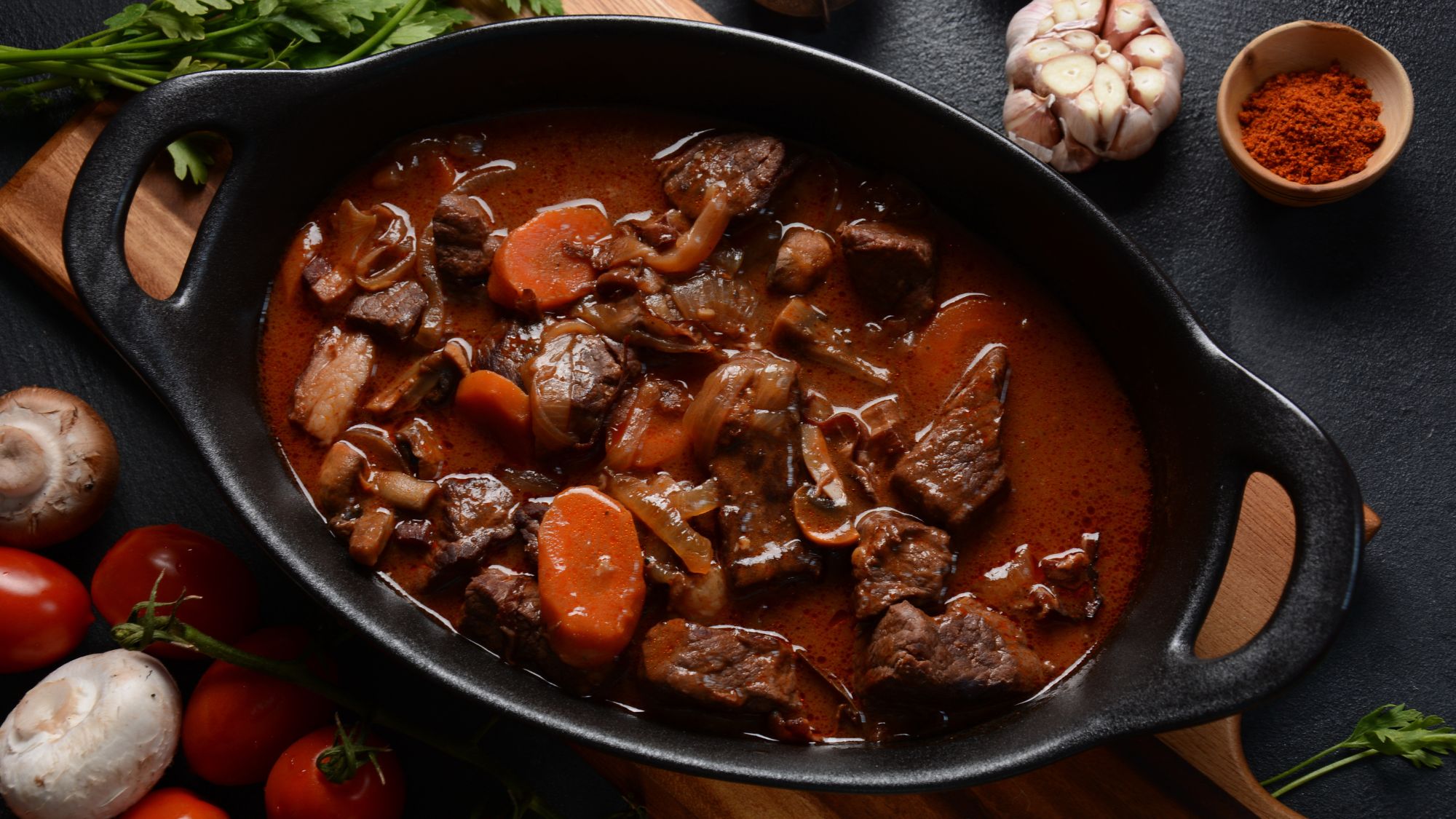
Basic dishes, like boeuf bourguignon, are the most likely to be bought in
"The French have long fretted that their celebrated cuisine is being undermined by fast food," said David Chazan in The Times. But it seems that it's not just at foreign imports such as McDonald's that they risk being served "industrially produced" fare. The Association of Master Restaurateurs has estimated that only 4% of the country's 175,000 restaurants serve only dishes entirely cooked from scratch; and last month, the government announced plans to compel restaurants to label those dishes that were bought in, or made with factory-prepared ingredients. Many restaurateurs have welcomed the proposed new rule – because they can't compete on price with their rivals who are serving ready meals without telling their customers, said Julie Van Ossel on Euronews. It's unlikely to come into force until 2025, however. Until then, here are a French foodie's tips for avoiding factory-made when you're dining in a French bistro. Be wary if there are too many choices on the menu (say, more than 15). Look out for the more basic dishes, as these are the most likely to be bought in: boeuf bourguignon, duck confit or chocolate mousse. These are so well known to be likely ready meals that some restaurants already specify if theirs are home-made. The use of unseasonal ingredients suggests the use of frozen food, as does a low price: a complete menu that seems a bargain is likely to be cheap for a reason. But if in doubt, feel free to ask.
Fine wines from Essex

Charlie Holland will oversee the project
A consensus is emerging that the "clay-bound county" of Essex is "England's Côte-d'Or", said Alice Lascelles in the FT – home to "some of its best still wines". Its "vinous epicentre" is the Crouch Valley: it's here that Californian producer Jackson Family Wines is to plant "65 acres of chardonnay and pinot noir", with the first wines expected around 2028. "When we ran the numbers for sunshine hours, warmth and rainfall, they were just off the scale," said Charlie Holland, who'll be overseeing the venture. As for Essex wines that are available now, Danbury Ridge is a producer to look out for: its "fantastic" 2021 pinot noir (£39; cambridgewine.com) has a "concentration and elegance still rare in English reds". Another great producer is the Riverview Estate: its 2021 pinot noir is a "standout".
Thieves are targeting 'liquid gold'
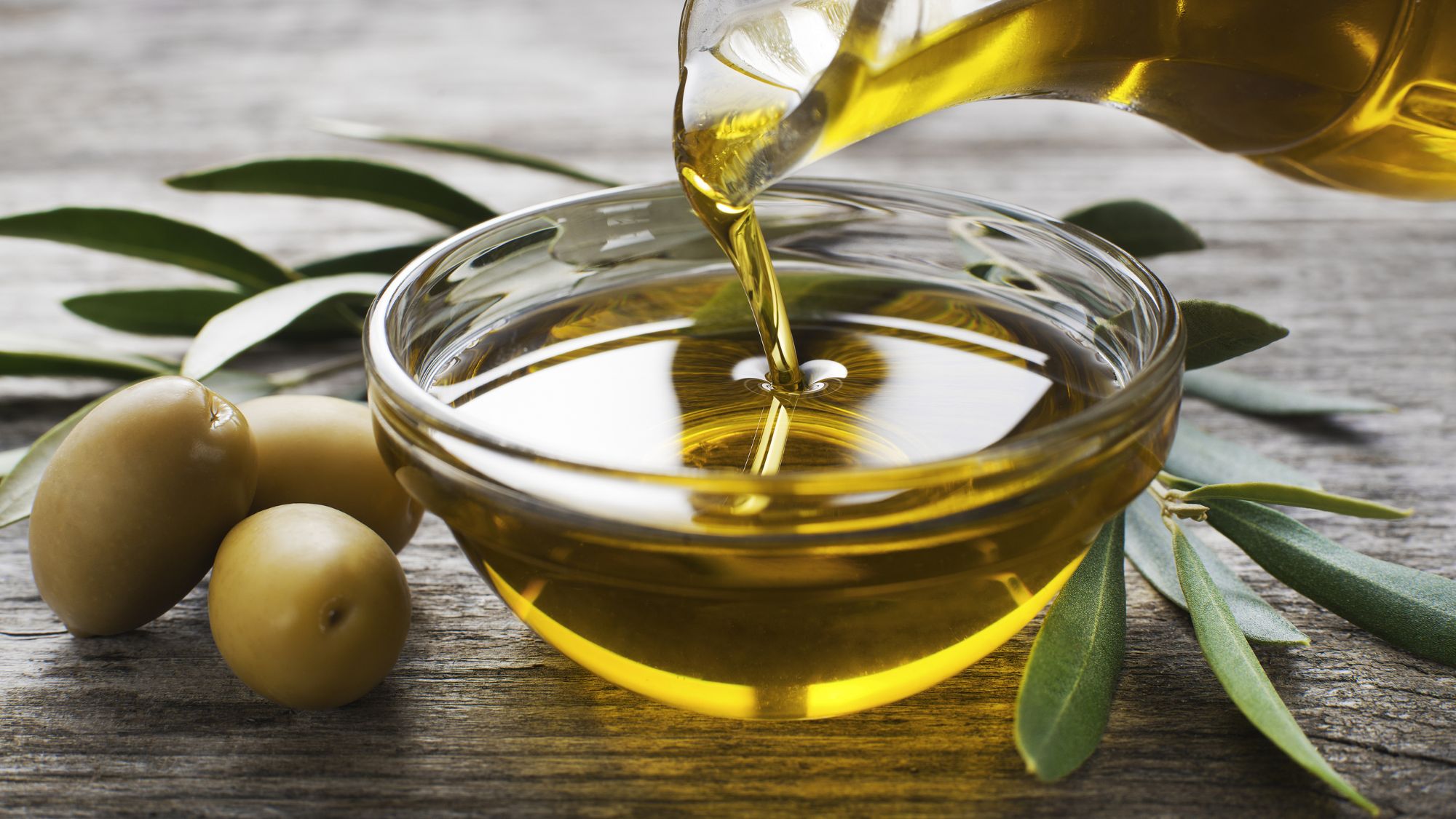
Olive oil producers are bracing themselves for more thefts
The soaring price of olive oil across Europe isn't just hitting the pockets of consumers, said Helena Smith in The Observer. It has also triggered a wave of thefts from producers and suppliers. In Spain, the world's biggest olive oil producer, 50,000 litres of what Homer referred to as "liquid gold" were stolen in August during a raid on a mill in Córdoba. More recently, police seized 74 tonnes of stolen olives in the province of Seville. Similar thefts are on the rise in Greece: at least 37 tonnes of oil recently disappeared from a cooperative in Halkidiki, and 100kg were taken during a raid in southern Messina. There have even been reports of oil being stolen from graveyards, where clerics traditionally stockpile oil for use in vigil lamps. In Greece, the price of olive oil has more than doubled in the past year, following an unusually poor 2022 harvest, which was affected by droughts and record summer temperatures. Prices in Spain have also shot up. With another poor harvest predicted this autumn and winter, producers in both countries are bracing themselves for more thefts. "They don't go for jewellery any more, they go for olive oil," said Kalamata-based reporter Themis Kanellopoulos.
Moët's vintage years
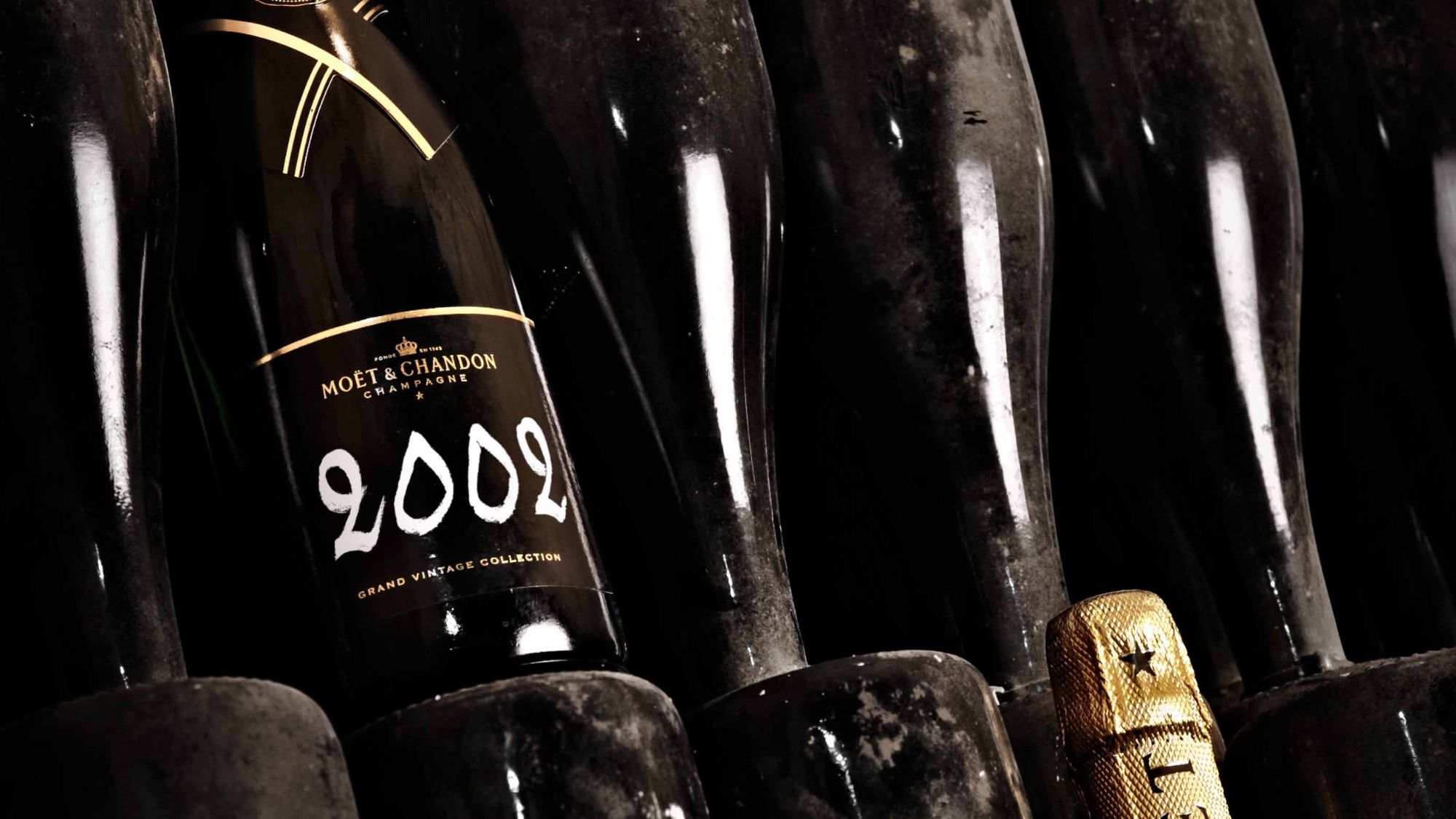
Moët & Chandon's Grand Vintage 2002 Champagne
"No-one is ever sad to see us," said Ethan Boroian, Moët & Chandon's Grand Vintage ambassador, "because we usually bring champagne." He brought plenty of it on his recent visit to 67 Pall Mall, a private members' club in London, which hosted a tasting of 11 of the winemaker's Grand Vintages dating from 1959. He also brought Benoît Gouez, who, as Moët's chef de cave, has stewarded the past 26 harvests from vine to bottle. His role has two principle obligations: to safeguard the consistency of the perennial Brut Impérial, made with grapes from several years – and, in exceptional years, to declare a Grand Vintage and craft a champagne that celebrates the qualities of a single harvest. Often that will follow a meteorologically benign year like 2002, in which "everything was perfect", Gouez said (and that vintage is now in full bloom, "giving everything it can give"). Occasionally, though, vintage-worthy wines can be made despite, or even because of, difficult weather. In 2013, for example, a dire spring and discouraging summer pushed Moët's harvest into October. Hopes were not high, but the slow-ripened grapes produced a delicate, fragrant champagne that conveys an "autumnal mood". It may be the last of its kind, if temperatures keep rising and the grapes have to be picked earlier and earlier. In the 20th century, only one summer, 1976, was hot enough for an August harvest. So far this century, we have had seven.
The best ready-made stock...
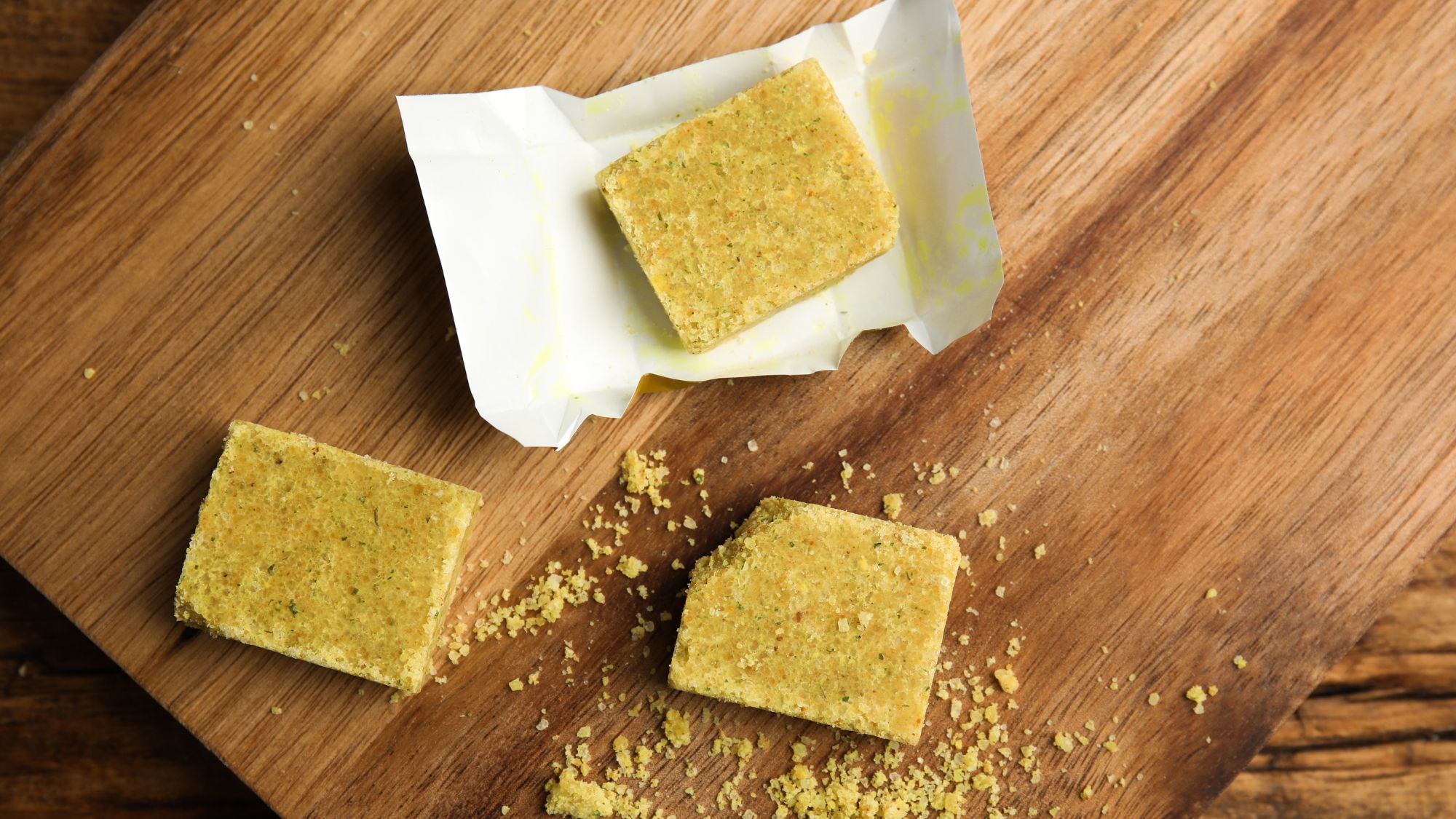
The quality of ready-made stock has improved
There's no doubt that the best chicken stock is the kind you prepare yourself, said Xanthe Clay in The Daily Telegraph. But like most people, I don't always have homemade broth to hand, and so I've learnt to rely on supermarket versions. And these days, there is a "huge array" to choose from – "from cubes to pots to posh pouches" – with prices ranging from 6p per 500ml for the cheapest cubes to more than £4 per 500ml for the priciest brands. Undoubtedly, the quality of ready-made stocks has improved: few are now "laced with monosodium glutamate". Yet, as I discovered when I conducted a taste test recently, that doesn't mean they're all equally pleasant. I would steer clear of the pouches of ready diluted stock: they invariably lack the "gelatinous body of a good homemade stock", and don't seem worth the money to me. If you want to avoid stock cubes, I'd recommend opting for M&S's Concentrated Chicken Stock (£3.75 for a 240g jar, which makes 3.42 litres of stock). Although not delicate, it will produce a strong-flavoured stock that's "perfect for a cracking chicken gravy or an Asian noodle soup". Of the cubes I tried, two stood out: Kallø Organic Chicken Very Low Salt, which would make a "subtle base for a creamed soup"; and Sainsbury's Chicken Stock Cubes, which taste "gently chickeny", and at £1 for a pack of ten, represent impressive value.
...and the best supermarket butter
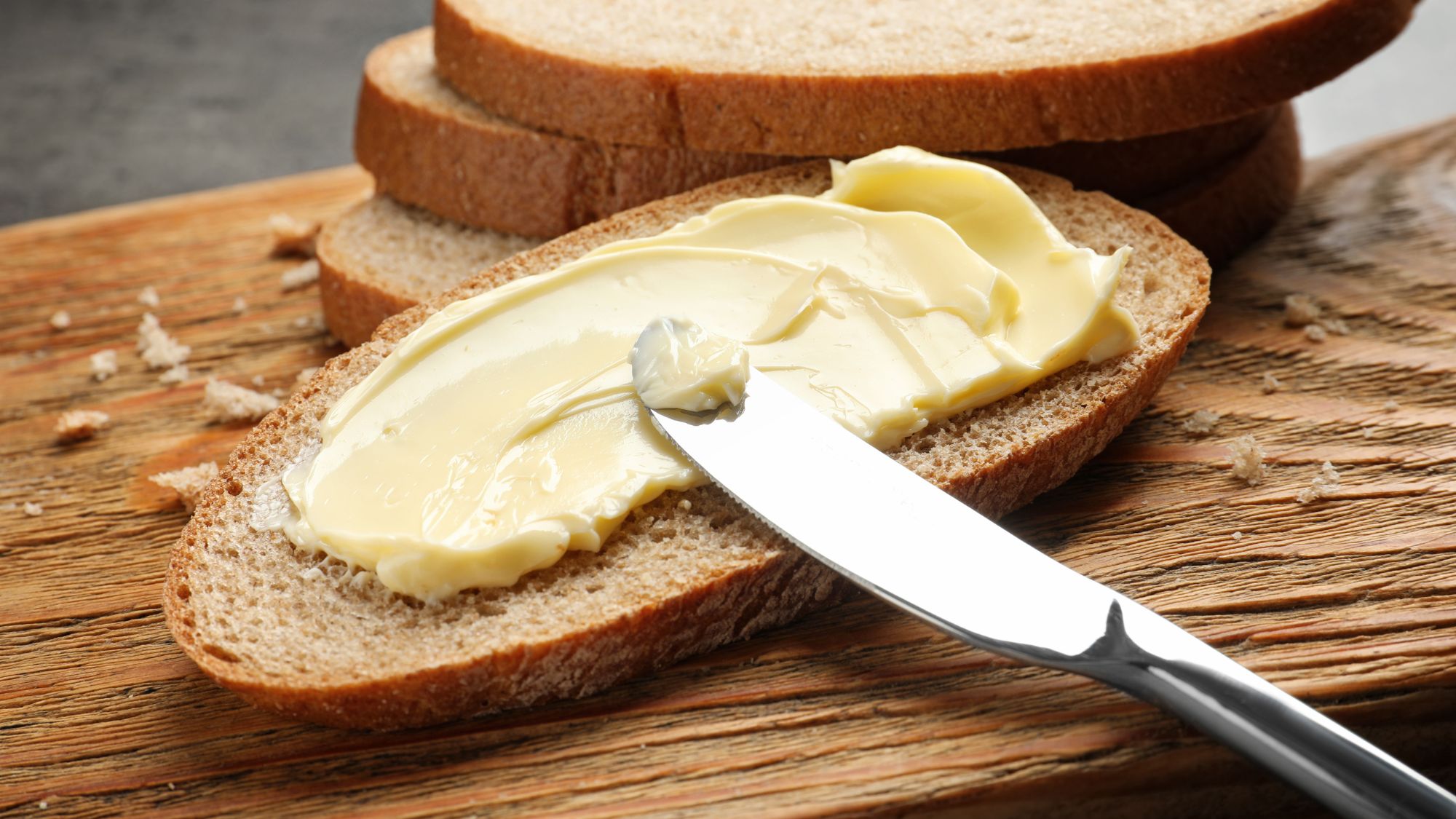
Really good butter makes all the difference to a slice of toast
Given how much prices have shot up recently, many shoppers will be keen to make their "pennies count" when it comes to choosing butter, said Tony Turnbull in The Sunday Times. But in the search for a bargain, it would be a mistake to forego quality. After all, a really good butter does make all the difference to a slice of toast. I sampled several supermarket butters, and of those on test, one stood out. With its "salty kick, sweet creaminess and lovely lactic tang", M&S Food Collection French Butter (£2.90 for 250g) "has it all". In second place came Waitrose Salted French Butter (£2.45 for 250g), which is a "flavoursome butter for the savoury-toothed". Another high scorer was "sweet, creamy" Kerrygold Irish Butter (£2.40 for 250g at Sainsbury's): among the big brands, it's "my go-to". One to avoid is Lurpak Slightly Salted (£1.70 for 200g from Ocado), which I found "wan, greasy and bland".
Snails come out of their shells
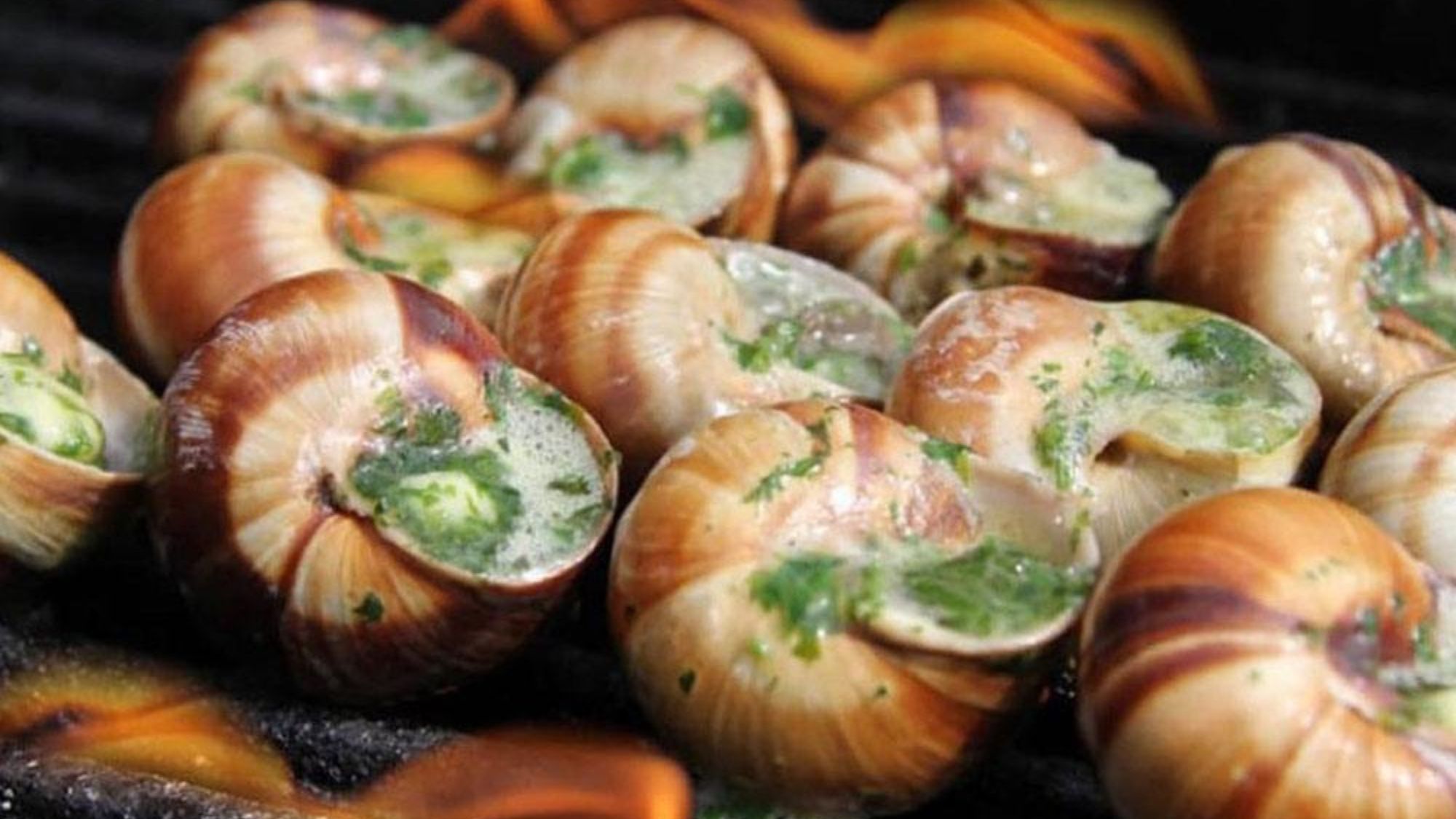
Dorset Snails are 'painstakingly' raised
For many decades, there has been little appetite in Britain for eating snails, said Sue Quinn in The Daily Telegraph. While the gastropods may have been holiday treats for some, most people have regarded them as little more than "garden pests". Yet now, many restaurants are serving them – and in "inventive but properly delicious" ways, instead of just smothering them in garlic butter. At Maison François, in central London, snails come piled onto flatbreads with lardons; Estelle Manor, in Oxfordshire, "anoints them with butter infused with shiso". Snails are also newly popular with home cooks – a trend that began in lockdown, when people had time to experiment in the kitchen. Two other things have helped their resurgence: the fact that snails are more sustainable than "our usual meats", as raising them requires little land and resources; and the emergence in the UK of a number of "top-quality" producers. One of these is Dorset Snails, which sells 12,000 snails a week to restaurants and consumers. Its snails, which are "painstakingly" raised on an indoor farm in the countryside, bear no resemblance to the "tiny, wrinkled things you may have tried across the Channel"; they're "plump, flavoursome" and "incredibly tender".
How to dress up the humble crumble
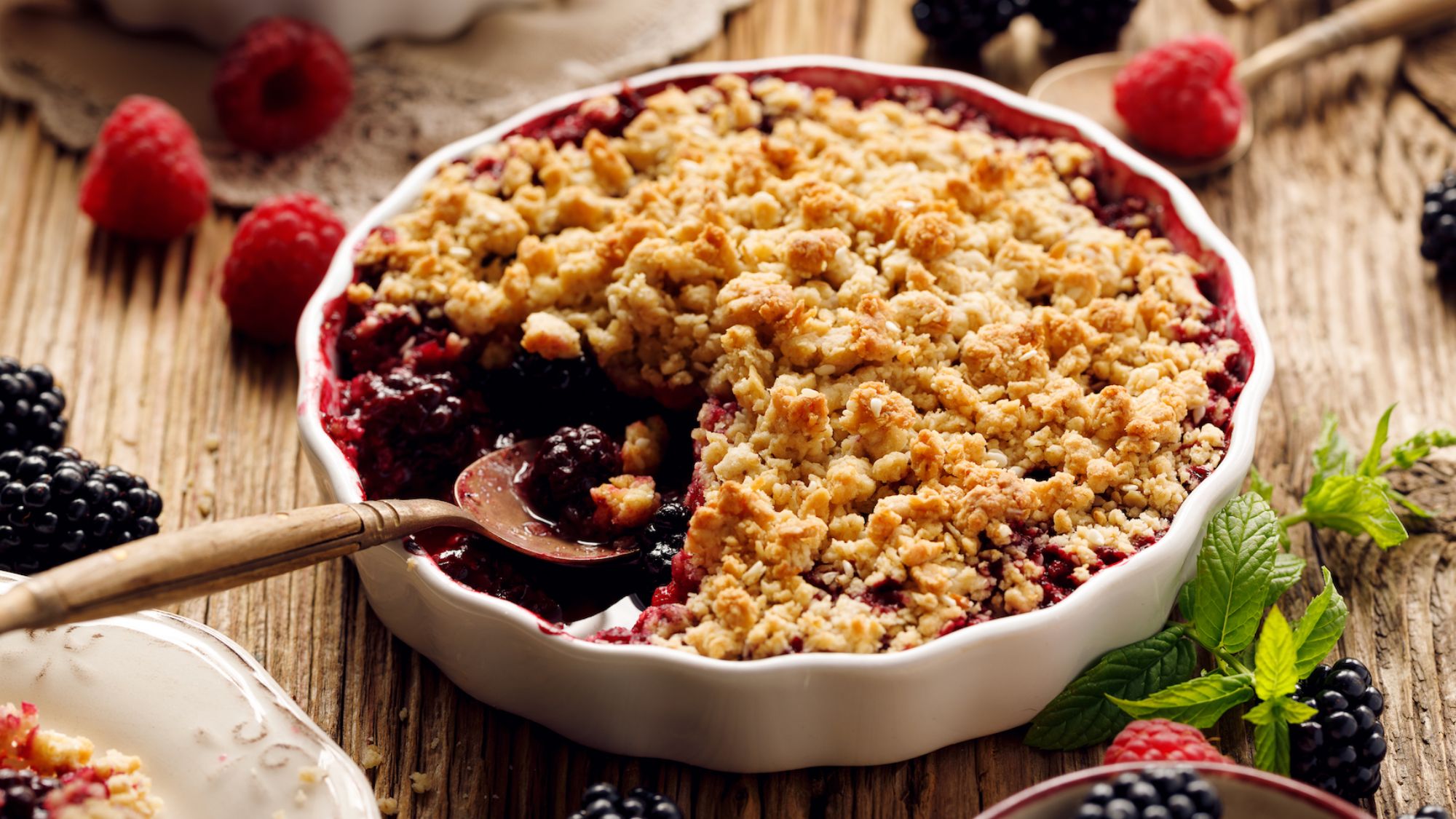
'There are all manner of ways to up your crumble game'
Crumbles are one of the best-loved puds, in part because they're so gloriously "simple to rustle up", said Anna Berrill in The Guardian. Some people see no need to deviate from the standard version, but for those keen to try something new, "there are all manner of ways to up your crumble game". One of the easiest, according to "Bake It Better" author Matt Adlard, is to give the topping added texture: he recommends including roasted hazelnuts for a "really toasty, nutty flavour". Other chefs like to play about with the standard topping ingredients. Yotam Ottolenghi says substituting palm sugar for caster sugar will result in a crumble top that's "gooey in places and crisp in others" (he also adds desiccated coconut, cacao nibs and coffee grounds). Anna Higham, the owner of Quince Bakery in London, recommends trying different flours. Wholemeal, she says, is an ideal match for rhubarb and ginger, while buckwheat is "really delicious" with apples. Higham further refines her apple crumble by grating half a quince into the base – it makes it "floral and multidimensional", she says – and, when she's "feeling fancy", she adds a "bit of booze, such as brandy or whisky".
A more relaxed approach to recipes
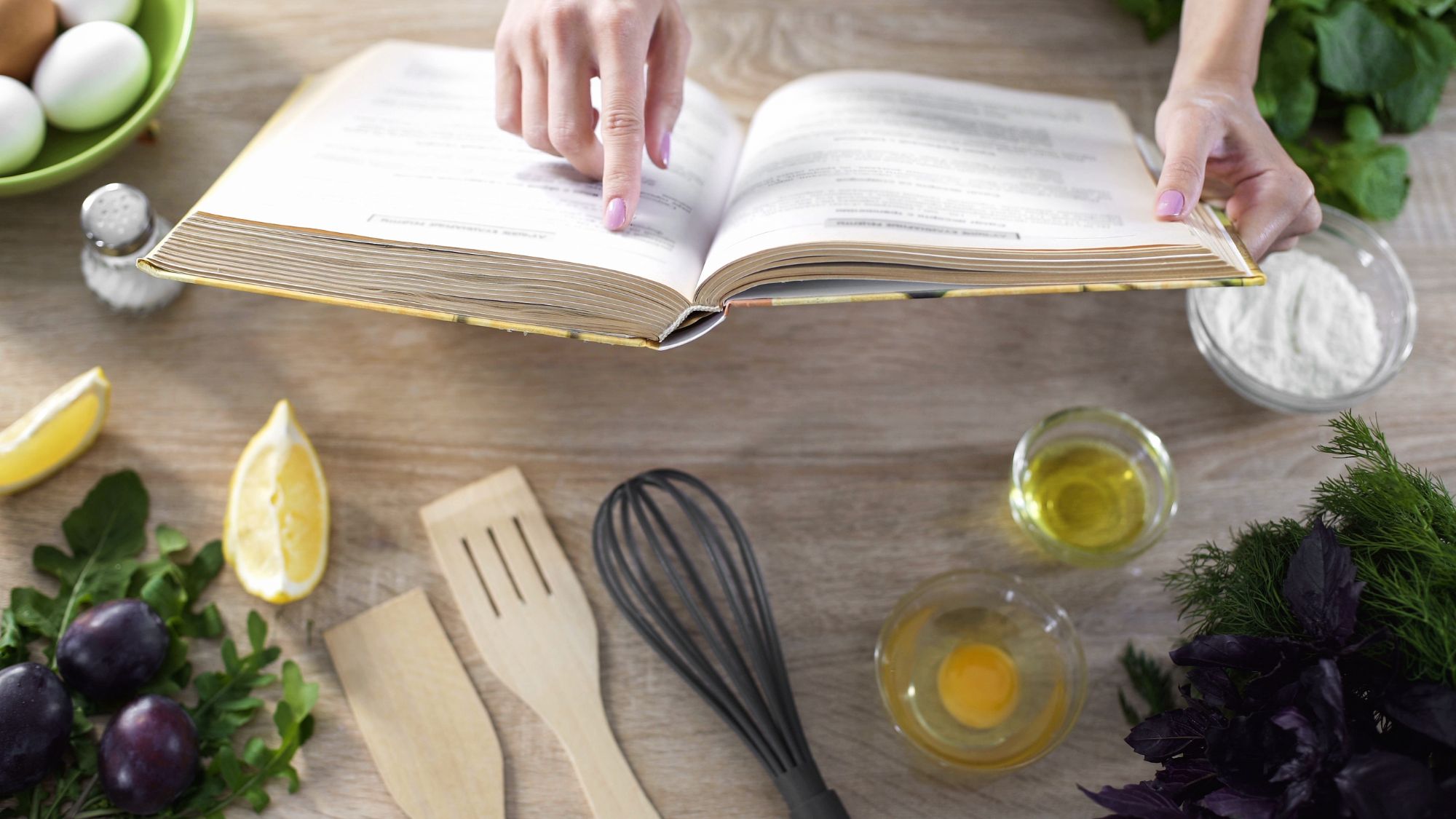
Recipes don't have to be followed to a tee
It's easy to find yourself regarding recipes as "commandments" that seek "to dictate how you live", said Bee Wilson in The Wall Street Journal. But as I've come to realise, they're "really just suggestions", and they absolutely don't have to be followed to a tee. Cooking becomes more relaxing and rewarding when you learn to adapt recipes "to suit your own cupboard and tastes". Other than salt, and perhaps oil, no single ingredient is indispensable. "Any tender green herb can be substituted for any other tender herb". If you run out of lemons, there are "half a dozen other things" that can replace them: another citrus fruit, vinegar, tamarind, or a "few pieces of pickle or preserved lemon". Even onions aren't as crucial as one might assume: during lockdown, when I couldn't find any, I achieved the "multi-layered onion experience" by starting recipes off with sweating spring onions and later adding crispy shallots from a Chinese supermarket. Learn to substitute, and you'll seldom have to rummage around the back of the fridge, or make "panicky trips to the supermarket".
New Zealand pinot gris: a 'food matcher's heaven'

Such is the popularity of New Zealand sauvignon blanc, said Susy Atkins in The Daily Telegraph, that it's easy to overlook "another grape variety which performs excellently in the land of the long white cloud". Pinot gris – New Zealand's third most widely planted white grape after sauvignon and chardonnay – is the grape that in Italy is called pinot grigio. But while Italian pinot grigios are often bland, the best New Zealand pinot gris is deliciously creamy in texture and has a wonderful "citrus flourish". These wines are also a "food matcher's heaven": try them with roast pork, creamy chicken pies or rich cheese quiches – or with any type of seafood. Villa Maria Pinot Grigio 2022 has the flavour of cooked orchard fruits, but with a "zippy acidity that keeps it succulent and fresh". Waimea Pinot Gris 2022 is a relatively dry example, with "crunchy green apples and pears", and hints of tropical passionfruit. Opawa Pinot Gris 2022 is a complex mix of delicious fruits, with a "zingy lime note streaked through it".
A champion pizza chef in west London

"Naples may be the home of pizza, but it is not home to the world's greatest pizza chef," said Giulia Crouch in The Times. Instead, you'll find the new holder of that title on a "sleepy street in west London". Michele Pascarella, who emigrated from southern Italy when he was in his early 20s, saw off thousands of other entrants to win the "pizza-maker of the year" category at last month's 50 Top Pizza World 2023 awards. The "prestigious" accolade was bestowed upon him after judges had made a series of undercover visits to Napoli on the Road, his pizzeria in Chiswick (he owns a second branch in Richmond). They described him as a "pioneer of contemporary pizza", having sampled from his "creative and seasonal" menu. It includes a pizza topped with finely cut raw steak, and another with lamb ragù. In Naples, these would surely "raise eyebrows" among traditionalists; Pascarella says that working in Britain has allowed him to express himself "in terms of flavour". I, however, decided against trying one of his more experimental creations, and ordered a margherita, which I believe is the "best way to test quality". Puffy and light, and "nicely balanced between sweet and acidic", it was the "best pizza" I had eaten in some time – and I had just returned from Naples.
Eat yoghurt to avoid garlic breath
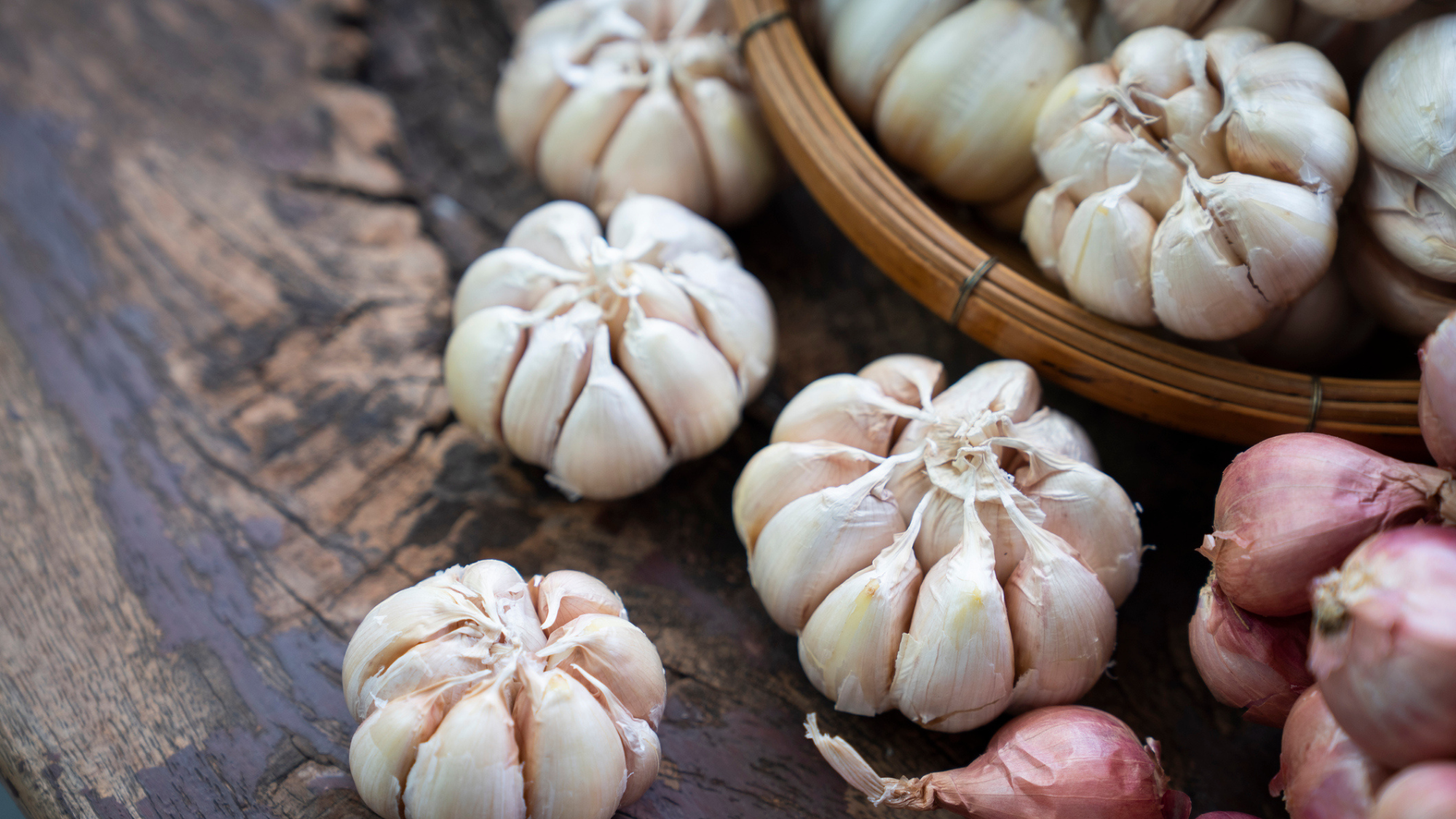
The "fear of romantic rejection" leads many people to avoid garlic on a date, says Linda Geddes in The Guardian. But according to new research, there's another way of dodging garlic breath, which is to immediately follow up any garlicky food with a spoonful or two of yoghurt. The team at Ohio State University tested the capacity of the water, fat and protein molecules in yoghurt to neutralise the sulphurous compounds in garlic, which are responsible for allium's distinctive odour. Their results suggest that the molecules bind to as many as 99% of the odour-producing volatiles in raw garlic, virtually eliminating the smell. The team said that high-fat yoghurts are likely to be the most effective, and also stressed that the yoghurt should be consumed "as soon as possible after the garlic". Previous research has found that milk, raw apple and mint also have a deodorising effect on garlic.
From cabbies' pit stop to hip café

Among inner London's distinctive landmarks are the green-painted huts, known as cabmen's shelters, which serve hot drinks and snacks to the city's black cab drivers, says Ed Cumming in The Daily Telegraph. These were originally established in the late 19th century, to provide "good and wholesome refreshments" to the drivers of horse-drawn hansom cabs. By 1914, there were more than 60 dotted across the city, but many were damaged in the Second World War, and since then the majority have been demolished. Today, just 13 remain, with 12 still operating as pit stops for cabbies. The thirteenth, on the north bank of the Thames in Chelsea, fell into disuse when a change in parking restrictions on Chelsea Embankment meant that vehicles could no longer stop outside it. But now it has been revived by two Londoners – Melis Kürüm and Cem Kemahli – who first spotted it during lockdown, and sought permission from the Cabmen's Shelter Fund to turn it into a café open to the general public. Café Pier, which opened this summer, sits in an "enviable location" on the river. Its "short but appetising" menu of toasties, focaccia sandwiches and natural wines is proving popular with dog walkers and joggers. And even the odd cabbie has paid a visit – though they have had to "park further away" than in days gone by.
The new caviar enthusiasts

The 'black gold' is making a comeback
In the past, demand for caviar was led by oligarchs and "hedge-fund yuppies", said Ben Clatworthy in The Times. Today, the "black gold" is making a comeback – and somewhat unexpectedly, its most enthusiastic "champions" are well-heeled members of Generation Z (who were born between the mid-1990s and the early 2000s).
Leonid Shutov, of Bob Bob Ricard in Soho, said his restaurant is seeing rising demand among young diners for its three varieties of caviar, something he puts down to Gen Z'ers having an appreciation of all things "old school". It may also be the case that "unlike cigars, whisky and copious amounts of red wine", caviar is a luxury that is "actually good for you", rich as it is in antioxidants and omega-three fatty acids.
Predictably enough, the trend is being driven by social media influencers. One of the most prominent is Danielle Zaslavskaya – the "Queen of Caviar TikTok"– whose grandfather was one of the Marks who founded the US firm Marky's Caviar. Her videos offering advice on caviar-related matters – such as how to open a jar or the best food to pair with it – regularly receive hundreds of thousands of hits.
End of the road for food art

Mobile photography makes it possible for a casual food shot
Taking good pictures of food was once hugely challenging, said Tim Hayward in the FT. "Elizabeth David famously despised photographs of food" – and "well she might", because "for most of the time she was writing, food photography was awful". Owing to the technical limitations of the time, food had to be propped into place in a studio, and often sprayed with oil or varnish to have a hope of looking remotely appetising.
In the 1990s, however, it became possible to take "properly delicious pictures of food", which was great for professional photographers, who were able to capitalise on that decade's food renaissance. Then the iPhone came along and, "with terrifying speed", it made it possible for a casual shot, snapped in a poorly lit restaurant, to be a "truer communication of deliciousness than even the most beautiful studio shot". Before long, AI will be doing this too.
This strikes me as a pity. Not only are the livelihoods of professional photographers threatened, but I fear that the art of food photography is now stuck in a rut. Fine arts responded to the advent of the camera by dumping realism and experimenting with impressionism, dadaism and so on. Food photography, constrained as it is by the need to convey deliciousness, can't have anything like that. We've run out of road.
The blight of the self-checkout

Are self-checkout tills automation of the 'wrong sort'?
Reports suggest that "aggression towards staff at supermarkets is on the rise", said Mary Dejevsky in The Spectator. No doubt there are many reasons for this – but I wonder if the rise of self-checkouts has contributed to the problem. I am "one of those dinosaurs" who detests these tills. A visit to one is invariably "punctuated with annoying glitches", from accusations about "unfamiliar objects in the bagging area" to the need to look up "loose items" – which isn't always easy: I recently found a cheese scone hidden away in "bakery (sweet)".
As well as making the whole process unnecessarily long and fraught, I suspect that these checkouts encourage shoplifting, because "customers get so cross with the machines", they start to feel that popping "prawns or asparagus in their bag, having scanned them as potatoes" is justified payback. Automation isn't a bad thing in itself; more of it would undoubtedly benefit much of the UK economy. But could it be that self-checkout tills are automation of the "wrong sort"?
Busting the 'national dish' myth
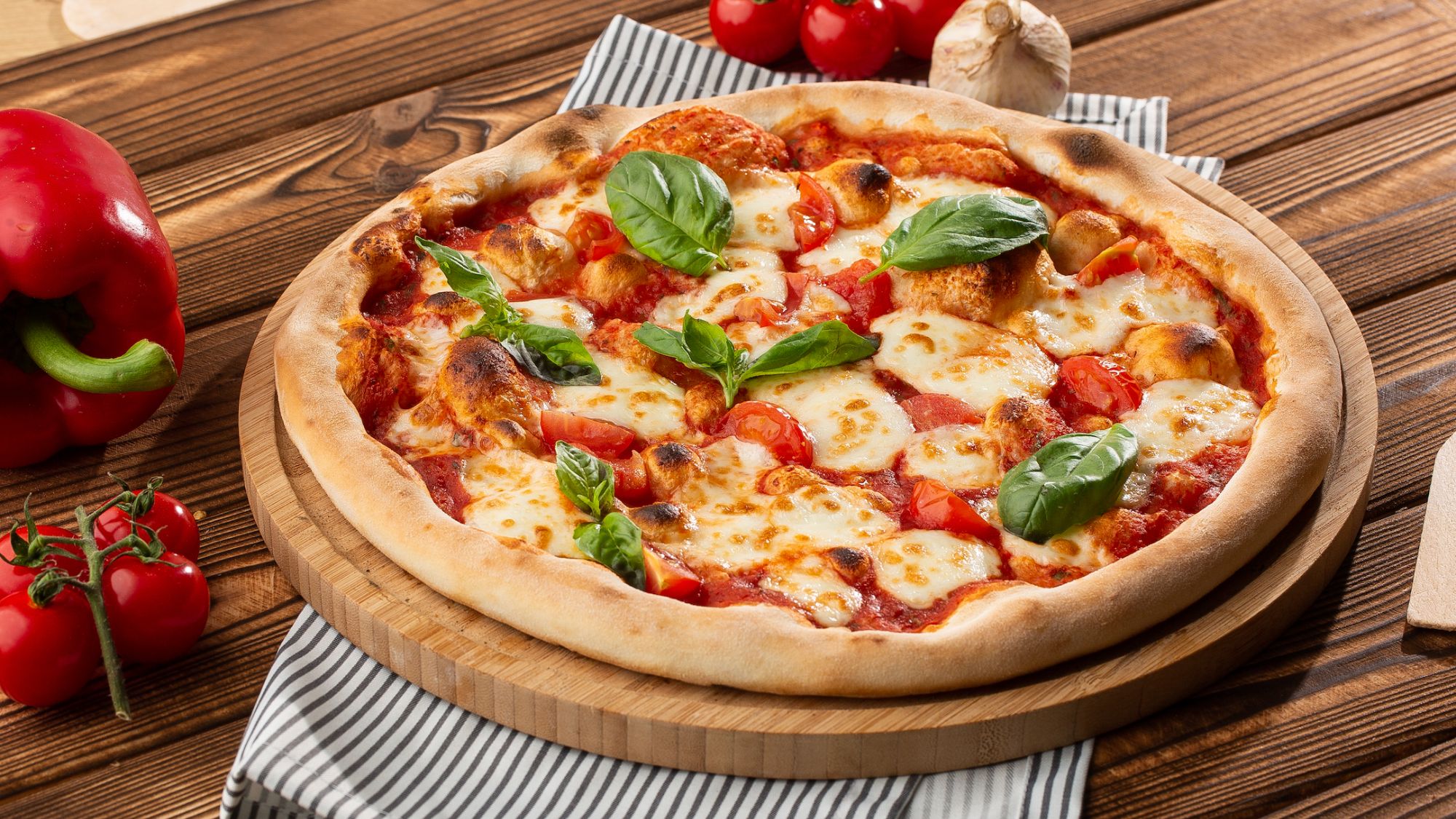
Margherita pizza: fit for a queen?
A variety of foods have been "adopted as symbols of their places of origin", said Irina Dumitrescu in The New York Times. In her entertaining new book, "National Dish", Anya von Bremzen delves into the origins of such connections – and finds that they usually have more to do with "myth and marketing than with historical fact". Legend has it, for instance, that the first margherita pizza was served to Italy's Queen Margherita when she visited Naples in 1889. Its topping – tomato, mozzarella and basil – supposedly represented the colours of the Italian flag. In fact, no such "royal pizza tasting" ever took place: tomato, mozzarella and basil pizzas had long been eaten in southern Italy. The whole story was "cooked up by an enterprising pizzaiolo in the 1930s".
When von Bremzen turns her gaze to Spanish regional delicacies such as Catalan sausage and Andalusian gazpacho, "things get more dispiriting". Such dishes had traditionally been cooked all over the country, but were assigned to specific regions by the women's branch of Spain's fascist movement, as part of its attempt to foster a "politically acceptable form of cultural diversity". It turns out that "if you look into any dish or ingredient deeply enough", you'll unearth a complex – and possibly gloomy – history.
Dinner party crimes

Watch out for warning signs at a dinner party
There are several things that are warning signs of a terrible dinner party, said Julie Bindel in The Spectator: a complete absence of cooking smells when you arrive (because the supper hasn't actually been started on yet); children still up and having to be put to bed; and – worst of all – the sight of the host dipping "a spoon in whatever they are cooking, tasting it, then putting the spoon back in". I would never dream of making such rank errors.
My guests always have something to eat and drink on arrival: chilled wine, or a cocktail, plus "a few snacks for immediate reassurance". I will have pre-prepared as much of the food as possible, so that I can chat while adding the finishing touches, and the table will have been pre-set with napkins and fresh bread. Nor would I make the mistake of not having good-quality salt and pepper on the table. This is a common oversight, and a criminal one – because "how do you ask for seasoning without insulting your host?"
France's glut of unsold wine

French red wine is increasingly being shunned
It would be easy to "assume that wine was an evergreen cash cow for the French", said Clive Martin in The Daily Telegraph. But while that might be true in certain regions – Burgundy and Champagne, for example – many French producers are unable to sell all the wine they make. This year, the problem has become so bad that the French government has spent nearly €200m getting rid of "excess wine", converting much of it into hand gels and biofuels.
There are "geopolitical" factors behind France's "wine glut" – a shortfall of migrant workers, the "rapid de-investment of Chinese money in the market" – but the more fundamental problem is a "shift in drinking habits". In recent years, increasing health consciousness and a greater range of other drinks on offer have caused wine consumption to decline across Europe. The trend is particularly pronounced among 18- to 34-year-olds, who are far more likely than previous generations not to drink alcohol at all.
Not all French wines have been equally affected, however: sales of rosé have increased over the past decade; and sales of white have remained stable. It is the wine that the French produce in the greatest quantities – reliable red plonk – that is increasingly being shunned.
'Liquid investments' for whisky collectors

Diageo’s fourth edition of 'Prima & Ultima' and The Glen Grant 70-Year-Old 'Devotion'
It's been a busy time for whisky investors. Diageo has released its latest "Prima & Ultima" series, and a 70-year-old Glen Grant single malt is going under the hammer at an online auction.
Inspired by the reign of Queen Elizabeth II, The Glen Grant "Devotion" is an "exquisite" whisky presented as a "handcrafted sculptural masterpiece", said auction house Sotheby's. Only seven decanters have been created to celebrate each decade of maturation. Decanter No.1 "stands above the rest" as the only one in the line-up to be finished with "engraved gold detailing" alongside a 20cl chess-piece miniature and a set of hand-blown glasses "mirroring the seven facets on the decanter". Online bidding for The Glen Grant 70 Year Old Devotion closes at 1.01pm (BST) on 22 September, with an estimate of between £70,000 and £110,000.
Meanwhile, Diageo’s fourth Prima & Ultima annual release "has arrived", said Jonah Flicker on Robb Report. The eight-bottle collection of "expensive, rare, aged single malts" from some of company's "most esteemed" distilleries includes the "oldest whisky to date" from the Talisker Distillery – a Talisker 46-Year-Old – and the last ever 1997 vintage from Lagavulin. Only 413 full sets of the Prima & Ultima Fourth Release are available to purchase, for £45,580 each. Collectors should "take note", Flicker added: each bottle comes with a "miniature version" so you can "sample the whisky", but maybe "hold onto the set as a liquid investment".
The insane trend for dog ice cream

“I’m proud of how unreasonably, eccentrically devoted we English are to our dogs,” said Mary Wakefield in The Spectator. But I draw the line at the latest trend in canine coddling: dog ice cream. When I spotted my first tub earlier this summer, “nestled among the Häagen-Dazs in my local supermarket”, I assumed it was a joke. But as I’ve since learnt, the market for dog ice cream is virtually “limitless”, and encompasses every socioeconomic group.
“For the ethical rich, there’s Cool Dog Vegan, retailing at an astonishing £120 for a five-litre tub”; in the mid-market, there’s Billy and Margot’s selection of iced treats (flavours include strawberry and apple, and coconut créme); and Aldi also has its own brand. The online reviews for such products confirm how utterly dotty they are: “These fruity tubs are so appealing to our girls. Lovely ingredients, full of flavour (yes, I taste-tested!)”; “These treats let my fur babies know they’re special.” Reading such sentiments, “I feel like an alien in my own country”.
‘Flat’ wine bottles that are fully recyclable
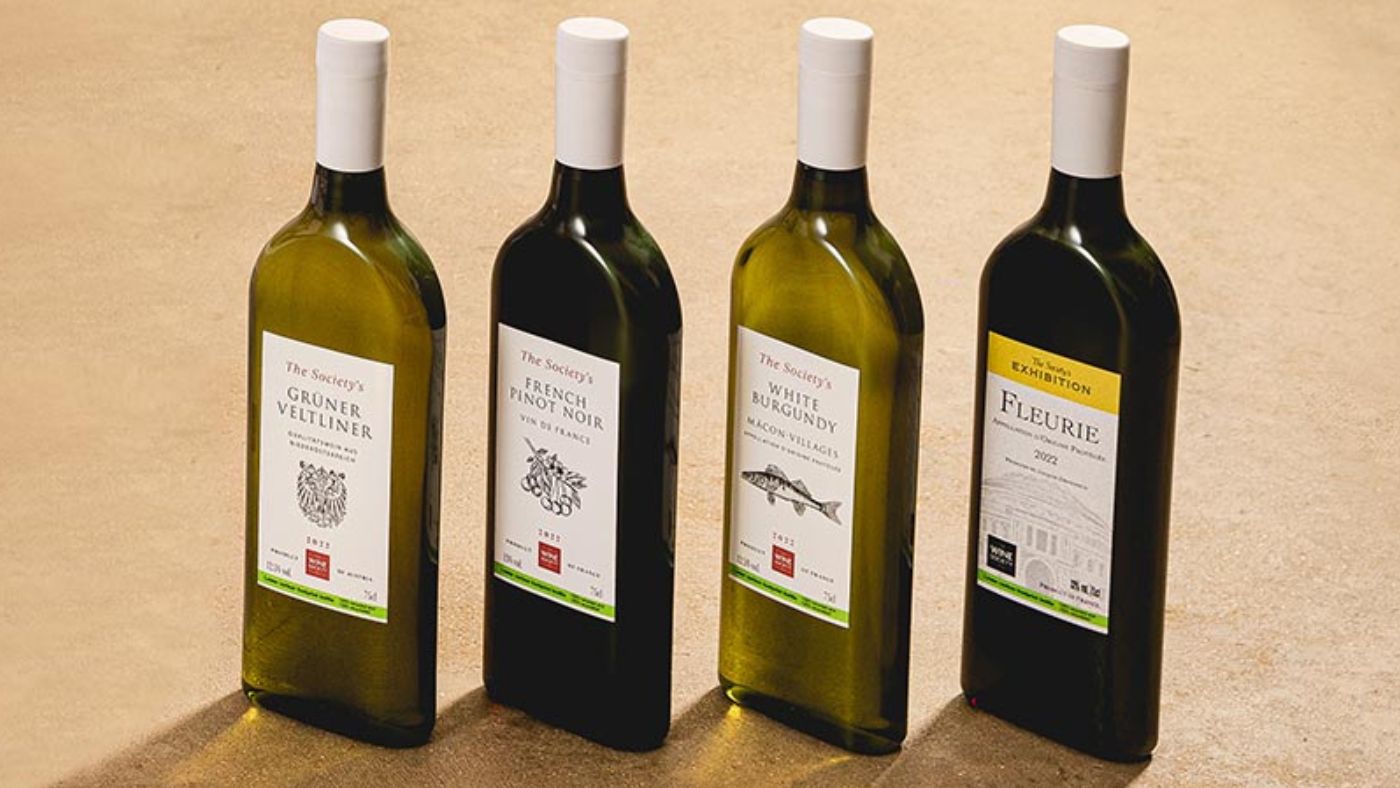
The Wine Society is now selling four of its most popular wines in flat bottles made of 100% recycled plastic. It says the bottles, which are 87% lighter than normal glass bottles and can be more tightly packaged, will cut its carbon footprint. “Light to transport”, said James Bayley on Harpers, the bottle and cap are “fully recyclable” by all local authorities in the UK, “unlike other packaging options like cartons and pouches”. Although a shelf life of up to 18 months for these bottles is “technically possible”, members of The Wine Society are being recommended a “drinking window of six months” for this bottle format.
The world of Le Creuset ‘supercollectors’

French enamel cookware company Le Creuset is a “beloved” brand, said Jill Schildhouse in The Guardian, especially by a “different kind of pothead” turning up the heat in the collecting stakes. Welcome to the world of Le Creuset “supercollectors”, enthusiasts who have invested “huge amounts” to acquire the hand-crafted vessels. Valeria Rodriguez in Germantown, Maryland, has more than 100 pieces of “glossy” Le Creuset cookware, “each a work of art”, in a collection worth $38,000. Linda Claudia Togaoka, who lives in Yokohama, Japan, owns an “estimated” 250 cast iron pieces. And Karyn Wilson from Charlotte, North Carolina, believes she has the “largest collection” of one particular colour in the world: 33 cast iron and 135 stoneware Le Creuset pieces in “cool mint”.
Minimalist menus

As someone who writes about food, I find that “every single day I have to do something that completely boils my urine”, said Tim Hayward in the Financial Times: “I have to read bloody restaurant menus.” At the moment, I’m particularly exercised by the trend for a “kind of adjective-free, mannered minimalism”. Had Botticelli ever been asked to pitch “Nascita di Venere” on a sheet of A4, I doubt he would have typed: “Paint, Canvas. Woman. Scallop.”
So what explains the terse brevity – “Pork, potato, leaves, ferment” – that so often characterises menu descriptions today? Do chefs think that underselling their dishes will help them “exceed expectations” when they’re eaten? Do they imagine a series of “nailed-together nouns” will somehow convey the message “that they are artists”, unaware that it “reads as a very unappealing egotism”? Whatever the cause, it seems “bloody minded” of chefs to give customers so little information.
Restaurant food is “infinitely more interesting” today than it was in the past – so why miss out on the opportunity to describe it? Besides, I’ve long believed that anticipation plays a “huge part” in making food enjoyable. To wilfully ignore this chance to maximise that anticipation strikes me as “beyond perverse”.
The appeal of the Sichuan peppercorn
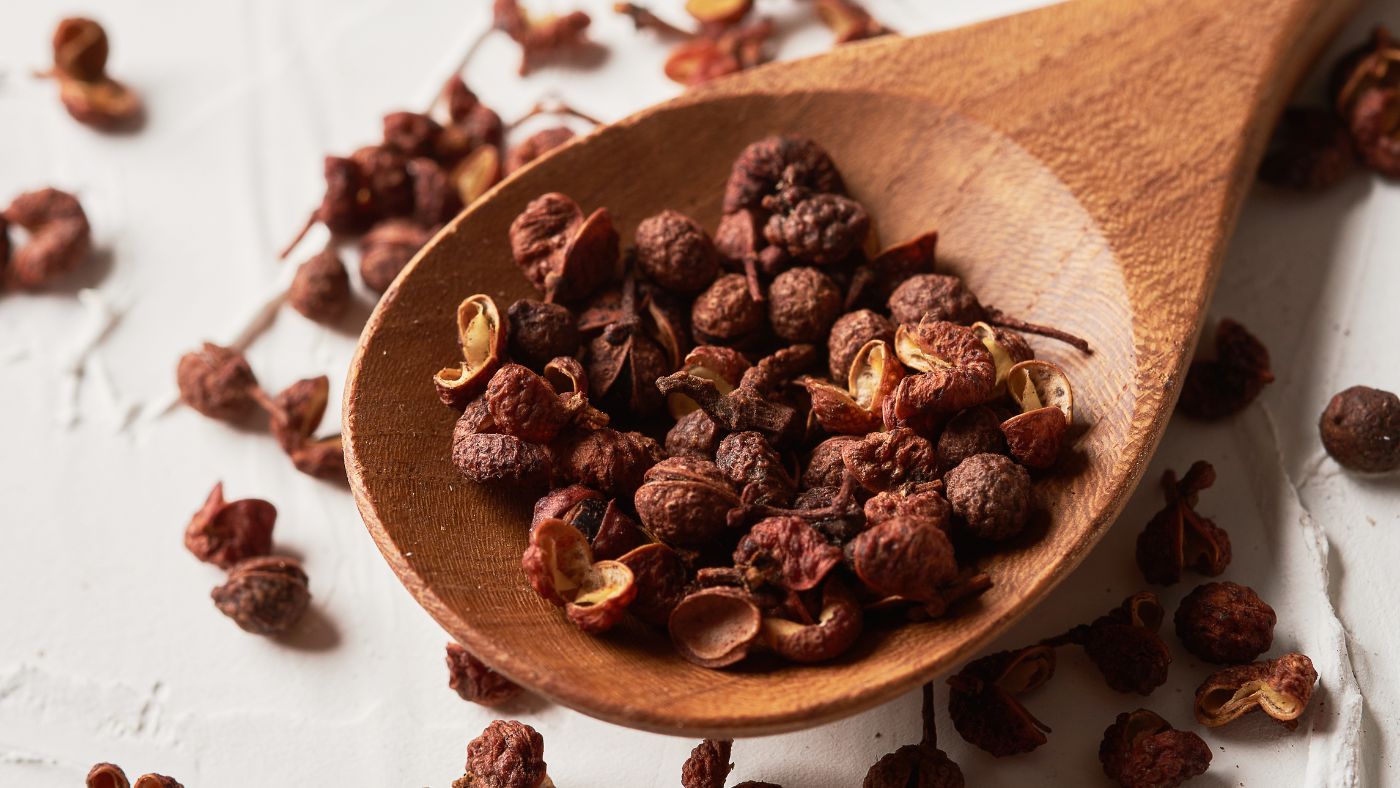
Certain foods are “prized by gastronauts” above all for the sensations they induce, said The Economist. “The appeal of foie gras is partly its lush richness.” Unripe guava, often used in Thai cooking, “has a tannic, mouth-drying quality that balances fiery foods perfectly”.
One of the “strangest and most addictive” foods in this category is the Sichuan peppercorn. Berries of the prickly-ash tree – and part of the citrus family – Sichuan peppercorns contain a chemical named hydroxy-alpha-sanshool, which “induces a tingling numbness in the lips and tongue”. While some people fail to see why anyone would “want to anaesthetise their mouths while eating”, others cannot get enough of their “zingy” intensity. Fortunately for enthusiasts, their use is not confined to the “deliciously complex cuisine of Sichuan”.
Try dry-frying them and then crushing with salt to make a “bracing topping for popcorn”. If you toast some and then mix them with cumin and fennel seeds, dried chillies, anise, sugar and salt, you’ll have an enlivening spice rub for fried potatoes. And thanks to their “lemony intensity”, Sichuan peppercorns also pair well with desserts – whether the “austere richness of dark chocolate” or the “buttery blank slate of shortbread”.
Omelettes: ‘difficult to master’

“There is something about omelettes,” said Ed Cumming in The Daily Telegraph. “Few dishes have more emotional heft.” In film and TV, they are regularly used to denote comfort and care. At the end of “Big Night”, Stanley Tucci’s 1996 film about a struggling restaurant in New York, his character responds to a culinary disaster by silently making a restorative omelette. In 2007’s “Ratatouille”, Remy, the “plucky rat-chef”, cooks an omelette for his friend Linguini on his first day of work. And in “The Bear”, Disney+’s acclaimed drama about a troubled chef in Chicago, the second season climaxes with a character making a French omelette to show “she loves taking care of people”.
Part of the omelette’s symbolic power is that “eggs have obvious clout as metaphors”. But it’s also a dish that sits on an important “fault line” within gastronomy, being “easy to make but difficult to master”. It’s extremely hard to cook an omelette perfectly – in particular to master the contrast between a “silken and loose” middle but with a “hot and springy” exterior. Seasoned cooks believe that “everything you need to know about a chef” will be clear from the way they approach an omelette – which is why, in French kitchens, it has long been used “as a test of prospective employees”.
Japanese bread is coming to Britain
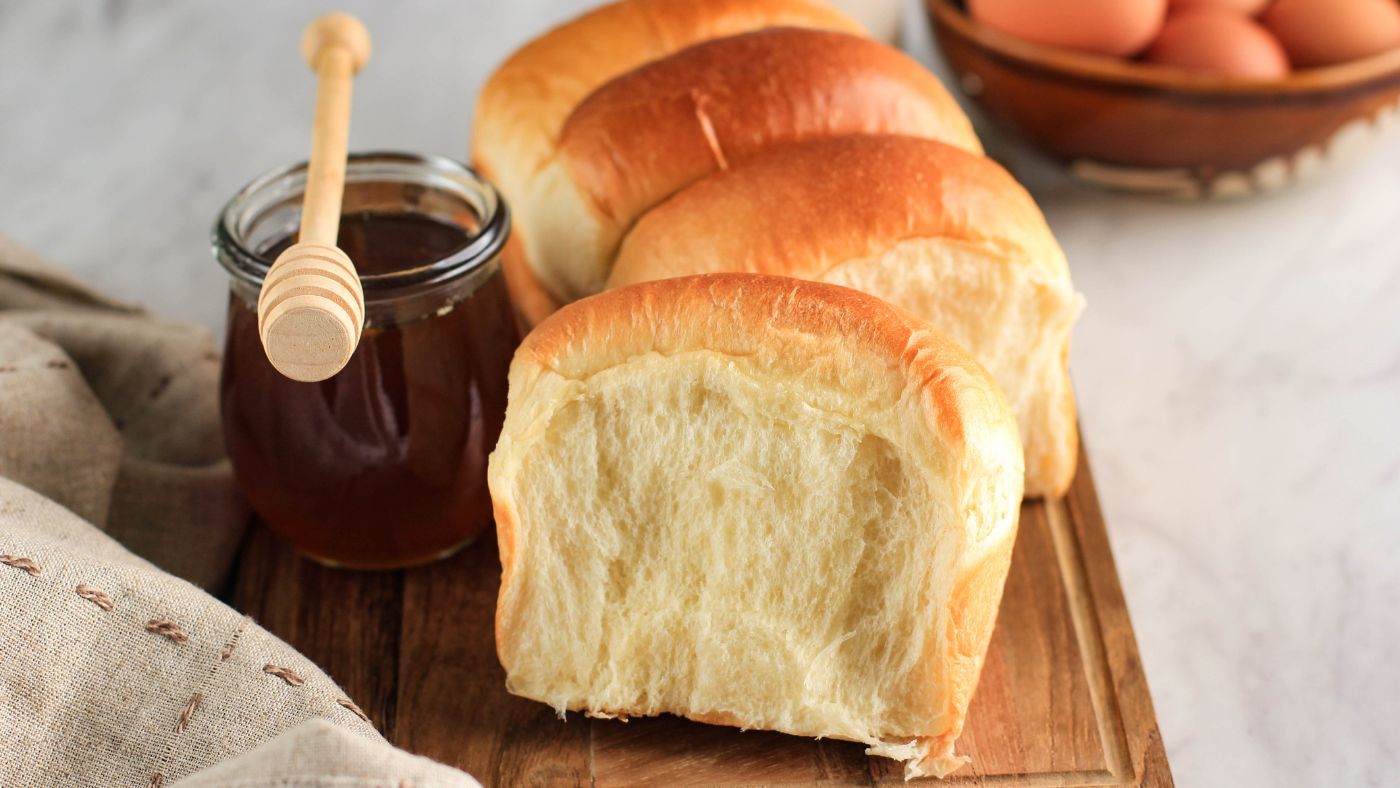
“Culinary hipsters” have form when it comes to embracing Japan’s “food pantheon”, said Tim Hayward in the Financial Times. Their enthusiasm for ramen and katsu curry has helped make these foods familiar in the West. Now it’s the turn of shokupan, a type of milk bread devised after the War when the US began supplying Japan with “large quantities of wheat and powdered milk”. Initially an attempt to improve on Western industrialised white bread, shokupan (which means “eating bread” in Japanese) is now an ingrained part of the country’s food culture.
Shokupan is made using a cooked roux called a tangzhong. This helps create a dough that can “hold a lot of gas during cooking”, giving the bread its fluffiness. Already a “red-hot” trend in parts of the US – “California is reported to be waist-deep in fluffy white loaves” – shokupan is now making inroads in Britain. A “handful of outlets” are serving “sandos”, the “spectacularly Insta-genic sandwiches” made using shokupan, and “my inbox groans with earnest young start-ups” offering shokupan loaves for “roughly the price of a small car”.
Are supermarkets ruining the roast?

“The perfect time and temperature to roast a chicken has long been a bone of contention,” said Andrew Ellson in The Times. Heston Blumenthal cooks his for several hours in a 70°C oven, before blasting it at maximum temperature to crisp the skin. Raymond Blanc recommends “no more than 40 to 45 minutes, half of which should be at 230°C and half at 150°C”. Now, a digital thermometer manufacturer has entered the debate, claiming that the “excessive cooking times” recommended for supermarket chickens are ruining many a roast.
To test this, scientists at Electronic Temperature Instruments (ETI) – maker of the Thermapen thermometer – followed the instructions on chickens from four supermarkets, and found that all the birds reached the “ideal cooking temperature of 74°C” long before the recommended time had elapsed. For example, Lidl’s cooking time was 95 minutes at 170°C – but their chicken reached the right temperature after 39 minutes.
While ETI clearly has a motive for eroding faith in prefixed cooking times, that doesn’t mean the findings should be dismissed, said Tony Turnbull in the same paper. Given the anxiety about bacteria on undercooked chicken, shops will be under pressure from legal departments to ramp up cooking times. You will do much better to rely on a probe thermometer, which you should insert into the thickest part of the thigh. And “don’t take dark red colouring of any meat near the bone” to mean the chicken isn’t done: such discolouration is caused by “harmless pigment leaching from the bone marrow”.
The case for riesling

German riesling can offer the drinker a “transcendent experience”, said Victoria Moore in The Daily Telegraph. And yet it is widely ignored in Britain, where “swathes of the public are indifferent to its charms”. This despite the fact that it offers excellent value: “you can buy a superb bottle of German riesling for about £20, and a decent one for less than a tenner”.
The lack of interest in riesling seems particularly odd at a time when “German wine is actually having a bit of a moment in British retail”, owing to a new diversity of German wines – notably pinot noir and pinot blanc – landing on supermarket shelves. The “great Hugh Johnson” suggested that German riesling might be a “niche taste” because it “doesn’t feel like other wines”, being “held aloft by its glistening acidity rather than leaning into the alcohol”. And it’s unusually “refreshing”.
Perhaps many who try German riesling are put off at first by its sheer unfamiliarity, and don’t “take the trouble to get to know it”. But if you are curious, I recommend buying from the “glorious” selection of German rieslings sold by the specialist thewinebarn.co.uk.
Britain embraces spice
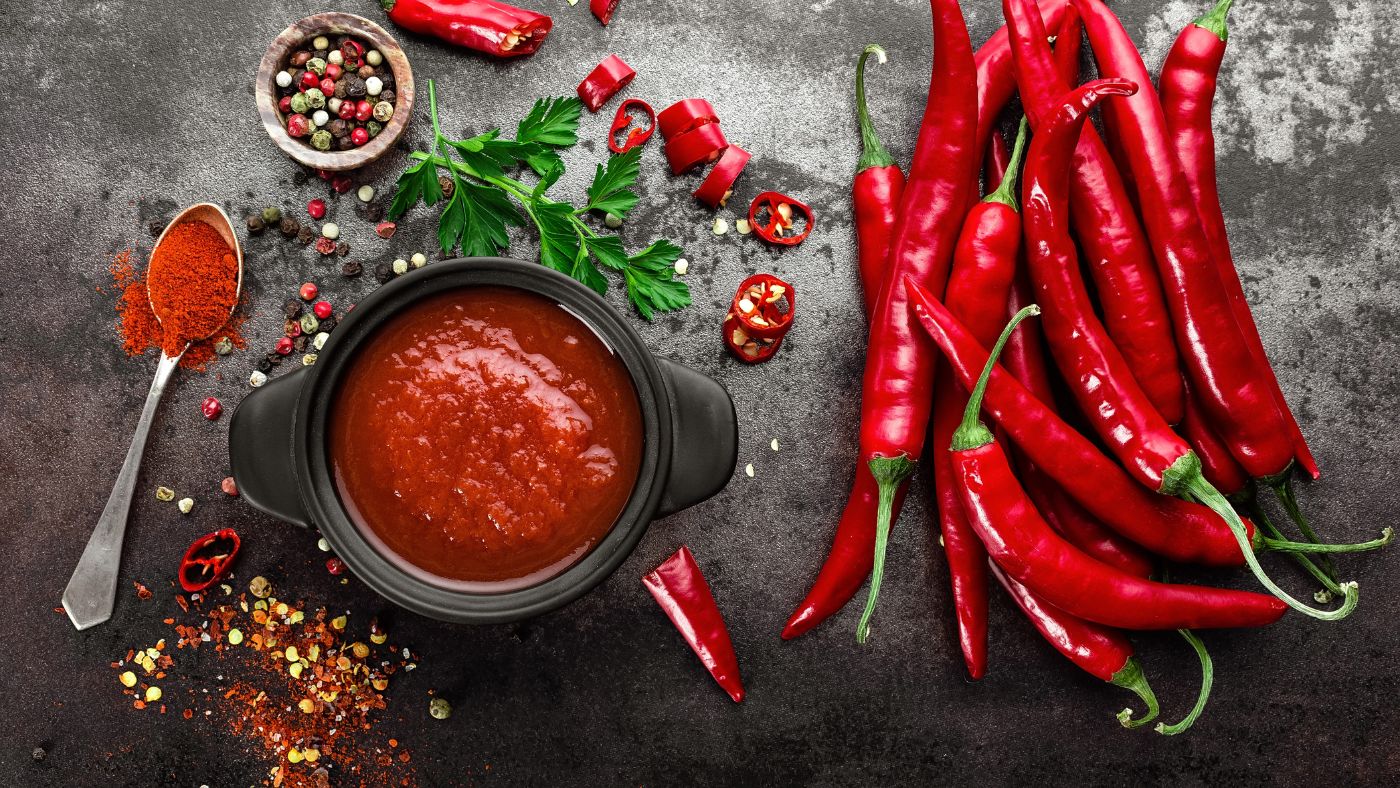
Britain is turning into a nation of spice lovers, said Alice Fisher in The Observer. While traditional condiments are in decline, sales of hot sauces have shot up over the past year. Waitrose, which reports a 55% surge in sales, “now stocks more than 20 different hot sauces, ranging from mild chipotle to a habanero sauce with a rating of 30,000-50,000 heat units on the Scoville scale”. And Nando’s, which makes a range of peri-peri sauces, recently replaced HP as the “third-biggest name in table sauces in the UK”.
As with the craft beer trend, there is a cultural element too: chilli festivals are “now a part of British summer times”; and there is a “growing customer interest in small-batch producers and independent manufacturing”. Even Ed Sheeran is getting in on the trend, with a hot sauce called Tingly Ted’s.
A hot dog like no other

For a while now, chefs have been creating elevated versions of once-basic dishes, said Andrew Buncombe in The Times. Burgers, ramen and steak sandwiches have all received this treatment, as has mac and cheese. Now it’s the turn of a delicacy that is usually sold for a few quid, smothered in sauces with an unnaturally vibrant hue, and eaten standing up. Yes, it’s the hot dog.
At fashionable New York restaurant Mischa, chef Alex Stupak serves a $29 hot dog consisting of a nine-inch wiener “made of emulsified brisket with pork fat”, in a “special potato flour bun”. In place of ketchup there’s “habanero chilli crisp relish with bacon and a little bowl of pimento cheese”, and there’s an array of other relishes on the side. Such offerings generally receive short shrift from critics, but Stupak’s hot dog has had rave reviews.
“I Hate That I Loved the $29 Hot Dog”, wrote a reviewer on Eater. In The New York Times, Pete Wells described the dish as “obnoxious… flagrantly expensive” as a “public statement”, but “glorious” to eat. “It gets to you both on a mindless, lizard-brain level and through a sophisticated appeal to your mind,” he said.
Where kids eat for free

Dining out with kids in the school holidays can be expensive, said Tomé Morrisy-Swan in The Daily Telegraph. But there are quite a few restaurants that offer free meals for children – including some which are surprisingly good. The children’s menu at the excellent Elite Bistros, which has seven outposts in Manchester, Liverpool and Chester, is free for under-12s on Sundays: kids can “tuck into homemade versions of classics”, including “brilliant roast beef”.
Many outlets in the Gordon Ramsay restaurant group – including Bread Street Kitchen & Bars, Gordon Ramsay Bar & Grills, Pizza East and York & Albany – offer free mains for each child under eight eating with an adult dining à la carte (sadly, the offer doesn’t apply to the three-Michelin-star Restaurant Gordon Ramsay in Chelsea).
In the Plymouth branch of Mitch Tonks’s much-loved Rockfish, under-11s dining with an adult get fish and chips for free. Also in Devon, the “popular” Bucket & Spade is offering free meals to under-12s this summer, any time before 6pm from Monday to Thursday. In London, the Fifth Floor Café at Harvey Nichols provides free meals for children eating with adults on Sunday – making it a great “pit stop” during a day trip.
A tomato tart for summer
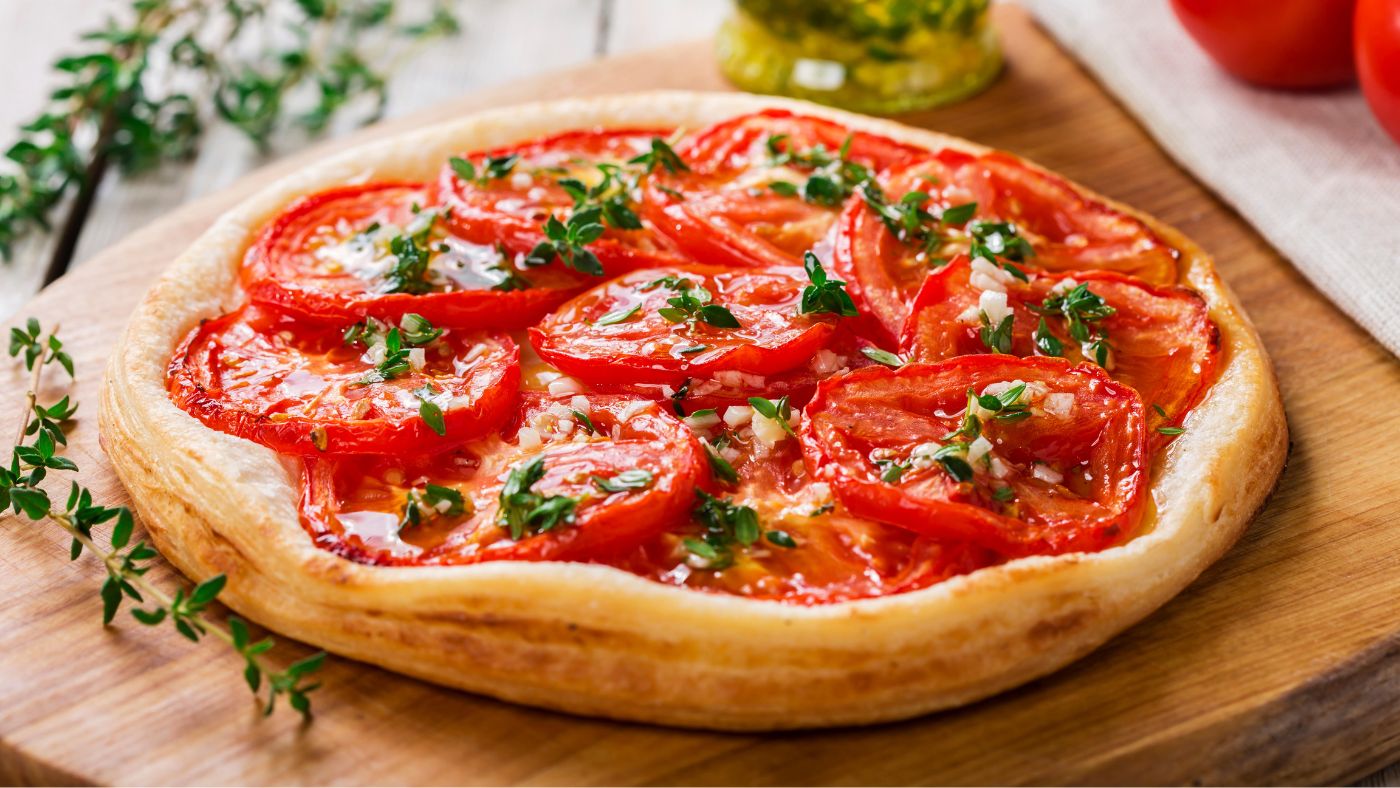
If you have tomatoes which are perfectly ripe, then an “old-fashioned French-style tomato tart” is a great way to showcase them, said Olivia Potts in The Spectator. It’s one of those dishes that “almost seems too simple”: thinly sliced tomatoes on a “crisp pastry base which is painted with a good layer of Dijon mustard”. There is “no custard mix” and no need to bake blind.
It’s also extremely flexible: you can just as easily make it with shop-bought puff pastry as with homemade short-crust, and you can add slices of goat’s cheese if you like. While a scatter of herbs is “the only compulsory garnish”, this too is flexible: oregano, tarragon and thyme all work equally well.
The only real risk is the “dreaded soggy bottom”, but cooking the tart at 200°C helps avoid this, as does sprinkling the tomato slices with salt for about 15 minutes (make sure to dab them dry with kitchen paper before laying them on the pastry). Thirty minutes in the oven, and the tart will be ready: it’s best served with a classic French salad of “soft green lettuce leaves, dressed with a simple vinaigrette”.
The deep-fried jam sandwich
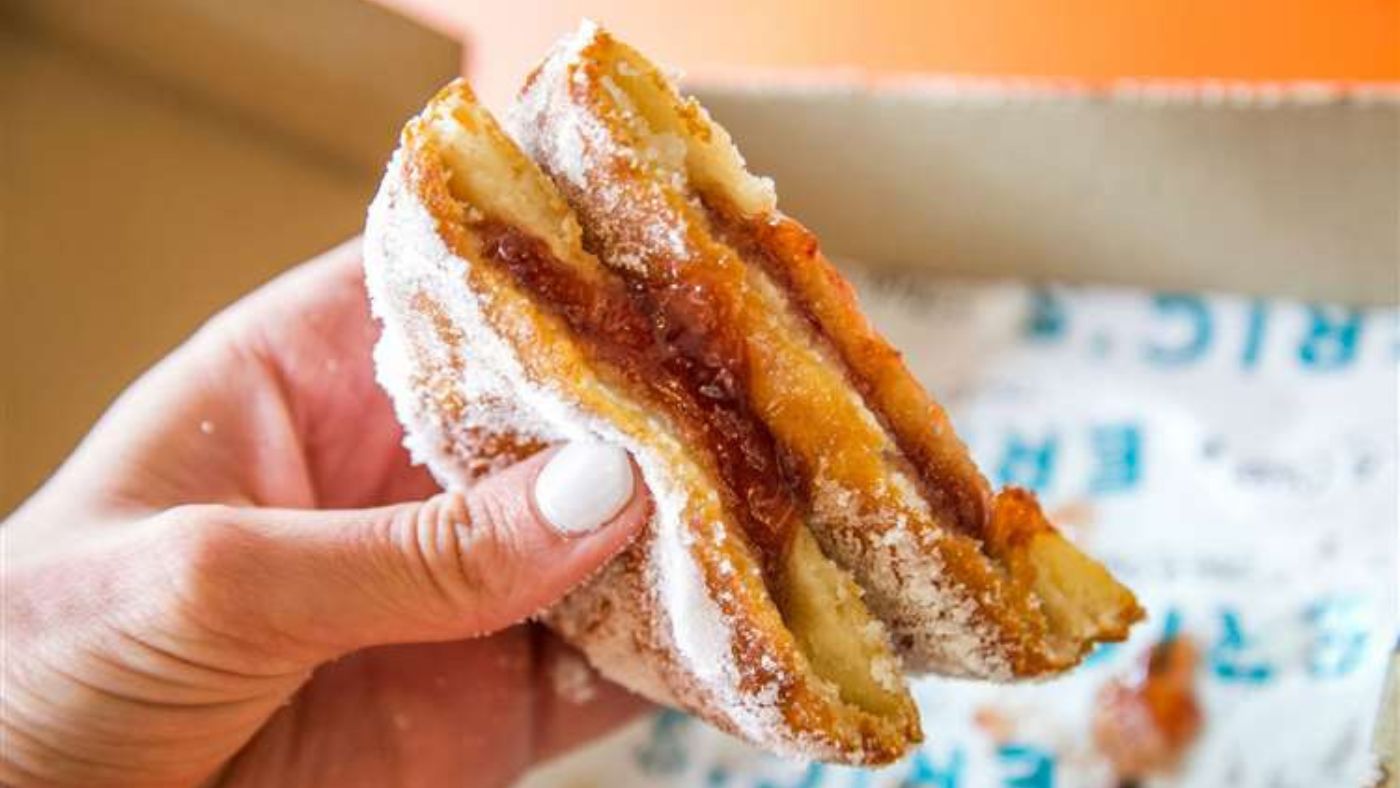
Delia Smith may be long-since retired as a food writer, but she hasn’t lost her knack for championing “simpler culinary pleasures”, said Anna Davidson in The Guardian. In July, the woman who taught the nation how to boil an egg hit the headlines again when the restaurant she owns at Norwich City FC, Yellows Bar & Grill, unveiled an unlikely addition to its menu: a deep-fried jam sandwich. Smith first encountered this dish at a fish and chip shop in Norfolk, and was so impressed that she emailed the owner, Eric Snaith, asking for permission to serve it at Yellows. “Eric’s deep-fried jam sandwich” – billed as a dish that “has to be tasted to be believed” – costs £5.
Unlike other dishes made famous by Smith, this one is actually quite complex to make, said Hattie Garlick in The Daily Telegraph. The sandwich, spread with “really good quality strawberry jam”, is cut into a circular shape and coated in a sweet batter, before being frozen and fried to order. I therefore doubt that it will be cooked much at home. But having sampled it at Yellows, I can confirm that it’s a “glorious” creation – like a “fractionally flattened jam doughnut”, with a “hot, silky” filling that “erupts like a volcano” in the mouth.
Japan’s ‘rice separation’

“In Japan, rice has long been treated with a respect that borders on reverence,” said Philip Patrick in The Spectator. The ancient word for Japan translates as “the land where abundant rice shoots ripen beautifully”, and rice farming is so embedded in Japanese culture that some believe it “helped form the national character”. Yet there are signs that the staple is now “losing its pre-eminence”. According to the Ministry of Agriculture, domestic rice sales have fallen by more than 10% in a decade, as people opt for “easier fare such as bread or noodles”.
Convenience is undoubtedly a factor in this shift. Preparing rice properly is a “multi-step process” – which makes it less attractive in a country where increasing numbers live alone. It’s also the case that Japan is in the “grip of a bread boom”, thanks to a new craze for “exotic artisanal varieties” and a “rapidly growing number of boutique bakeries”. But even if the fall in rice consumption is inevitable, traditionalists are so concerned by the phenomenon they’ve come up with a term for it: kome banare, or “rice separation”.
Tips for a perfect picnic

Picnics tend to be more charming as an idea than as a reality, said India Knight in The Sunday Times. And that’s largely because the food often disappoints. To guard against chicken drumsticks with “sad, wrinkly skin”, or wilted salad, here are my suggestions for a “standard picnic”, which I’ve “tweaked and honed over many decades”.
First, go to your local deli and “purchase the makings of some kind of board”: a combination of “Parma ham, juicy melon and ripe figs is unbeatable”, but it can be anything you like. Second, make or buy two really good dips in generous quantities: my standbys are whipped feta, roasted aubergine and white bean. With these, serve pitta bread or tortilla cut into triangles, which you’ve crisped by baking at 180˚C fan/gas 6.
Pack a salad of little gems, which have “stout leaves that don’t wilt in heat”, and bring a “jam jar of your favourite dressing”. Because all this is relatively low effort, you’ll have time to make a frittata (“I find eggs a better picnic protein than meat”). And for pudding, I always serve peaches in wine: “peel and slice ripe peaches in situ and drop into glasses of rosé, which does need to be chilled”, so make sure to pack plenty of plastic ice packs.
Tips for storing and using spices

Many of us buy spices in glass jars, and then proceed to keep them “unused and unloved”, on a spice rack or at the back of a cupboard, says Anna Berrill in The Guardian. But wherever you store your spices, keeping them in glass containers isn’t a very good idea, since exposure to light causes them to deteriorate. Best to transfer them to opaque containers, and store them away from both sunlight and heat (so not too close to the oven).
Cynthia Shanmugalingam, the chef/founder of Rambutan restaurant in Borough Market, says it’s also much better to buy whole spices, and grind them as you need them in an electric spice grinder (having briefly toasted them first). Not only does this make a “huge” difference to their flavour, but whole spices keep significantly longer than ground spices – typically 12 months as opposed to just six. As for making the best use of your spices, Esther Clark, co-author of “The Modern Spice Rack”, advises uses them as a seasoning as well as a cooking ingredient. “Have a za’atar pinch pot on your table and put some on your scrambled eggs,” she says. She also suggests using toasted coriander seeds as a topping for dips and salads, or “crushed and whisked into dressings”.
How to make a non-stick pan
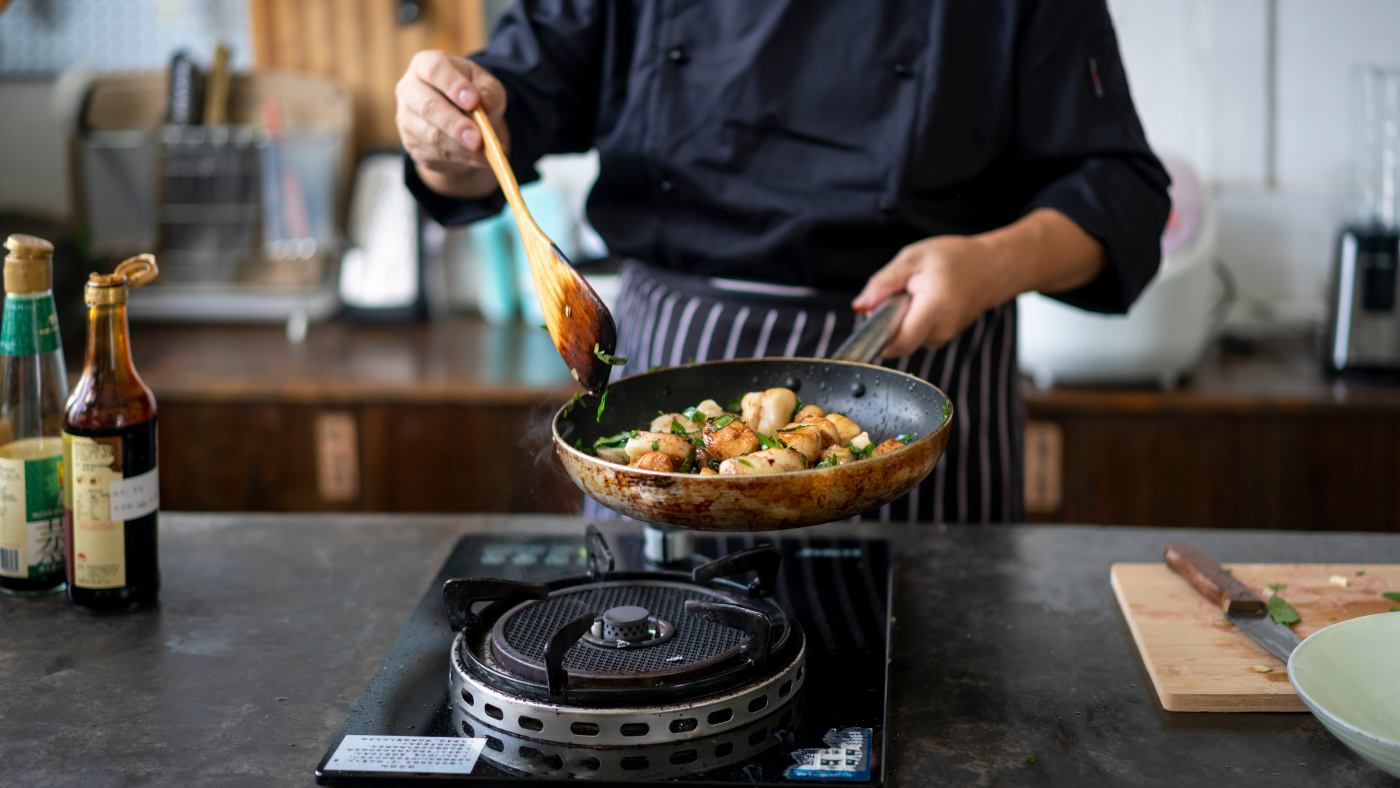
A brand new non-stick pan is a “dreamy thing to cook with”, says Bee Wilson in The Wall Street Journal. “Oil glides across the frictionless surface like shiny shoes on a waxed floor. Eggs almost seem to fry themselves.” But I have yet to find one that doesn’t “lose its slipperiness over time” – and usually in less than a year. And once that happens, they’re as good as useless. Even if you’re not worried about the chemicals used to create the non-stick surface, it seems odd to spend money on a pan that will “soon let you down” – yet people do, in droves. The global non-stick cookware market is worth $20bn today, and is expected to rise $25bn by the end of the decade.
What makes this particularly strange is that “you can make your own homemade non-stick pan any time you like”, simply by getting a cast iron or spun iron pan, and seasoning it. The idea of seasoning a pan might sound daunting, but it’s very easy: you just heat the pan (when it’s very clean) with a little oil or animal fat, let the oil get hot, remove it, then wipe the surface clean with a dry cloth. And the beauty of it is that, provided you re-season it from time to time, this pan will get better over time, instead of worse.
The joys of a microwave

A survey has revealed microwaves to be the “nation’s number one must-have kitchen gadget”, owned by 93% of households, says Xanthe Clay in The Daily Telegraph. And with good reason: microwaves are often disparaged by snobby food lovers, because of their association with ready meals and other ultra-processed food, but they are “much greener” than conventional ovens (because cooking times are so much shorter), and also invaluable for all manner of “kitchen chores”.
They’re great for reheating leftovers without drying them out, and can ease many a culinary irritation: a quick blast softens butter and hard lumps of muscovado sugar, and brings crystallised honey back to its runny state. I use mine for toasting nuts or seeds (spread them in a single layer on the turntable, and microwave them in 20-second bursts, stirring well each time), for melting chocolate (on 50% power, and in 30-second bursts), and for cooking beetroot in ten minutes (put the unpeeled veg in a microwave-safe bowl and cover with a plate). It will never be the most-used appliance in my kitchen – but it has definitely “earned its place”.
The wine bar gets a 'reboot'

Wine bars were once associated with “sozzled barristers drinking big burgundies” and yuppies quaffing “vintage sparklers”, says Sophie Morris in The Times. But lately, there’s been a “wine bar reboot”, and more modest establishments have appeared. Typically small and independently owned, these new-wave bars sell “interesting low-intervention wines”, and tend to offer a selection of “simple plates” (cheese, charcuterie and pickles).
According to wine writer Zeren Wilson, the trend can be traced back to Sager + Wilde in London’s Hackney, which opened a decade ago and helped attract a “younger crowd” to the concept. Since the pandemic, the trend has gone nationwide, from the Beckford Bottle Shop in Bath to Manchester’s Flawd. And it’s not confined to cities: in my home town of Broadstairs in Kent, “I’m lucky enough to have two new spots” – No. 1 Oscar Road and The Bottleneck. People today want to be able to eat and drink well, without having to commit to a full sit-down dinner. When I go out, it’s invariably to a wine bar, rather than to a pub. In fact, I doubt I’ll ever “clutch a lukewarm glass of pinot grigio and a grab bag of Walkers again”.
Food rules you can ignore
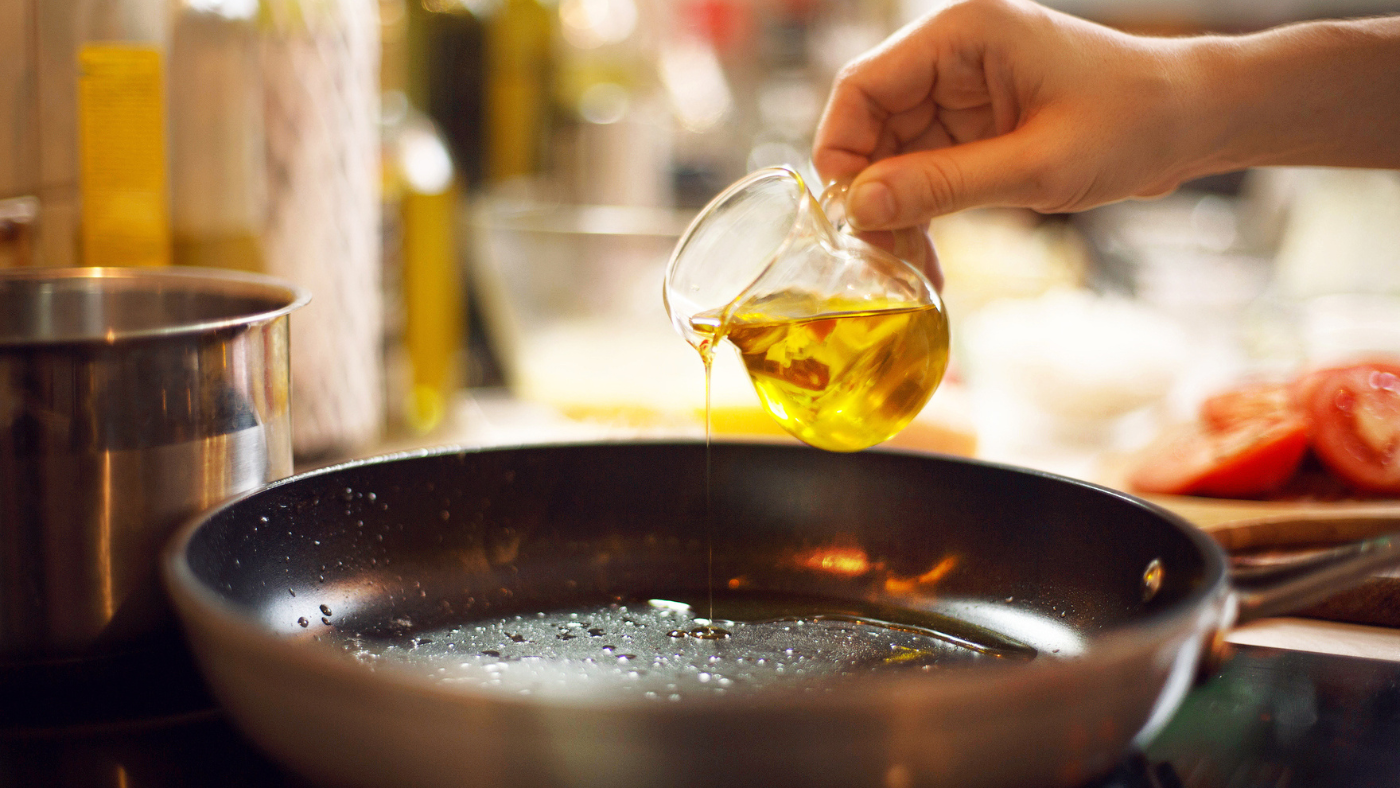
Never wash a mushroom; don’t salt pulses until they’re cooked; always seal your meat. Cookery is full of “famous food rules”, says Felicity Cloake in The Guardian – and it turns out that many of them are bogus. Take the injunction against washing mushrooms. It is based on the belief that it makes them soggy, but mushrooms absorb relatively little water when washed. Besides, “added moisture is a good thing”: wetter mushrooms absorb less oil during cooking, improving their final flavour.
Equally flawed is the oft-stated belief that extra-virgin olive oil should be used only for dressing, not cooking. Although olive oil has a slightly lower smoke point (200°C) than some oils, this is only likely to be a problem if you’re “doing some professional-level stir frying” – and the fact that olive oil has so many healthy polyphenols makes it an unusually healthy choice. You should also ignore exhortations to serve food “piping hot”: a 2007 study found that our perceptions of many flavours, including salty and sour, decline when eating food that is warmer than 35°C. Your dinner, in other words, will “taste of more” if it’s “allowed to cool down a little before serving”.
The rise of the carnivore diet
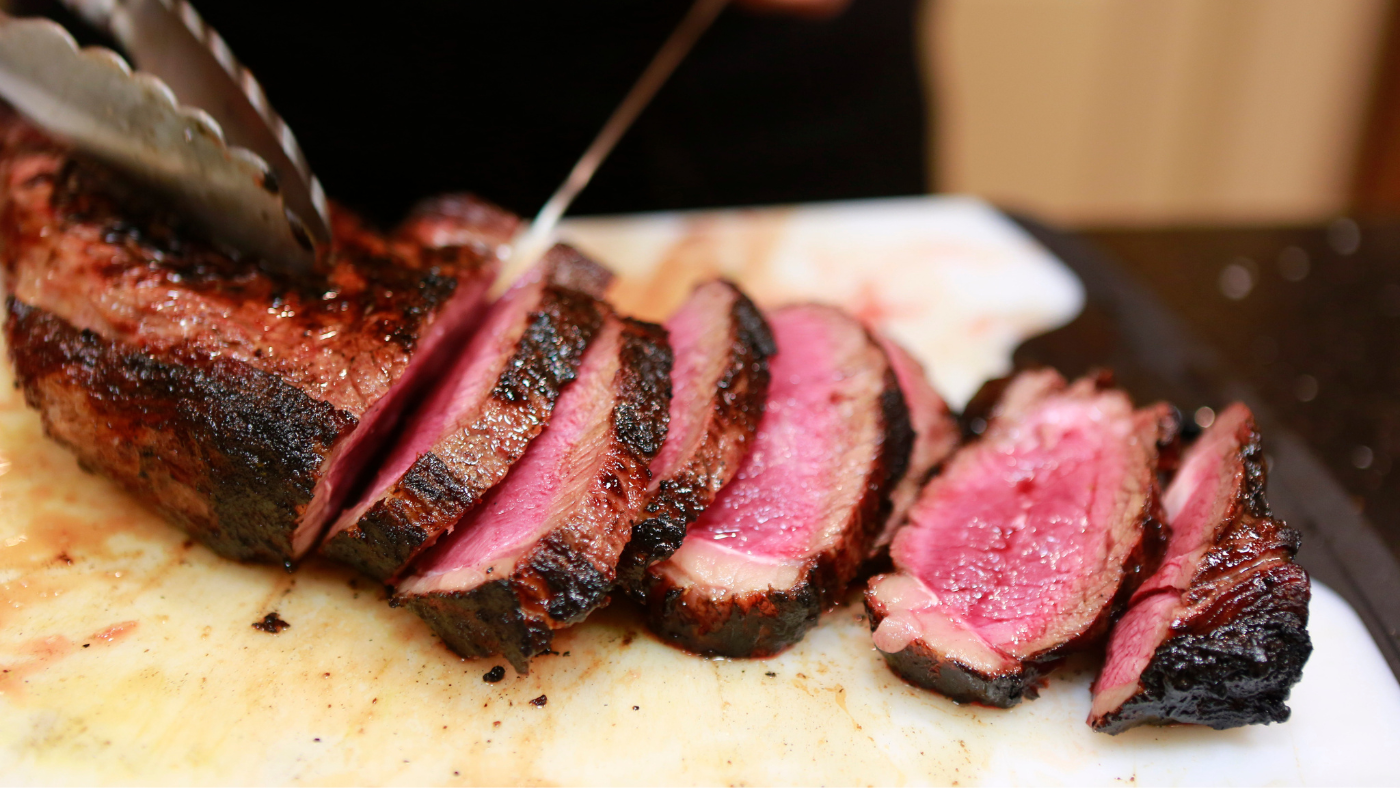
Millions of people have reduced the amount of meat they consume in the past few years, says Claudia Rowan in The Daily Telegraph – but a minority have doubled down, and embraced “carnivore diets”. And though these fly in the face of received medical wisdom, their adherents claim they can be transformative for both physical and mental health.
The carnivore movement has its roots in the 19th century, but it became “more mainstream” in 2018, when Jordan Peterson claimed he’d cured his anxiety and depression, and lost weight, by rigidly following a “Lion Diet” of red meat, salt and water. Now it attracts “huge audiences on TikTok, where the hashtag #carnivorediet has 980 million views and advocates share tips and daily meal plans”. At its “hyper-masculine” extreme, a carnivore diet consists of nothing but raw red meat.
There are, however, more moderate approaches, which permit fish as well as other foods. One convert is the adventurer Bear Grylls, who follows an “ancestral” diet of “red meat and organs”, fruit, honey, dairy, plus “a little potato or white rice”. It has, he insists, been a “game-changer”: “I’ve never felt stronger, my skin’s never been better, and my gut’s never been better.”
Vinho verde: a perfect summer wine

Vinho verde is “one of the quintessential summer wines”, said Susy Atkins in The Daily Telegraph. It is made in the far northwest of Portugal, typically from a blend of grapes, and its name, “green wine”, refers to the fact that it has traditionally been sold, and drunk, while very young. Its relatively low alcohol content, as well as its “floral scents”, “notes of tropical fruits” and “crisp finish” make it ideal for parties and for “lazing about in the sun”.
Vinho verde also offers excellent value: very few bottles cost more than £10. M&S Classics No 7 Vinho Verde (£8.50) is a “brightly fruity version”, with peach and pineapple standing out. Chosen by Majestic Vinho Verde (£8.99 or £7.99 as part of a mix six offer) is a “summer delight”, with a flavour of green apples and a “decidedly dry finish”. The Best Vinho Verde Loureiro (£7; Morrisons) is made from the loureiro grape, not a blend, and is a “particularly zesty” example, with a “big squeeze of lemon and hints of melon and peach”. Azevedo Vinho Verde (£9.99; Waitrose) is a “shade more serious than most”, with a “lovely fruit cocktail” of flavour and a “moreish” endnote of citrus peel.
Heatwave salads
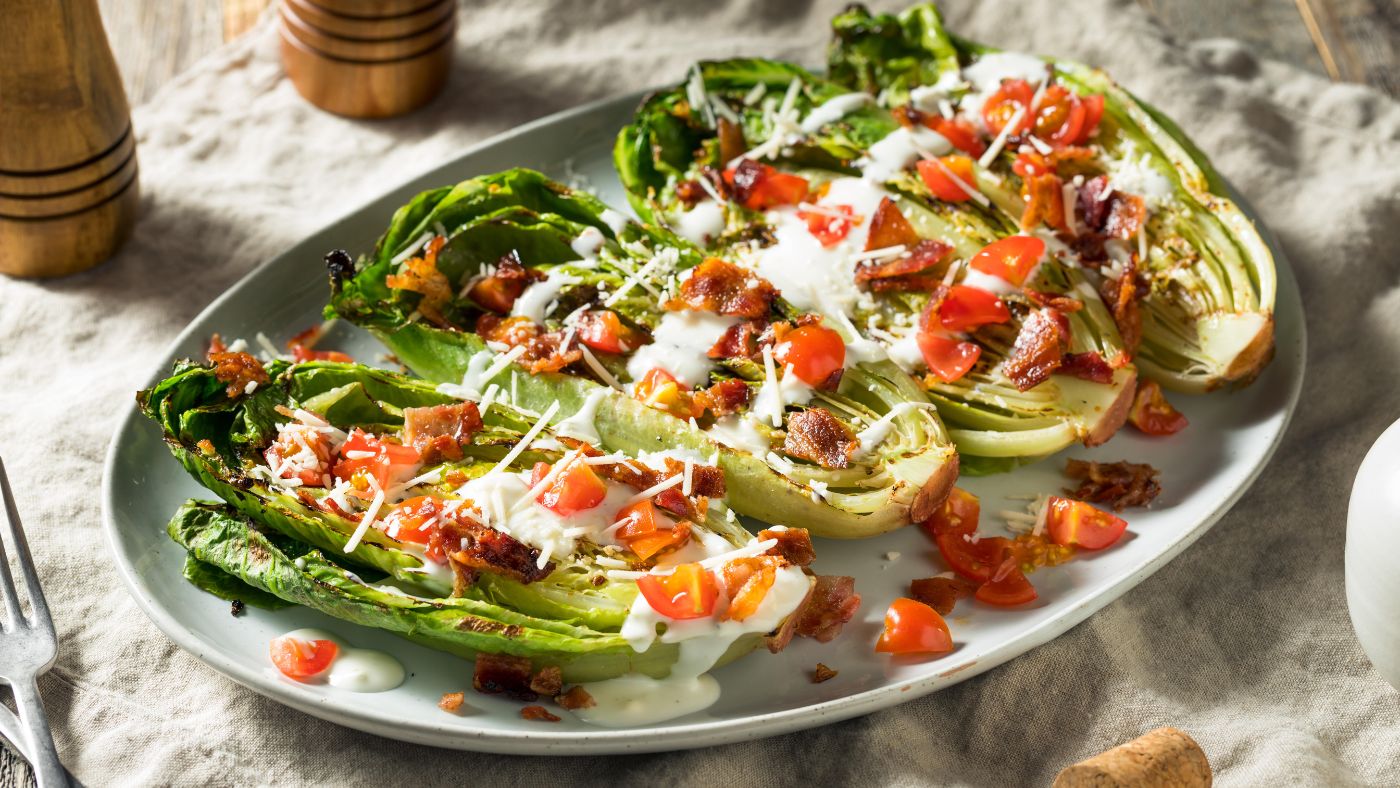
People have different cravings in hot weather, said Tomé Morrissy-Swan in The Daily Telegraph. Some “swear by cold soups”, others by spicy foods. But most people will agree that salads are a good thing: they require little cooking, and aren’t too heavy. And a few simple twists can stop them seeming “boring”.
Marc Williams, cookery school director at The Grand in York, suggests trying a grilled Caesar salad. Generously season and oil some lettuce halves, then briefly sear them on a hot griddle. Arrange the seared lettuce on a platter, scatter over feta, and finish with a dressing of garlic, chopped anchovy, mayonnaise and white wine vinegar (with parmesan shavings and croutons on top for “extra flavour and texture”).
Mike Reid, culinary director of Rare Restaurants, recommends spicing up a salad with barbecued fruit, such as peach, watermelon, mango or apple. “Use a medium heat, and don’t add any fat,” he advises, “because you want the fruit to caramelise and release its natural sugars.” He suggests adding the grilled fruit to a dressed peppery leaf – such as watercress or rocket – and topping “with a little goat’s cheese or burrata”.
Why baking raspberries makes sense
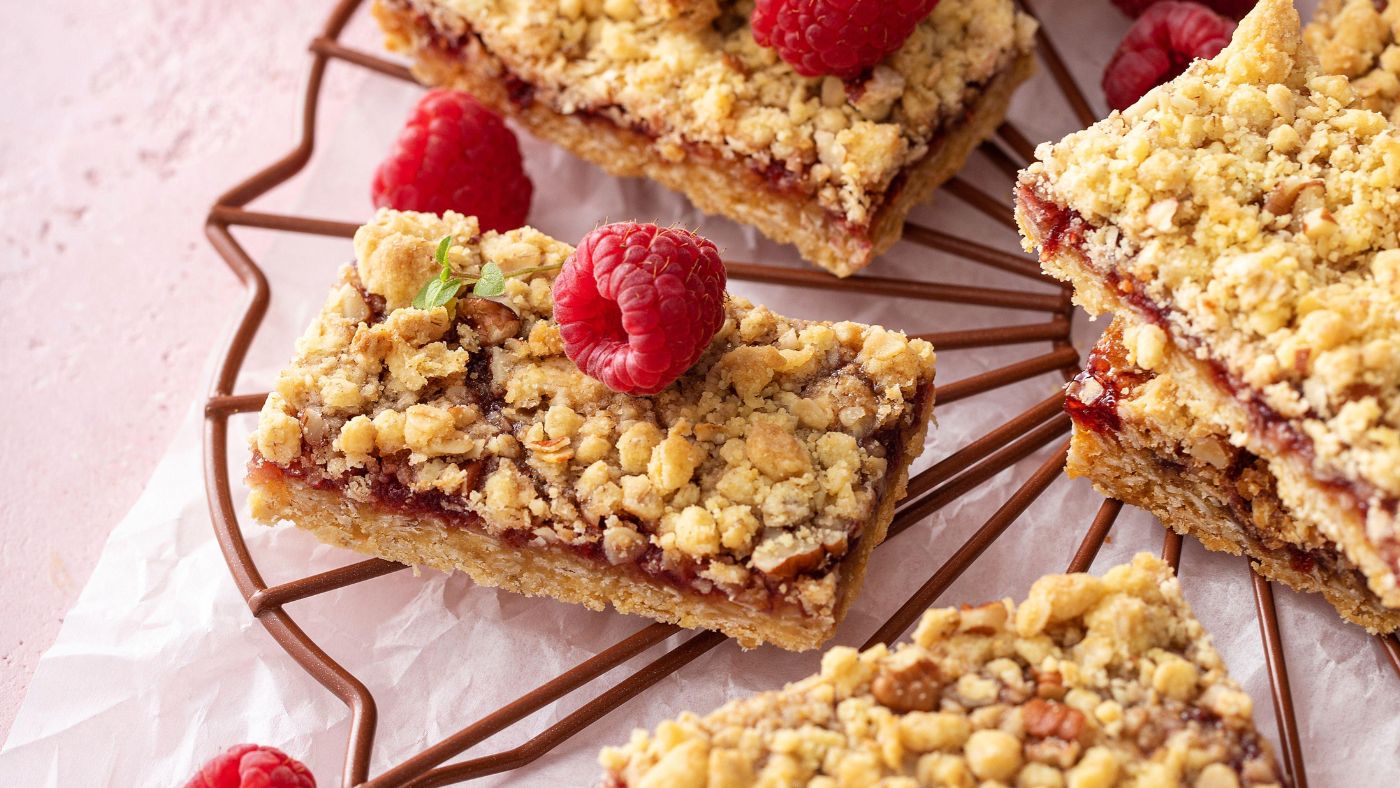
Raspberries are at their best (and cheapest) between June and October, said Rosie Sykes in The Guardian. Of course, eating them raw is common, but when baked, they “take on a lovely floral note”.
“One of my most-baked recipes” is a simple raspberry oat crumble slice. Start by making the crumble: mix 200g oats, 150g soft brown sugar and 200g flour in a bowl, make a well in the centre and pour in 180g melted butter and mix until it comes together. Line a 25cm x 30cm baking tin with greaseproof paper, press in two-thirds of the oat mixture – make sure you push it down well – and bake for about 15 minutes in a 190°C (170°C fan) oven, until golden.
Meanwhile, mix 100g flaked almonds (or any nut or seed) into the remaining oat mixture. Strew 250g raspberries over the cooked base (push them down a bit with a fork), and scatter over the remaining oat mix. Bake for another 20-25 minutes. Cool the tin on a wire rack, and when cold, cut the cake into squares – they’ll keep in a sealed container for three to four days.
Yannick Alléno: the man who reinvented sauces

Compared with the likes of Thomas Keller or René Redzepi, the French chef Yannick Alléno lacks “public recognition”, said Tony Turnbull in The Times. All this proves is that “there is no justice”, because he’s “one of the world’s ... most innovative chefs”. The holder of 15 Michelin stars (second only to Alain Ducasse, who has 20), Alléno is “the man credited with taking sauce-making, still the bedrock of French cuisine, into the 21st century”. And in July, he opened his first London restaurant: Pavyllon, at the Four Seasons in Mayfair.
Although less formal than some of Alléno’s establishments, Pavyllon will showcase many of his greatest creations, including his painstaking “extraction method” for sauces. He begins by cooking an ingredient – “fish, vegetables, whatever” – in a sous vide, or vacuum, to extract its juices, and then the resulting liquid is turned into a sorbet-style ice before being spun in a centrifuge. Known as “cryo-concentration”, the process produces the “purest, cleanest, most flavoursome manifestation” of the ingredient – in effect, its essence in sauce form. “It preserves all the minerality, vitamins and taste,” he said. While Pavyllon isn’t cheap (main courses start at £42), foodies will be clamouring to eat there. “I can’t remember the last time I was this excited about a new restaurant.”
The sad decline of the Balti Triangle
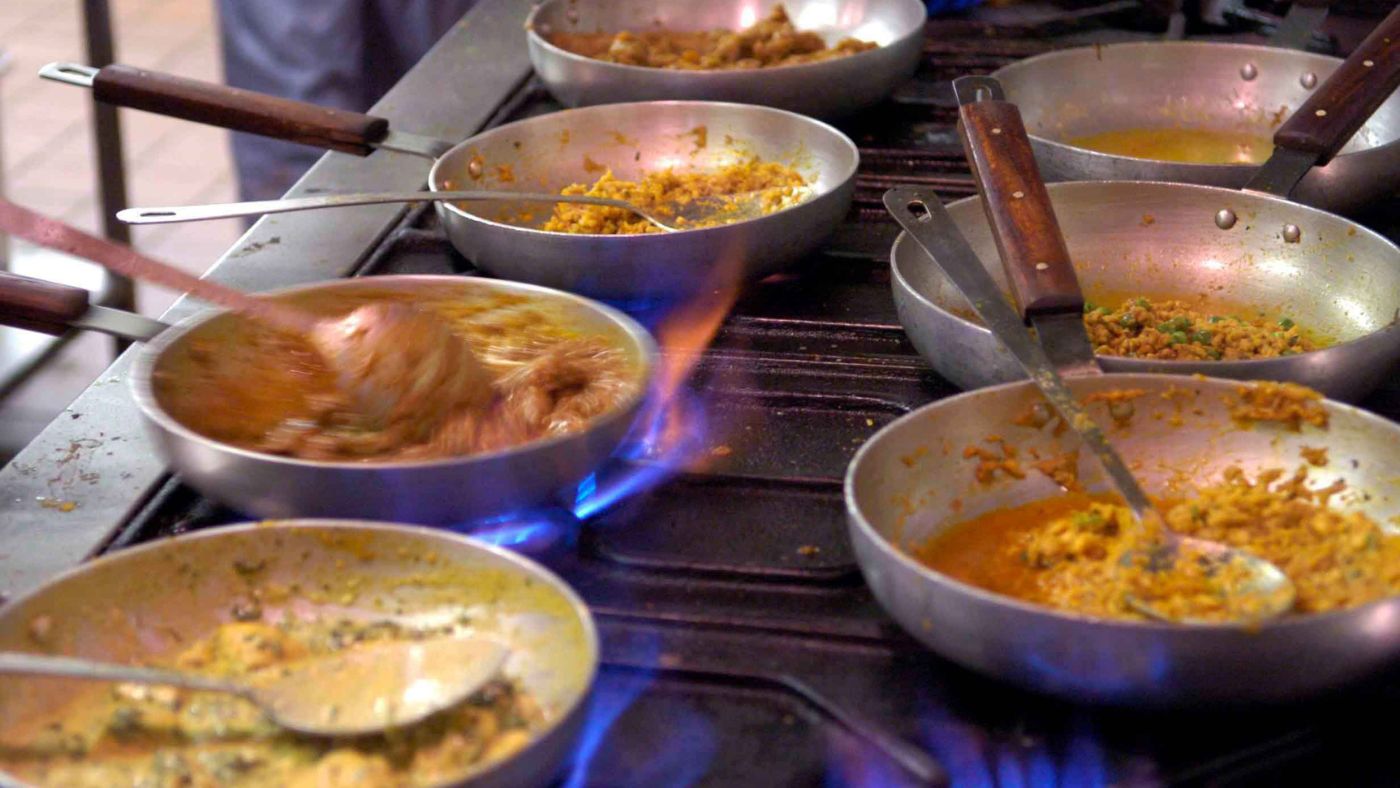
Birmingham’s “Balti Triangle” is justly famed, said Jessica Murray in The Guardian. Located just south of the city centre, the area has “one of the largest Pakistani Kashmiri populations in Britain”, and is credited with popularising the “balti” – a curry served in a thin steel bowl. In its 1990s heyday, the Triangle was “home to more than 30 authentic balti houses”. It “still attracts plenty of tourists” – but now there are only four.
This decline has various causes. The area’s former popularity led to rent rises, which forced some restaurants to relocate. Some of the offspring of the original restaurateurs were reluctant to take over when their parents retired: the closure last year of the “Triangle mainstay” Adil’s was down to there being “no one to pick up the reins”.
Changing tastes have also had an impact: former balti houses have been turned into “burger joints and dessert parlours”. Later this year, Andy Munro – of the Association for the Protection of the Authentic Balti – is staging an exhibition about the Triangle, which will feature his photos of closed restaurants. “No matter what happens, the Balti Triangle is still where it was invented,” he said. “You can’t take away the history of the place.”
The magic and joy of confit
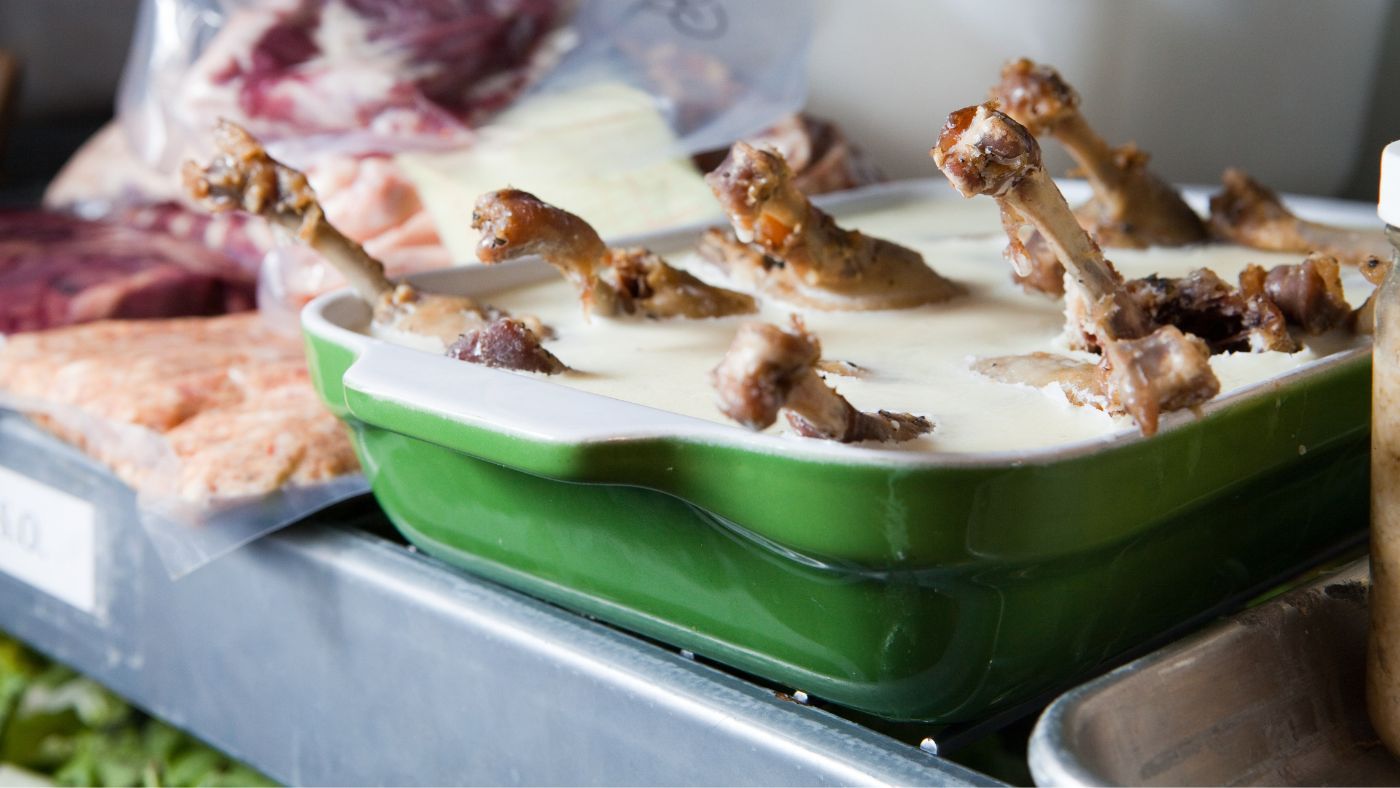
Confit has always struck me as having a “magic” to it, said Olivia Potts in The Spectator. Not only does it seem “wonderfully improbable” that cooking meat (typically duck leg) slowly in its own fat renders it safe to eat for months on end, there’s also the fact that this “unlikely process” results in flesh that is so “tender” and “flavoursome”.
The technique is particularly associated with Gascony in southwest France, where it developed as a means of preserving meat. Today, while preserving meat is no longer a strict necessity – we have fridges and freezers, and a year-round supply – confit continues to be “beloved in France and beyond”. And that’s not surprising when you consider that it’s “one of the most delicious, irresistible ways of eating a bird”.
Although confit duck legs can be readily bought (they’re available online if you don’t have a local stockist), I prefer to make my own. This is satisfyingly straightforward – and economical too, as you can use the same fat “over and over”, creating an “endless, delicious cycle”. With a container of confit duck legs in your fridge (they’ll keep there for months), you “need never be more than half an hour or so from a perfectly cooked duck leg again. What a joy.”
Making the most of 'nduja
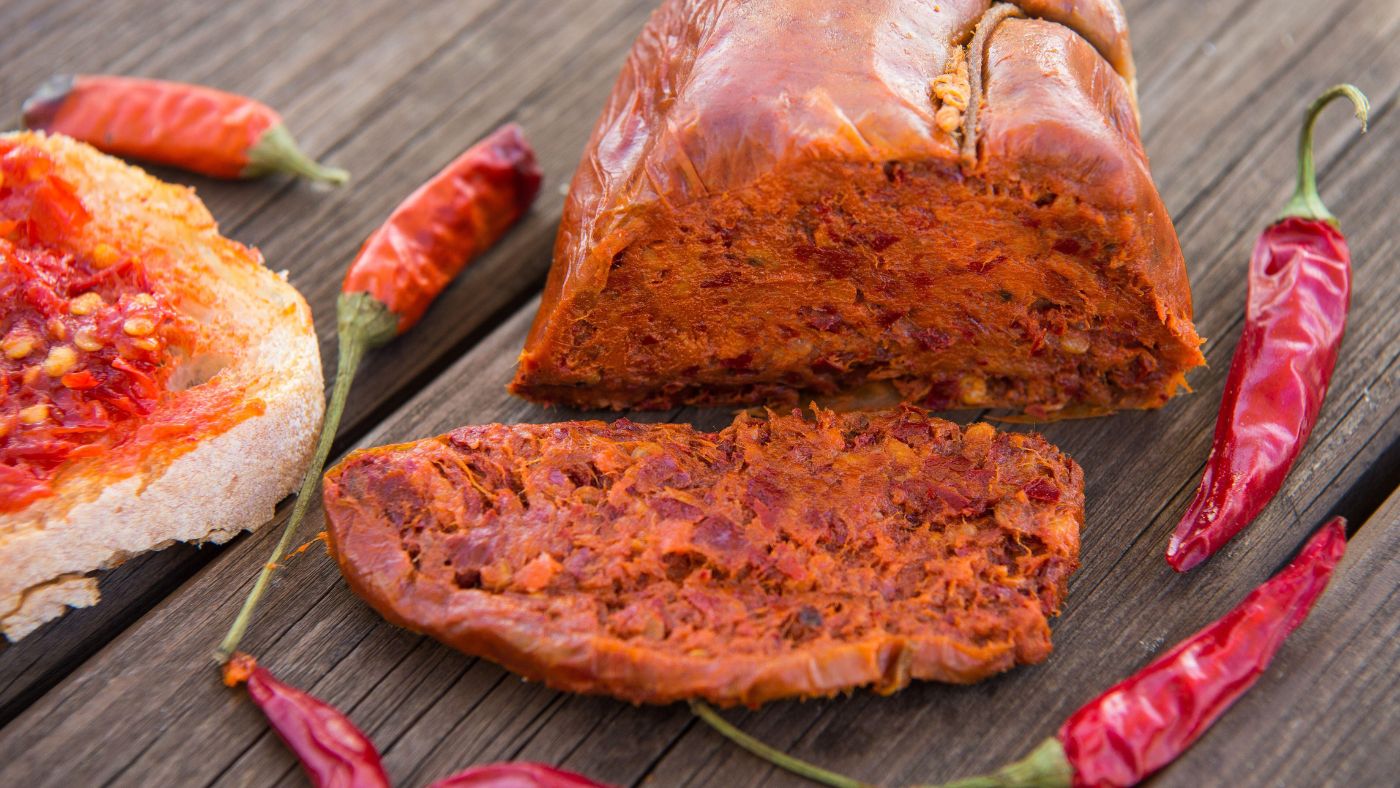
A few years ago, ’nduja – the spicy, spreadable pork paste from Calabria in Italy – was considered rather niche, said Diana Henry in The Daily Telegraph. These days, it is “everywhere”, with own-brand versions in most supermarkets. In fact, some people “love it a little too much, putting it in dishes where it overwhelms other components”, such as a lamb braise. Even melted on its own into pasta, I find it’s “too much”.
’Nduja has to be used sparingly; and it works well when there’s another food to counter it, particularly “soft, bland ingredients such as ricotta and mozzarella, or sweet ingredients like prawns and scallops”. It makes a great addition to roasting tin suppers. Dot it “around chicken thighs, potatoes and any other vegetables that work (aubergines, red peppers, wedges of red onion), and let it do its magic”. Or add some to a red pepper sauce. Like its cousin chorizo, it’s “sublime” with egg yolks. Leftover boiled potatoes fried with red pepper, garlic, chilli and ’nduja – with an egg cracked into the pan – would make a fine midweek supper.
Why pickles have become hot

Pickles “aren’t the daintiest of snacks”, said Eleanor Steafel in The Daily Telegraph. And for a long time they were resolutely unfashionable – seen more as a “chip-shop staple” than as a “foodie must-have”. Happily, that is changing. Go to a trendy restaurant these days, and before you have your “first sip of orange wine”, you’ll probably be handed a “house soused” cauliflower floret. It helps that they are vegan, and also healthy: their acid can “help slow the digestion of carbohydrates”, and fermented foods are “great for your gut microbiome”.
A further sign of their newfound status is that they have “taken their place among the world of wacky TikTok trends”. One recent craze on the platform has been for people to film themselves sampling the giant pickles made by the American company Van Holten, which come in individual pouches and cost around £2.50 each.
Even celebrities are jumping on this bandwagon: the actress Florence Pugh had a go, and pronounced her pickle “yummy”; Lily James, however, declared hers “disgusting”. Van Holten does a whole line of similar products – pickle-flavoured ice lollies; bottles of pickle brine for mixing in cocktails – and you have to applaud the company’s “genius”, for “turning a cheap thing already lurking in most people’s fridge” into something so seemingly desirable.
An Italian restaurant for coeliacs
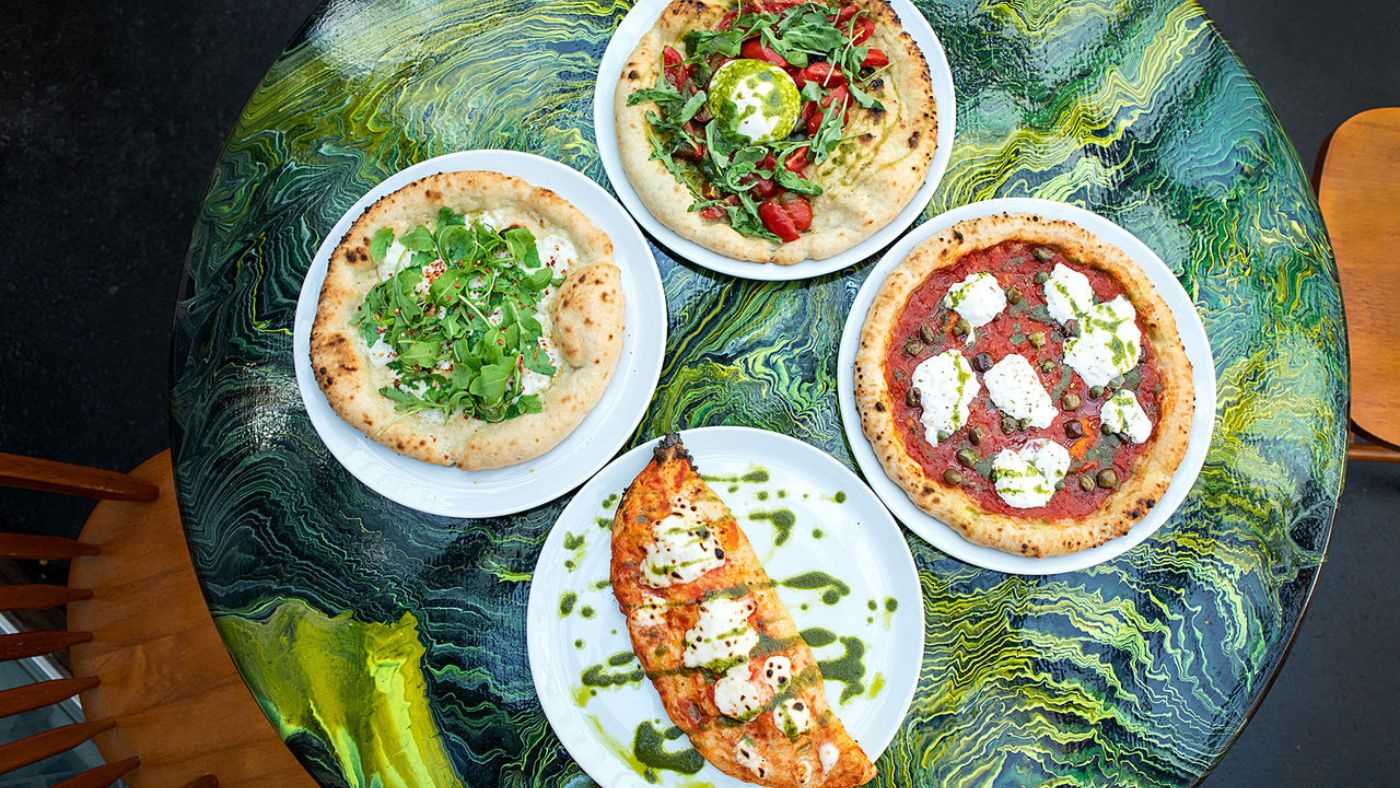
With all that pizza and pasta, Italian cuisine can be rather gluten-heavy, said Giulia Crouch in The Times. And so the idea of a gluten-free Italian restaurant, specialising in pizza and pasta, might seem an odd one. But that’s what Sicilian-born chef Antonio Alderuccio has created. At Plant Club in Newington Green, in north London, the pasta dishes and pizzas are not only gluten-free, but also vegan.
Alderuccio, 34, became interested in the possibility of gluten-free pizza eight years ago, after meeting a woman who was coeliac and diabetic. He began experimenting in earnest during lockdown, working for months to create a dough without the gluten but with the “characteristic stretchy quality”. Once he’d cracked it, he began selling gluten-free pizzas on Deliveroo; sales rocketed, and this year he opened Plant Club, which is proving similarly popular. Alderuccio views his work as a “necessity”. He says that he remembers a customer crying, “because he’d never been able to eat in an Italian restaurant before. He was so happy to have a beer and pizza.”
Why desserts are disappearing
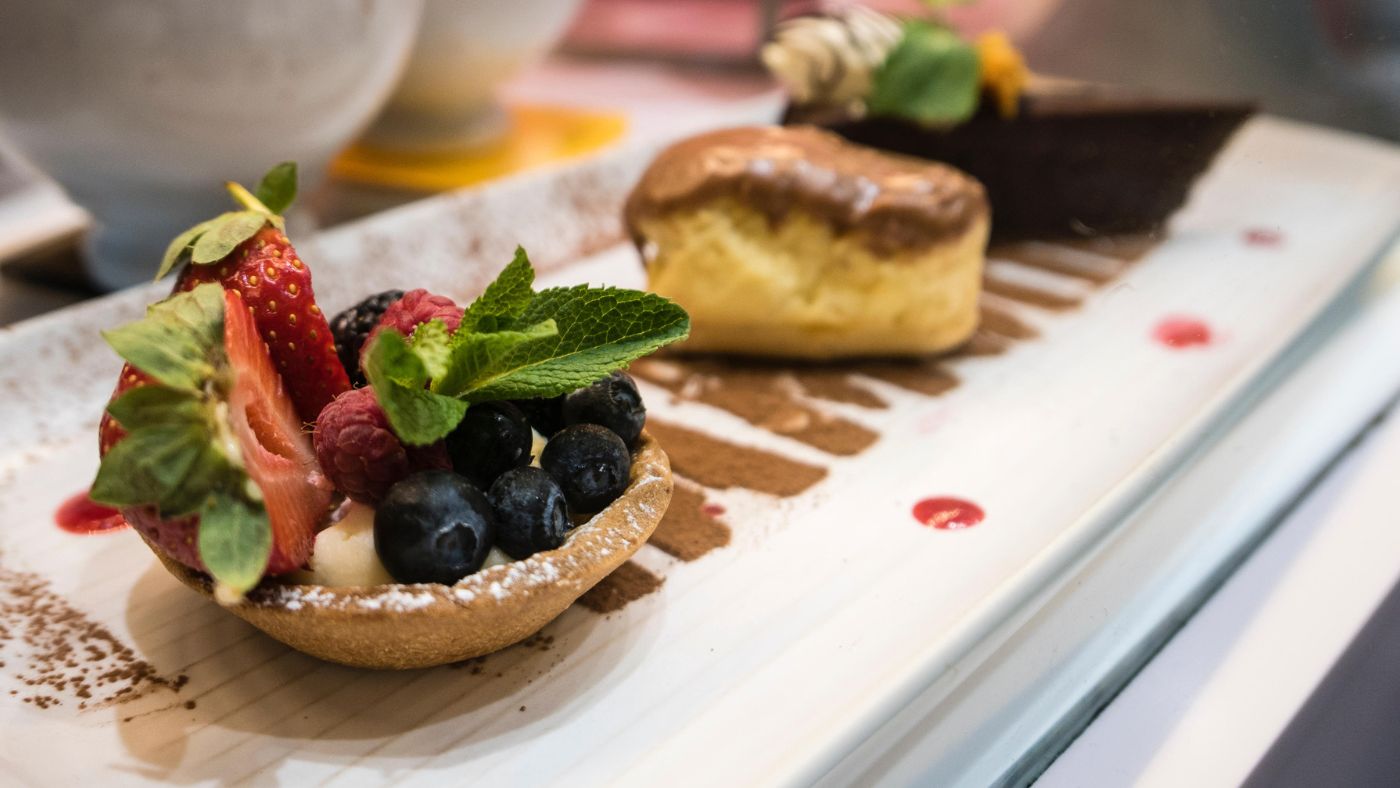
A change is taking place in the world of restaurant dining, said Tony Naylor in The Observer: puddings are becoming less plentiful – and less ambitious. There are still places that “go big on dessert”, but in most modern, independent restaurants, you’ll find no more than four on the menu, and sometimes only one or two. Partly this is down to diners becoming more likely to forego dessert – giving restaurants less incentive to offer them. It’s also the case that pastry chefs are becoming scarcer – and more expensive to hire. Many have left restaurants to take up more lucrative, and less taxing, work in patisseries or bakery-cafés, or to work as consultants.
With no dedicated pastry sections, restaurants have learnt to “box clever”. Puddings tend now to be “drawn from an increasingly narrow field”, with an emphasis on easily replicable, time-efficient formats: tart cases, meringues, parfaits. “Painstaking sugar work” is a thing of the past, as is “laminated pastry or tempering chocolate”. But as the restaurant critic Jay Rayner points out, it’s not that nothing is “going on in pastry”. It’s just that what is happening is migrating out of restaurants – into the coffee shops, bakeries and “stand-alone dessert bars” that are “booming” in parts of the country.
Making the best of asparagus season
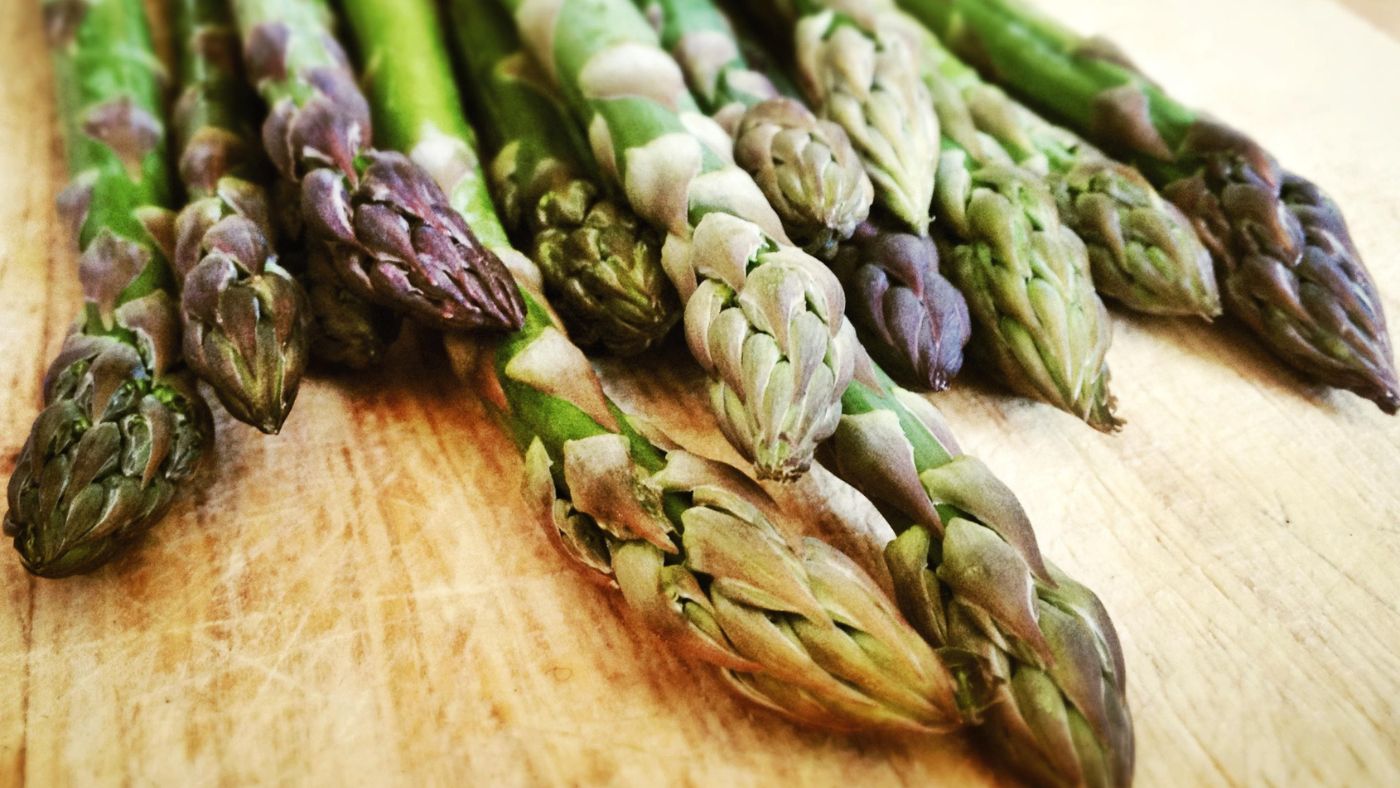
It’s British asparagus season, and like many people, I intend to capitalise on it by eating an awful lot of the vegetable, says Giulia Crouch in The Times. But since there are only so many times you can enjoy boiled asparagus with melted butter, “I asked some top chefs for their tips”.
The vegan chefs Henry Firth and Ian Theasby suggest shaving asparagus into thin ribbons lengthways, with a vegetable peeler, and then using the ribbons in pasta dishes; or slicing them into small circles widthways and adding these to a risotto. Tomas Lidakevicius, of Turnips in London, says asparagus shavings are “delicious pickled”. Thomas Heaney of Heaneys Cardiff prefers barbecuing: “For me there is no better flavour than asparagus barbecued over natural coals,” he says; he pairs his with taramasalata and toasted hazelnuts.
Meanwhile, Judy Joo, of Korean restaurant Seoul Bird in London, has an unusual technique for making her asparagus “ultra-flavourful”: before cooking it, she brines it in salt water, having first poked small holes in the spears with a fork to “allow the salt water to permeate the asparagus”.
Time to revive an Edwardian favourite

Pies, puddings and various other “old-school” dishes have lately enjoyed something of a renaissance, says Olivia Potts in The Spectator. Yet no one has, so far, sought to resurrect that Edwardian favourite, the “savoury”. This was a strongly flavoured “extra course” served towards the end of a meal, usually on toast or “with a small pastry croute”. Think Scotch woodcock (scrambled eggs and anchovy paste on toast), Welsh rarebit, or angels and devils on horseback.
The biggest populariser of the savoury was the journalist Ambrose Heath, who in 1934 “wrote a whole book on the topic”. Heath said that savouries provide an “admirable ending to a meal, like some unexpected witticism or a musing epigram at the close of a pleasant conversation”, adding that they are “the passion of the average Englishman and the bête noire of the ordinary housewife”. Admittedly, in our diet-conscious age, savouries might not find many fans. Yet Heath was surely onto something: while you wouldn’t want every meal to end with one, there remains “something enlivening about a punchy, crunchy bite as the evening wanes”.
A delicious umami dressing

When you have fat left in the pan after frying bacon, don’t throw it away, says Tom Hunt in The Guardian. Instead, store it in the fridge in a sealed jar, where it will keep for several months (or put it in the freezer and you can keep it even longer). Then, when the time is right, you can take it out and use it to create an “umami potion of a salad dressing”.
In her 2017 book “Too Good to Waste”, Victoria Glass has a recipe for a warm bacon fat vinaigrette, which she recommends pairing with beetroot, basil, bacon and green beans. The resulting salad is indeed “lovely”, but the vinaigrette is equally good drizzled over many other things. For instance, you can try it with a simple salad of gem lettuce, tomatoes, basil and extra crisped bacon; or use it to “turbocharge” cooked vegetables such as sautéed mushrooms, boiled new potatoes or roast carrots.
To make the vinaigrette, warm about two tablespoons of the bacon fat in a pan (or of course you can use fat from bacon you’ve just fried) and then add it to a small jam jar with one tablespoon of balsamic vinegar and one small clove of crushed garlic. Shake vigorously, taste, and then season as required with flaked sea salt and black pepper. Use while still warm to dress “your salad of choice”.
Smoky tea from a bygone age
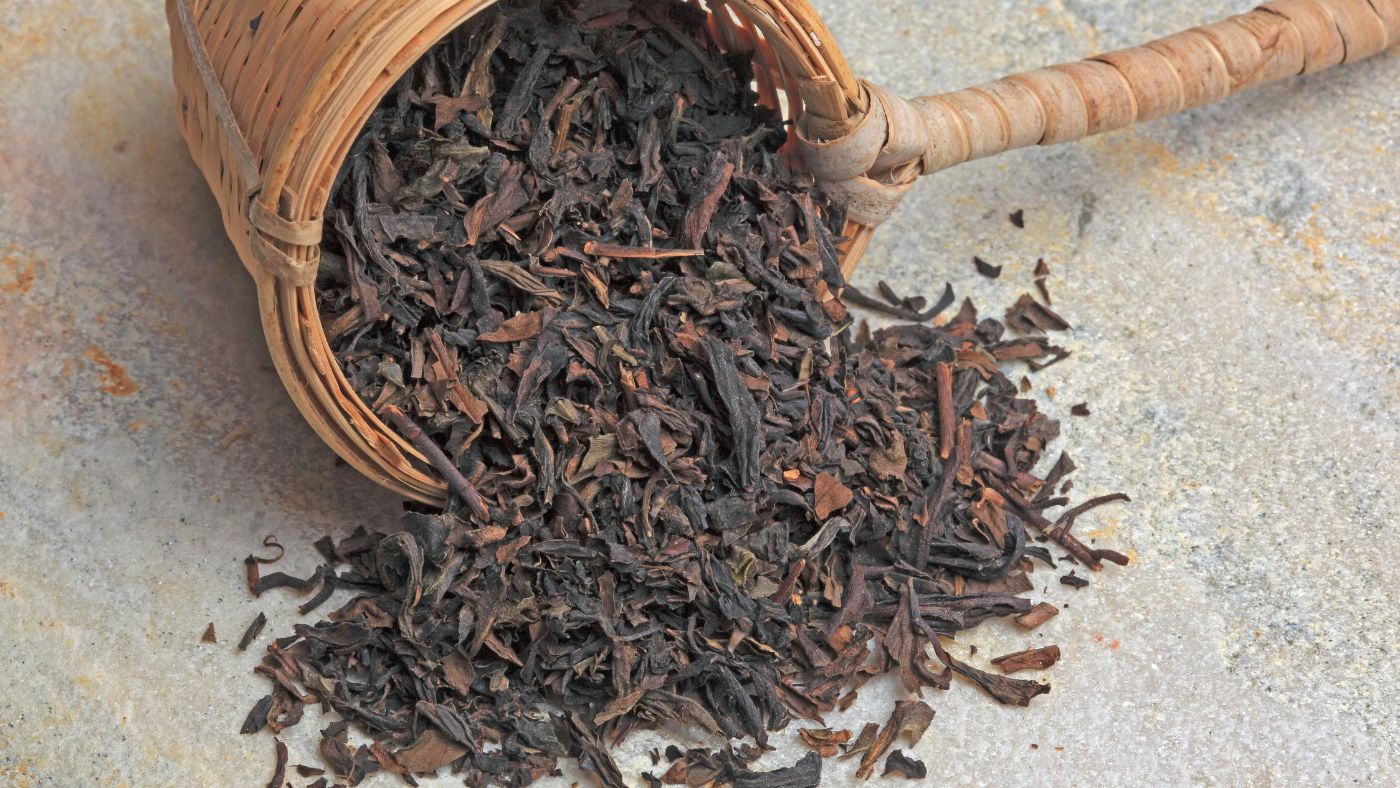
“It’s a brave person who tampers with an Englishman’s tea,” says Eleanor Steafel in The Daily Telegraph – advice you’d think that Twinings would heed, given that it has “been in the business for 300 years”. Yet the company has enraged tea connoisseurs by ditching lapsang souchong, and replacing it with a blend called Distinctively Smoky. Originating in China in the early 19th century, lapsang souchong gets its distinctive flavour from the tea leaves being dried over a pinewood fire. It became “seen as a quintessentially British brew”, and was Sir Winston Churchill’s drink of choice, which perhaps “contributed to its reputation as a masculine drink”.
Twinings said it had delisted lapsang because of challenges in sourcing supplies, but its decision may also have been down to falling demand. Lapsang has started to seem like a tea from a bygone age. Nonetheless, those who still drink it tend to be “evangelical about it” – which perhaps explains why the early online reviews of Distinctively Smoky have not exactly been rapturous. Twinings says its flavour is reminiscent of lapsang, but one buyer said that drinking it was more like “sipping a swimming pool after a chemical incident”, while another said it tasted of “old cigarettes”.
Moving beyond classic vinaigrette
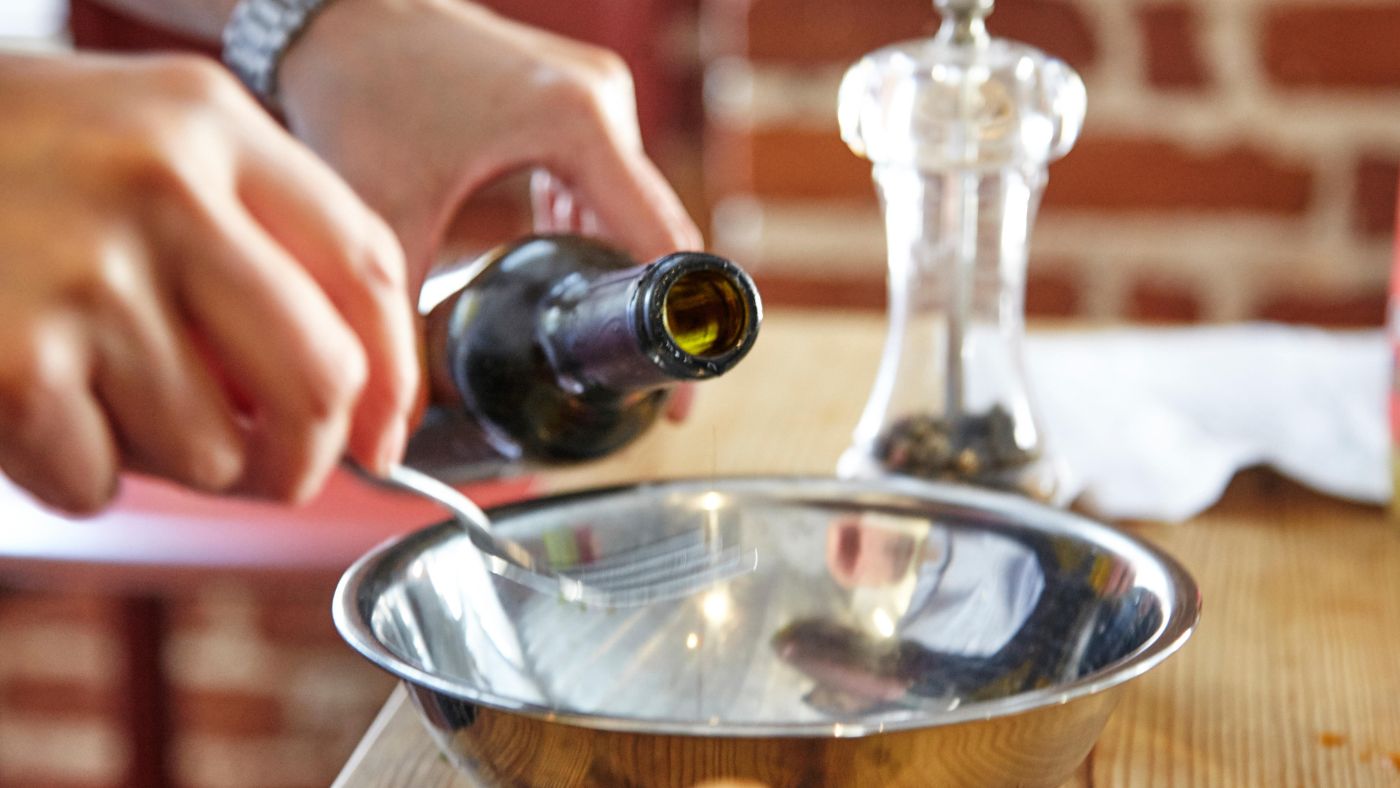
People who make salad dressings at home tend to rely on the classic vinaigrette, says Anna Berrill in The Guardian. Typically made by shaking olive oil and vinegar in a 3-1 ratio in a jar, with sugar, mustard, salt and pepper, it has much to recommend it. But there are other dressings out there. Food writer and salad specialist Emily Nunn thinks that “everyone should have a sesame-ginger dressing in their back pocket”. Hers consists of a mixture of garlic, ginger, sesame oil, Dijon mustard, rice vinegar, lime, soy, maple syrup and red pepper flakes.
Mayo-based dressings are another avenue to explore: you could try Skye McAlpine’s creamy mustard dressing, which she makes by combining a tablespoon each of mayonnaise, Dijon mustard and wholegrain mustard, two tablespoons of red-wine vinegar, three to four tablespoons of olive oil, and a pinch of salt. “It goes with pretty much everything: bitter leaves, baby gems, fennel, radishes, peas,” she says.
The cheesy pud revolution

If you think of puddings, flavours such as “pungent parmesan, sharp cheddar” or “earthy, salty gorgonzola” are unlikely to come to mind, says Giulia Crouch in The Times. But “a cheesy revolution is afoot”, in which London’s chefs are increasingly incorporating cheeses into their puds. On the menu at Nessa in Soho is a millefeuille made with Baron Bigod, a brie-style British cheese with a “mushroomy” flavour. At Oxeye in Nine Elms, chef Sven-Hanson Britt serves a canelé finished with frozen Brightwell Ash goat’s cheese. Meanwhile, “cheese-flavoured ice cream, from goat’s cheese to gorgonzola to parmesan, is popping up everywhere”.
Experts put the trend down to the increased popularity of “swalty” – the “irresistible midpoint between salty and sweet” that is a mark of sea-salted chocolate or salted caramel. But of course, the concept of using cheese in desserts is hardly new. Italian tiramisu contains mascarpone; the Middle Eastern dessert knafa combines filo pastry with rose-scented syrup and soft cheese; and as the food writer Thea Everett points out, “In Lancashire, they’ve been eating Christmas cake with Lancashire cheese for hundreds of years.”
The underrated pork knuckle
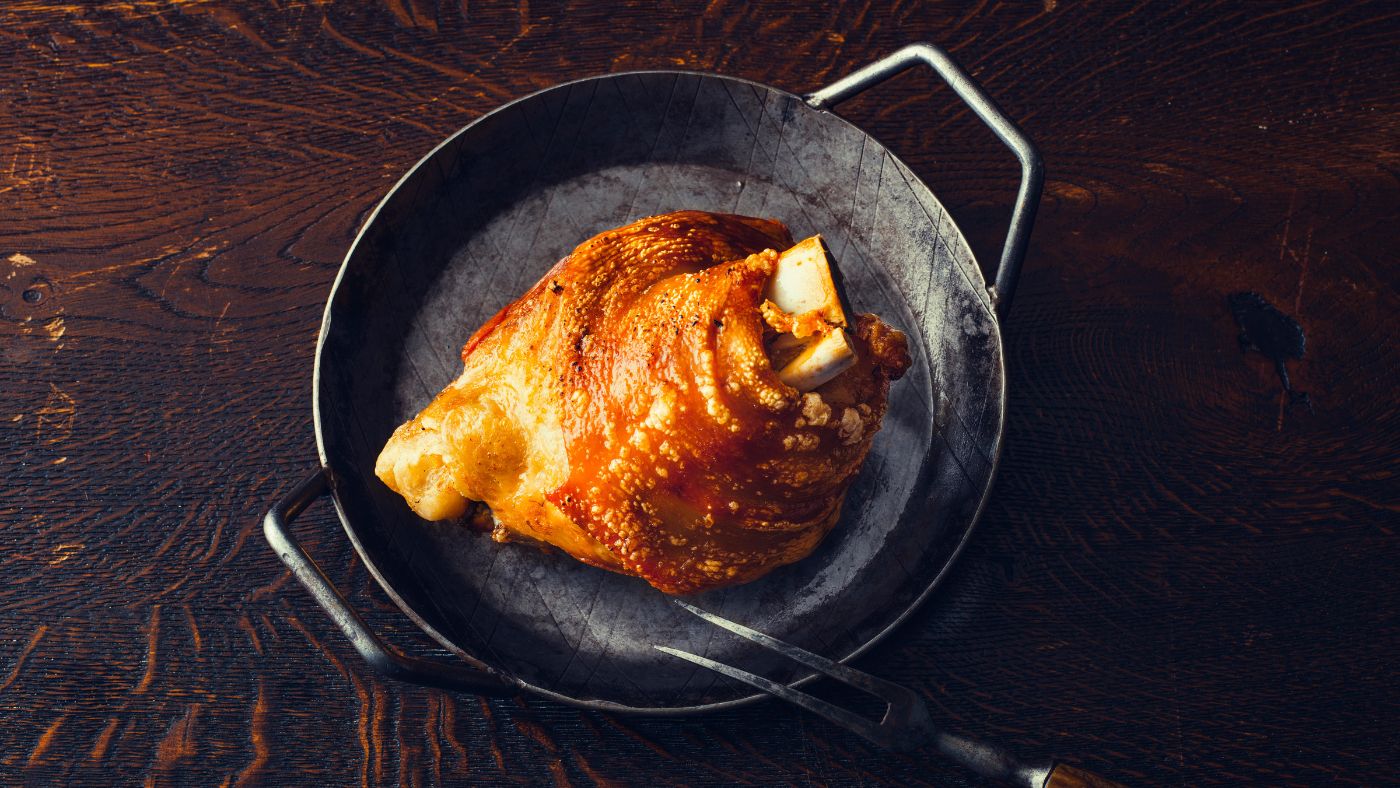
In the cost-of-living crisis, shoppers are increasingly turning to “economical and lesser-used cuts of meat”, says Giulia Crouch in The Times. According to Waitrose, sales of chicken wings are booming, as are those of “other so-called forgotten cuts” such as ox cheek, beef shin and lamb neck. But according to chef Chris Leach, of the acclaimed Italian restaurant Manteca in London, one cheap cut remains somewhat below the radar – and that’s pork knuckle. Cooking one, he says, will not only give you a “rich and gelatinous stock”, but produce a delicious dish that’s “really good for you”.
Start off by gently frying a whole knuckle (readily available from any decent butcher) in a pan with a bit of butter, until it has some colour. Then take it out and add a chopped onion, three roughly chopped carrots, a few garlic cloves and a squirt of tomato purée to the pan, and gently cook these until the veg have softened. Then put the knuckle back, cover with water, and, with the lid on, cook in a 160°C/gas 3 oven until the knuckle is “super soft and the bone slides out”. Then shred the meat and serve it with mashed potato and greens.
A trend that harks back to the past

In food magazines and cookbooks, you’ll often find that the recipes now come with QR codes linked to “short videos demonstrating tips and techniques”, says Bee Wilson in The Wall Street Journal. It might look like a hi-tech gimmick, but it harks back to a time before printed recipes were common, when people mainly learnt to cook by repeatedly watching others. And actually, it is a very good way to learn.
If you are trying to master a new technique, for instance, a video can make clear in seconds what it may “take a thousand words to explain”. Take ravioli. In the past, when following cookbook recipes, I have “often erred on the side of stuffing the dough so generously that the parcels exploded as they cooked”. But when my son and I recently made a ravioli dish from Olia Hercules’s book Home Food: Recipes to Comfort and Connect, we familiarised ourselves with the method by watching Hercules’s QR-coded demonstration. And miraculously, the ravioli “worked first time”.
A quiche fit for a king?
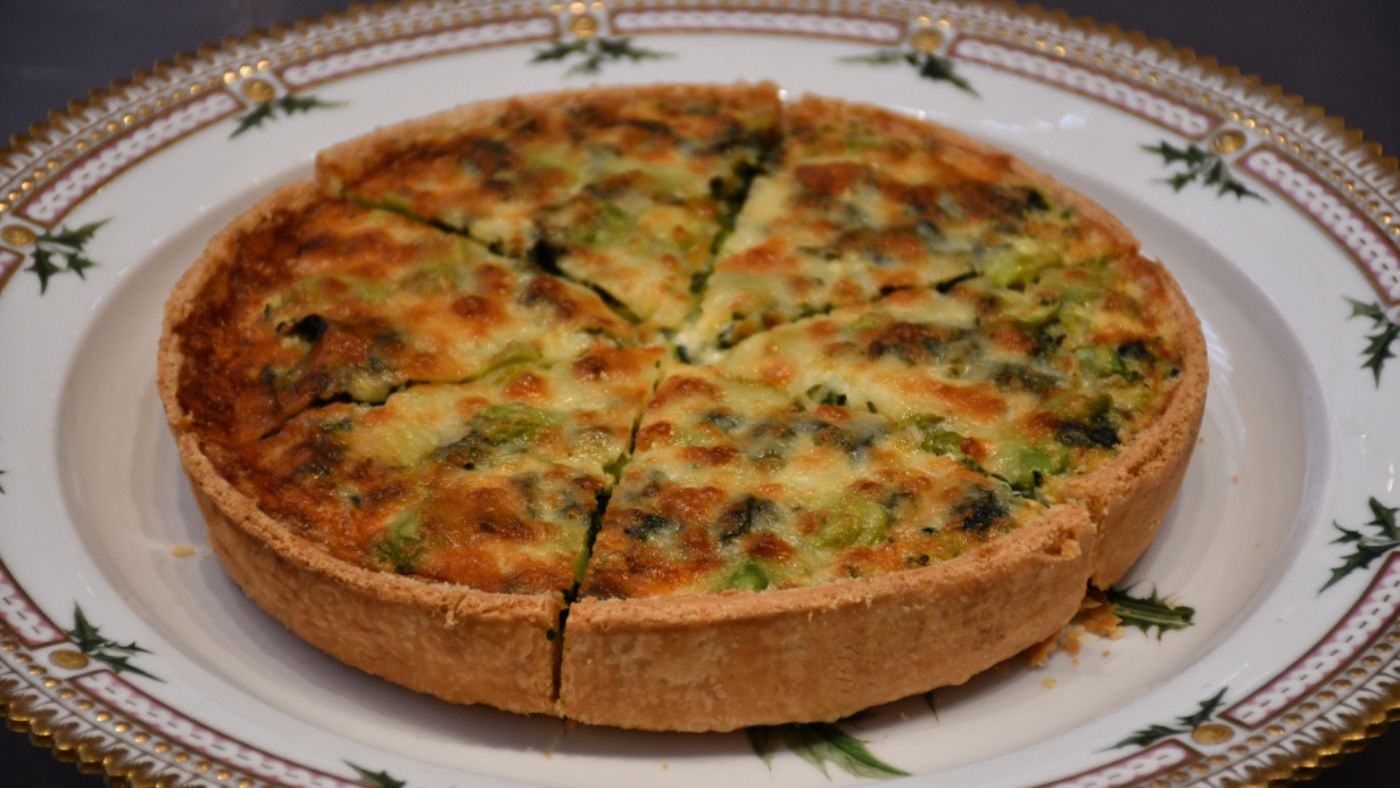
“From coronation chicken to platinum pudding, royal occasions demand a signature dish,” said Caroline Davies in The Guardian, and Buckingham Palace unveiled the one that has been created to mark King Charles’s coronation. Developed by royal chef Mark Flanagan, “coronation quiche” contains spinach, cheddar, broad beans and tarragon, and uses lard in its pastry, though this can easily be altered for vegetarians. The palace hopes it will be the centrepiece of “Big Lunch” celebrations on 6 May.
With its vegetable-focused, seasonal filling, the quiche ticks many of the right boxes, said Felicity Cloake in The Guardian. And it’s perfectly tasty. But I’d suggest a few modifications. Make twice the amount of pastry stipulated (or you’ll struggle to fill the flan case); return the pastry case to the oven for five minutes without baking beans after the blind baking (this helps avoid the dreaded “soggy bottom”); and after cooking the spinach, squeeze out every last drop of water before adding it to the filling – otherwise you’ll “end up with egg soup”.
Finding inspiration in pantry porn
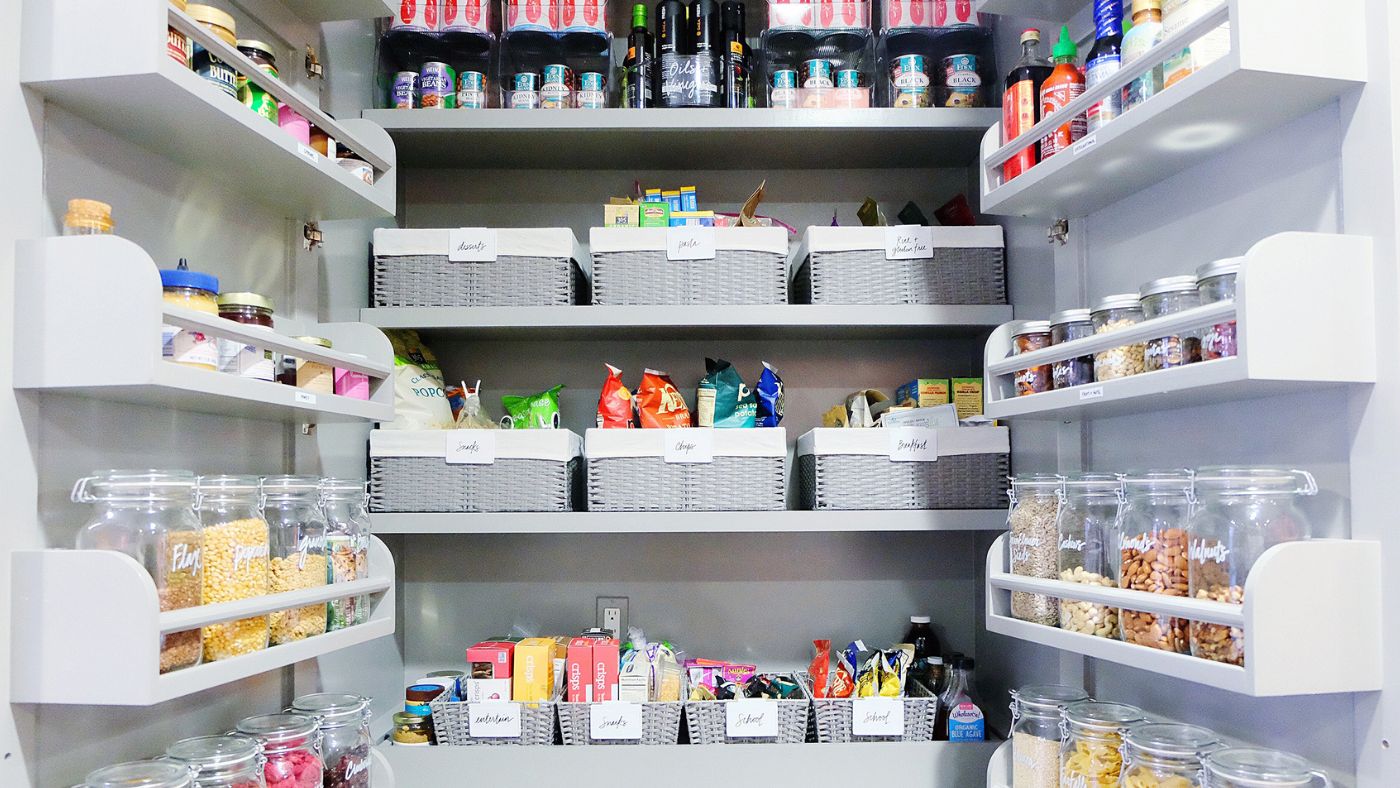
Look on the social media profiles of certain public figures – Gwyneth Paltrow, Victoria Beckham – and you’ll be treated to pictures of their impeccable pantries, says Ajesh Patalay in the FT. With “row upon regimented row of condiments, canisters and Kilner jars”, these spaces are like “temples to a higher order”. Most of us don’t have a pantry, but we all have “cupboards and drawers and a modern-day larder (in the form of a refrigerator)”. And with “a little discipline”, these can be made similarly inviting.
Start with a stock take. It can be a wake-up call: how did you end up with five pots of Dijon mustard? Keep the items you use daily closest to hand; for everything else, ask yourself: does it really need to be in the kitchen? Some people, for instance, have drawers full of cold remedies that could just as well be in the bathroom. Group food into zones, and consider decanting it. Clear acrylic containers are practical, because you can see what’s in them and how much of it is left. Think about whether you want them to be stackable, or if you might want to pour from them. For labelling, you could get a Dymo label maker, or just stick on a piece of masking tape, and write on it with a Sharpie. That’s what chefs do.
Why venison is going to food banks

The cost-of-living crisis and deer overpopulation sound like “disparate problems”, says Tom Ball in The Times. But a food charity has just launched a pilot scheme that could “provide a neat solution” to both. In the coming year, The Country Food Trust plans to supply a million ragu meals, made from wild venison supplied by Forestry England, to food banks around the country. Deer have no natural predators in Britain, and have to be culled to stop them doing untold damage to trees, crops and other plant life. But for two years during the pandemic culling ceased, and as a result the deer population has reached roughly two million – its highest level for a millennium.
Just to keep the population stable would require culling 750,000 deer this year. But with very little demand for venison in Britain, and difficulties in exporting it, there isn’t a market for that much meat. “It’s crazy and indefensible,” said Charles Walker MP, chairman of The Country Food Trust. “Venison is a wonderful, sustainable resource, but is seen as too posh to eat, ergo – very few people eat it and it ends up being made into dog food.” The idea is to supply venison first to food banks, and later to schools and hospitals, in order to show the British public what they are missing.
The trend for ‘immersive’ dining

In a “world of diminishing attention spans”, says James Innes-Smith in The Spectator, restaurateurs are under pressure to devise ever more “outlandish” experiences. The latest trend to hit London is for interactive – or immersive – dining.
At Murder Express, a “fake railway carriage” in east London, diners can enjoy a four-course meal while watching “hammy actors dressed in 1920s garb” perform a murder mystery. At The Top Hat on Tottenham Court Road, a three-storey shop has been turned “into a giant lifesize Monopoly board” – enabling “budding property tycoons to live out their capitalist fantasies before stuffing their faces with burgers and fries”.
Meanwhile, at the Russell Square Radisson Blu, diners can sup “tasteless tinned soup” while watching a tribute to the classic comedy Fawlty Towers. “Proper foodies” will “scoff”, but for casual diners, such experiences can be a good way to spice up a dull Thursday evening.
A fine time for blood oranges
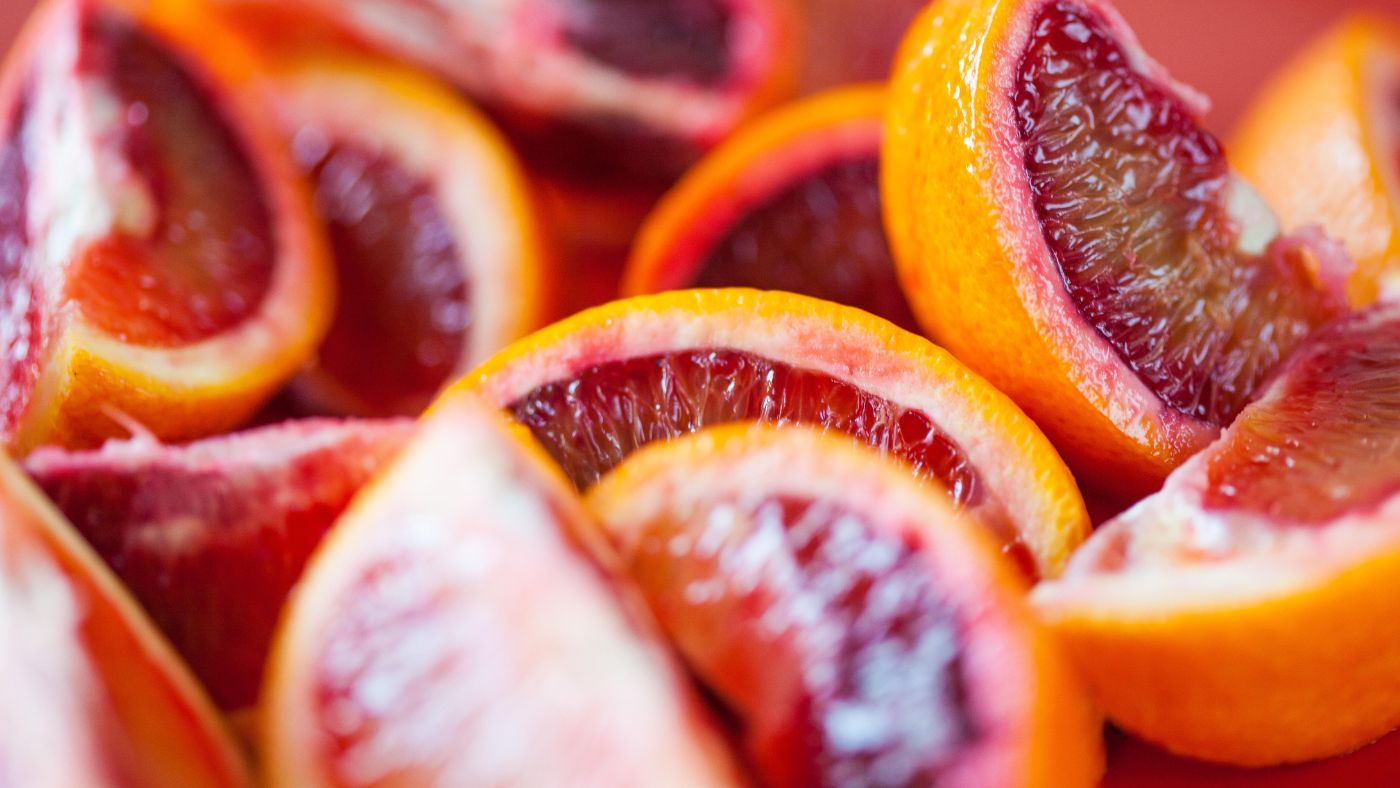
Blood oranges are “one of the great citrus treats of this part of the year”, says Bee Wilson in the Financial Times. Not only do they have that striking deep colour – as though they’ve been soaked in sunset, according to one Italian writer – but they have a remarkable “perfumed” flavour too. Both the fruit’s colour and “berry-like” taste are produced by chemicals called anthocyanins, which are found in other deep-coloured fruits such as blackcurrants and blueberries. In most varieties, these are only triggered “when the night-time temperature is at least 10°C cooler than the day time during autumn and winter” – hence why blood oranges only thrive in certain places, such as at the foot of Mount Etna in Sicily.
Perhaps the most glorious way to enjoy them is as they come – “juices staining your hand, Lady Macbeth-style”. But they also work well in many sweet and savoury dishes. “A caramelised blood orange can be very pleasing,” as is Claire Saffitz’s celebrated blood orange and olive oil cake. Or use them in a salad. “In Sicily, cooks slice them thinly into a salad along with olive oil, fennel and salt.”
How to obey the laws of the fridge

Last month, the Food Standards Agency reneged on its long-standing advice not to put potatoes in the fridge, in the light of new research showing that chilling spuds doesn’t make them any more harmful, and makes them last longer. But spuds aren’t the only item we’ve been storing all wrong, says Sarah Rainey in the Daily Mail. Other vegetables that people tend to keep in their fridges ought to come out: aubergines and peppers tend to go “soggy” when chilled, and are best kept at room temperature.
Most fruits, by contrast, should be refrigerated – with the exception of bananas, which will turn black in the cold. As for ketchup – mainstay of fridge doors – experts insist that with all that sugar and vinegar acting as natural preservatives, it should keep perfectly well in the pantry. By contrast, nuts contain oils that can go rancid in a room-temperature cupboard.
The peculiar craze for tinned fish
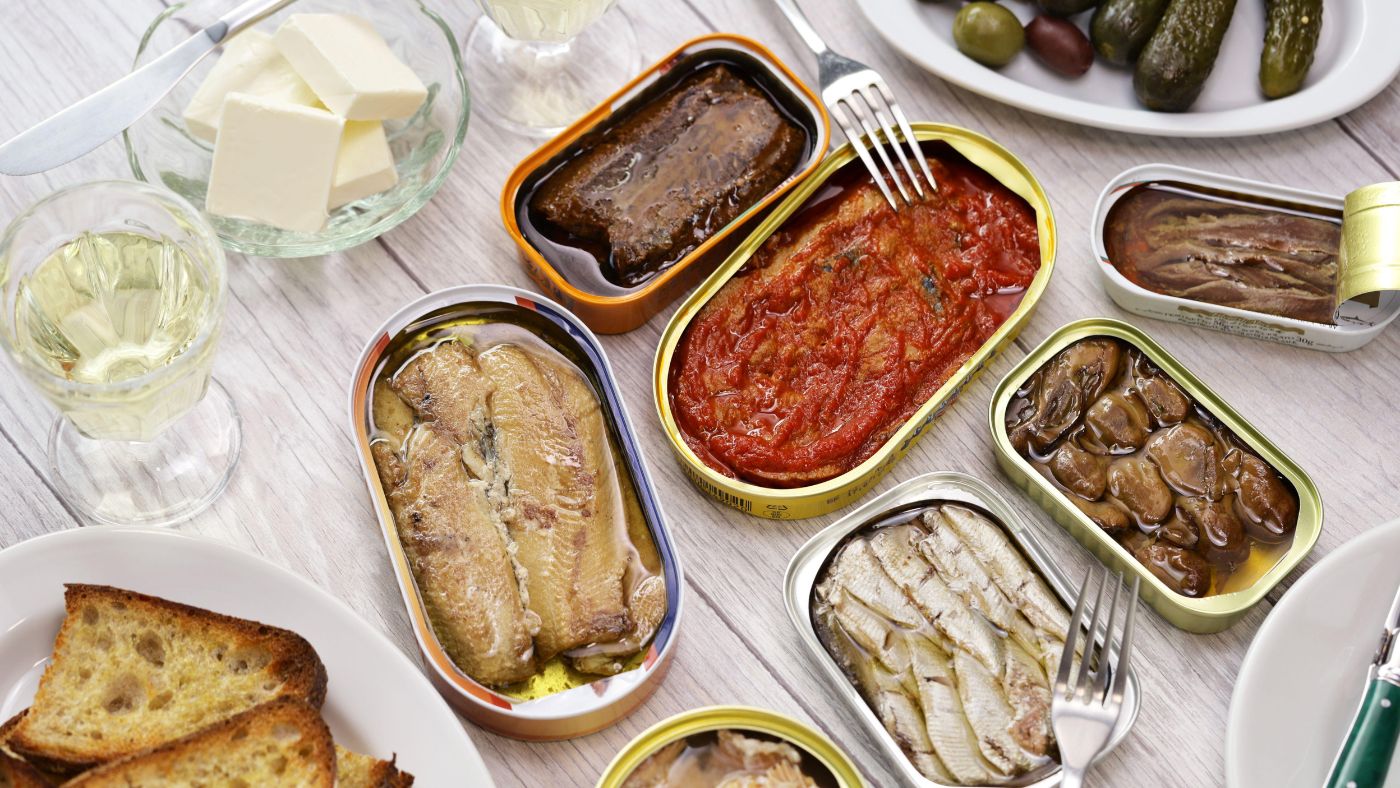
“History shows us that there is no morsel that cannot be hauled into fashionability,” says Ed Cumming in The Daily Telegraph. Take ’nduja, an obscure spicy sausage, which seemed to appear overnight on every pizza. Or the craze, ten years ago, for the croissant-doughnut hybrid known as the “cronut”. The latest foodie fad is for tinned fish – “not your usual salmon or tuna”, but fancier options such as mussels, calamari, sardines and octopus. TikTokers refer to #tinfishdatenight; Ortiz’s distinctive yellow tins are “everywhere”; and demand is such that at a new restaurant in Mayfair, Saltie Girl, “you can pay £52 for a single tin of cockles”.
Although I have “no particular beef with tinned fish”, this trend strikes me as one that “could have been cooked up in a lab”. It seems designed to appeal to the perennial British thirst for an “idealised Mediterranean lifestyle”, while exploiting a “certain patriotism”: a new breed of manufacturer is seeking to preserve the “bounty of our coasts” by preserving British seafood in cans. The marketing appears to be working – sales have risen sharply – but it won’t make me overcome my scepticism. “A tin of pilchards might be fine when you’re sat at a bar in Mallorca, but I’m not going to open a tin of sardines for a dinner party.”
Bristol's booming dining scene
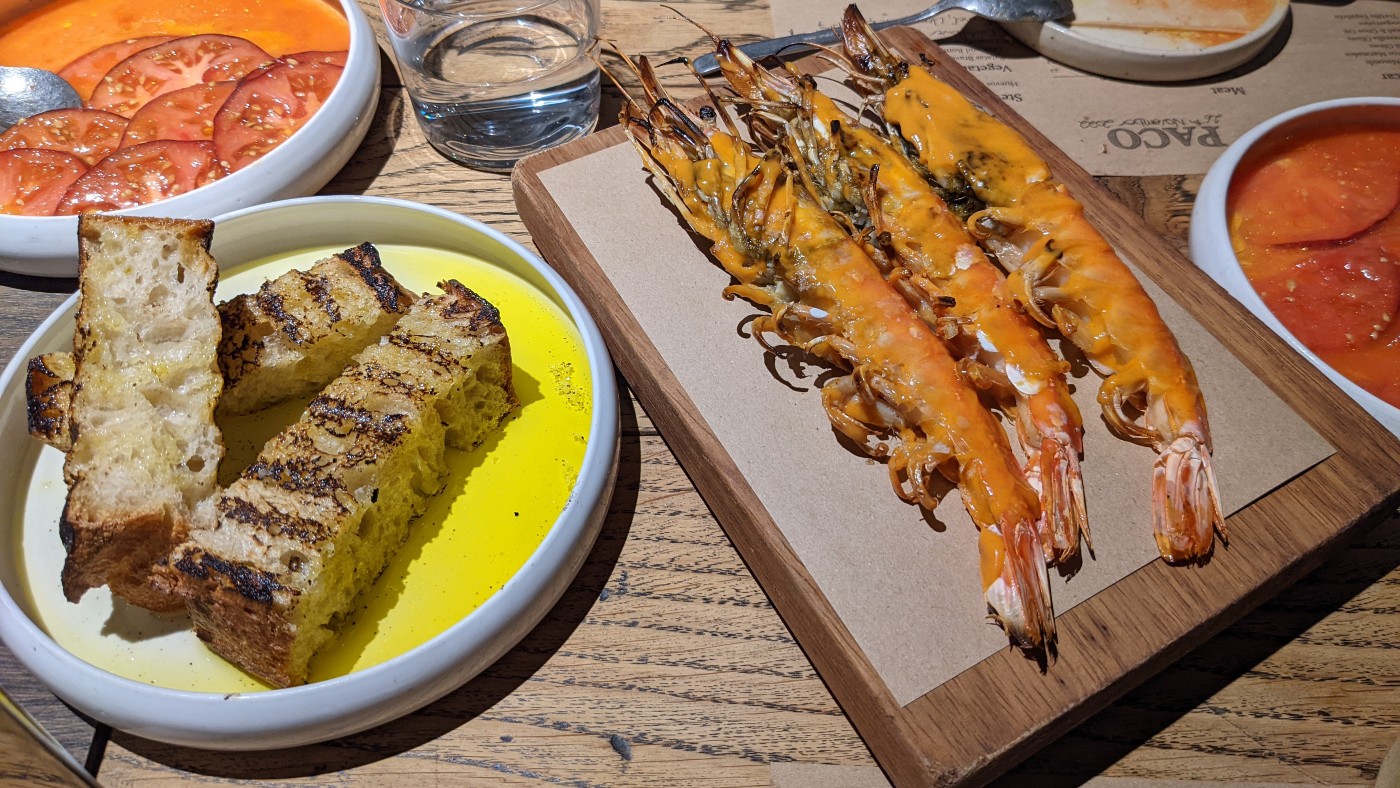
In recent years, thousands of people have “fled London for buzzy, creative Bristol”, says Marianna Hunt in The Spectator. And this has helped the city develop a “truly booming” dining scene – one where, unlike in “profit-driven” London, chefs are largely free to “cook what they want”. There are endless options for dining out – Bristol has more Michelin listings than any city outside London – but four places in particular stand out.
Paco Tapas, in Redcliffe, has the lively atmosphere of the “best Basque bar de tapas” and a menu of lovingly crafted dishes. The cauliflower steak in melted manchego is an “absolute showstopper”. Nearby – and from the same team – is Casa, which opened last November, and “channels the spirit of Italian home cooking”: dishes include tortellini in brodo and braised beef cheek.
Littlefrench, in Westbury Park, offers a menu of “beautifully cooked French classics – from steak frites to a flaky halibut in a cider and mussel sauce” – and an impressive wine list. In the north of the city, try the brilliant Wilsons: all its fruit and vegetables come from the restaurant’s own smallholding, and the weekly set six-course menu – based on what’s ready to harvest – costs £60.
How to liven up your batch cooking
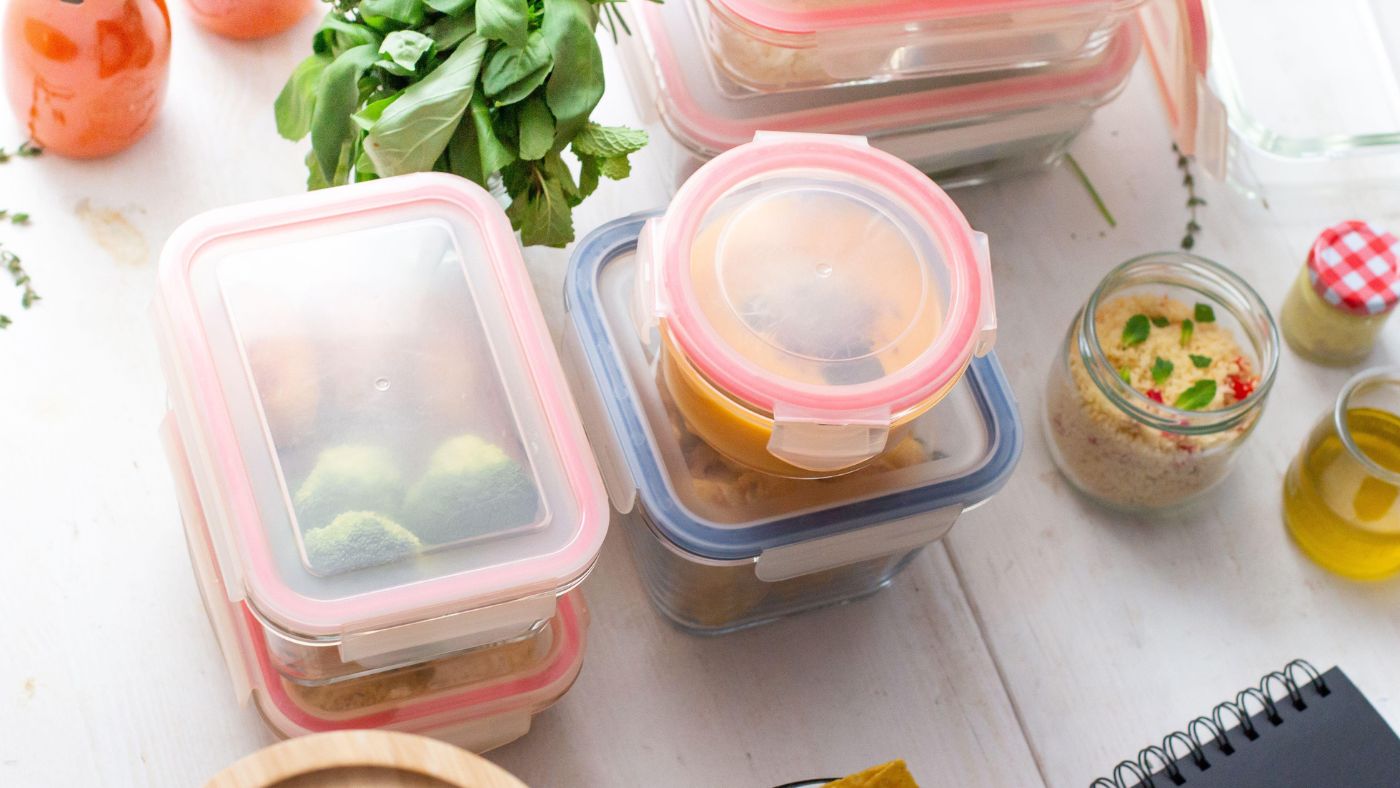
“We are, it seems, in the era of batch cooking,” says Eleanor Steafel in The Daily Telegraph. A third of us, according to a recent survey, aim to spend our Sundays cooking for the week ahead. And sales of Tupperware and large pans are rising accordingly. But how to avoid the downside of batch cooking – that you end up eating the same meal multiple times for days on the trot? One answer is to be so dedicated to the task that your freezer drawers are “stacked” with “nutritious, varied meals”.
Another is to be a bit more inventive. Have a range of “sprinkly bits” to hand: “seasoned natural yoghurt, a dollop of harissa, some crumbled feta or toasted pumpkin seeds” can transform a soup or stew into something “entirely new”. Don’t be afraid to repurpose: just because a dish started life as a bolognese, it doesn’t have to stay that way; with some added spices, it can easily evolve into a tagine or chilli. And remember the egg trick. Almost anything “slightly saucy and tomato-based” can be turned into a delicious breakfast, brunch or dinner with the addition of a poached or fried egg.
Waitrose bids farewell to Heston
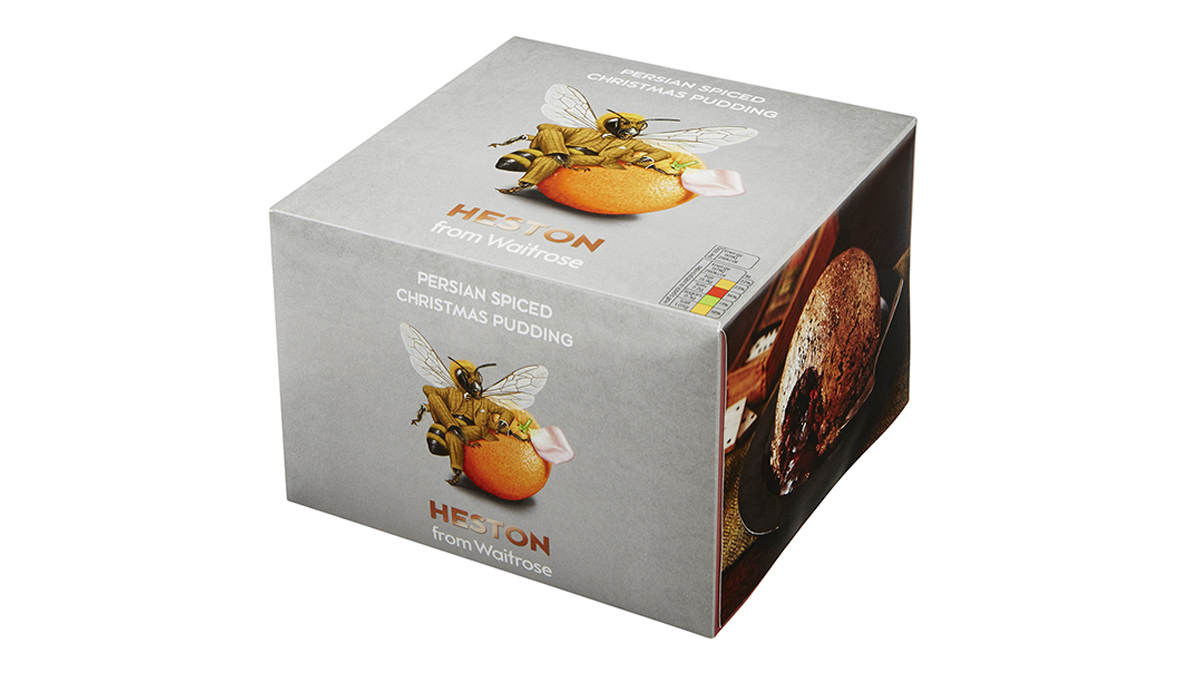
“After 12 roller-coaster years”, Waitrose has parted ways with Heston Blumenthal, says Harry Wallop in The Times. And not before time. The chef’s brand of culinary wizardry was always an odd fit for the stolid supermarket – and he came up with some pretty awful products for it. When he was hired in 2010, it was as “part of a double act” with Delia Smith. That made a certain sense: “Mrs Prudence” could help “rein in his excesses”. But after Smith was dropped in 2013, he was “allowed to run wild” – and his products grew ever less appealing. A nadir was his “bacon and banana trifle”; there was also a pine sugar-dusted mince pie that tasted “of toilet freshener”.
Hopefully, this divorce “marks the final nail in the coffin of wacky new product development in supermarkets”. Of course, innovation has its place, but when you head to the supermarket on a Tuesday night, what you actually want is a “really good lasagne or fish pie” – not something with “an unexpected twist”.
A rarefied import from Japan
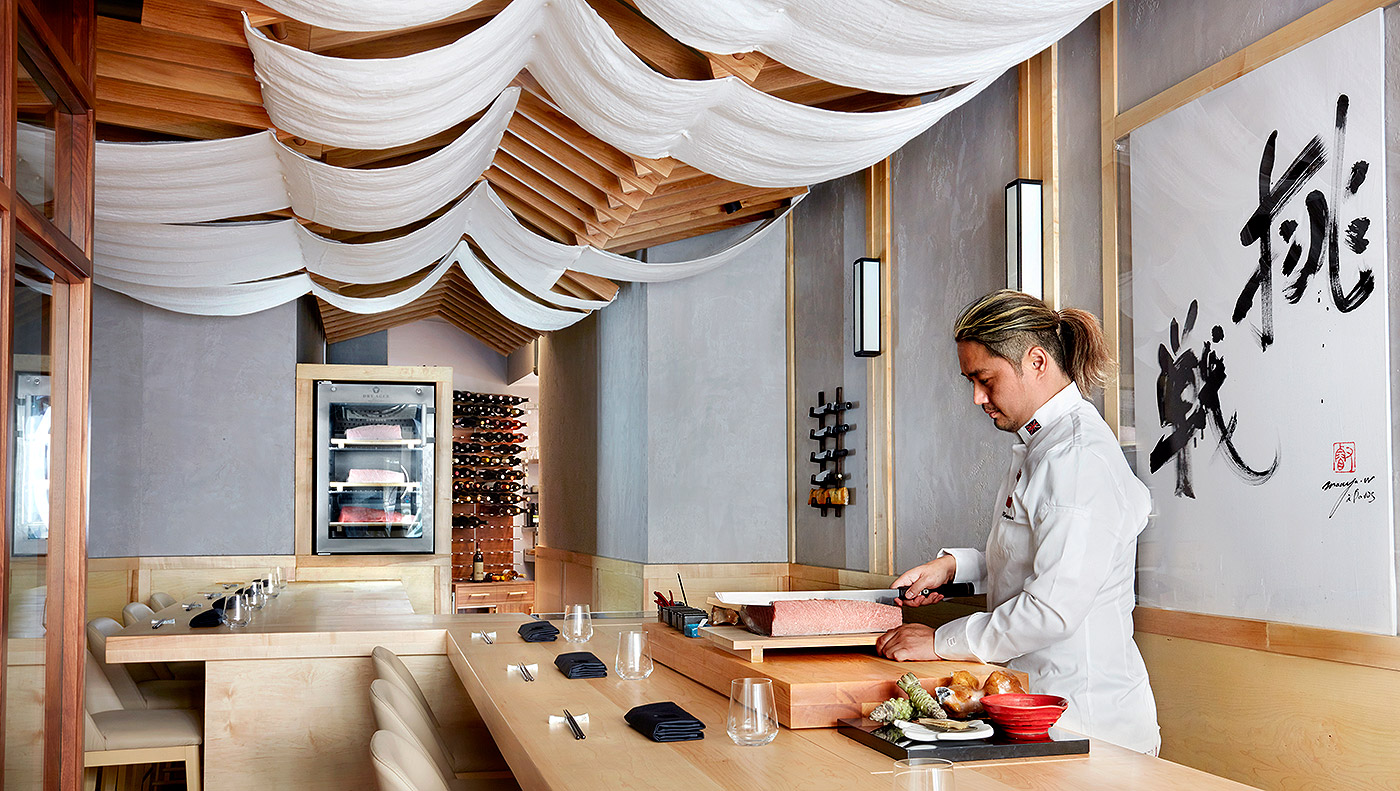
“The vision goes something like this,” says Ed Cumming in The Daily Telegraph. “In a small room of temple-like quiet, a wizened master” – invariably a man – prepares a selection of intricate delicacies, which he passes to a handful of “ecstatic” diners. Such are the principles behind omakase, a form of high-end cuisine that originated in Japan in the “booming” 1990s, and which translates as “I’ll leave it up to you”.
Over the past decade, omakase restaurants have started appearing outside Japan: in London, the first to make a mark was the nine-seat Araki in Mayfair, which won three Michelin stars in 2018 (though it lost them when its head chef left in 2019). Given its rarefied nature and corresponding expense, you’d think omakase wouldn’t thrive in a cost-of-living crisis. Yet “these restaurants are sprouting everywhere”.
Recent additions in London include Taku, Roji and Maru in Mayfair, and Mayha in Marylebone. In Manchester, diners can experience omakase at Musu: it has a dedicated six-seat counter “where the chef serves wild bluefin tuna and imported Wagyu beef”. Eating at these restaurants costs hundreds of pounds, but there are cheaper alternatives. At Sushi Kamon, in the Arcade Food Hall in London WC1, there’s a ten-course omakase for £45 – making it a “good option for first-timers”.
The French cheese meltdown
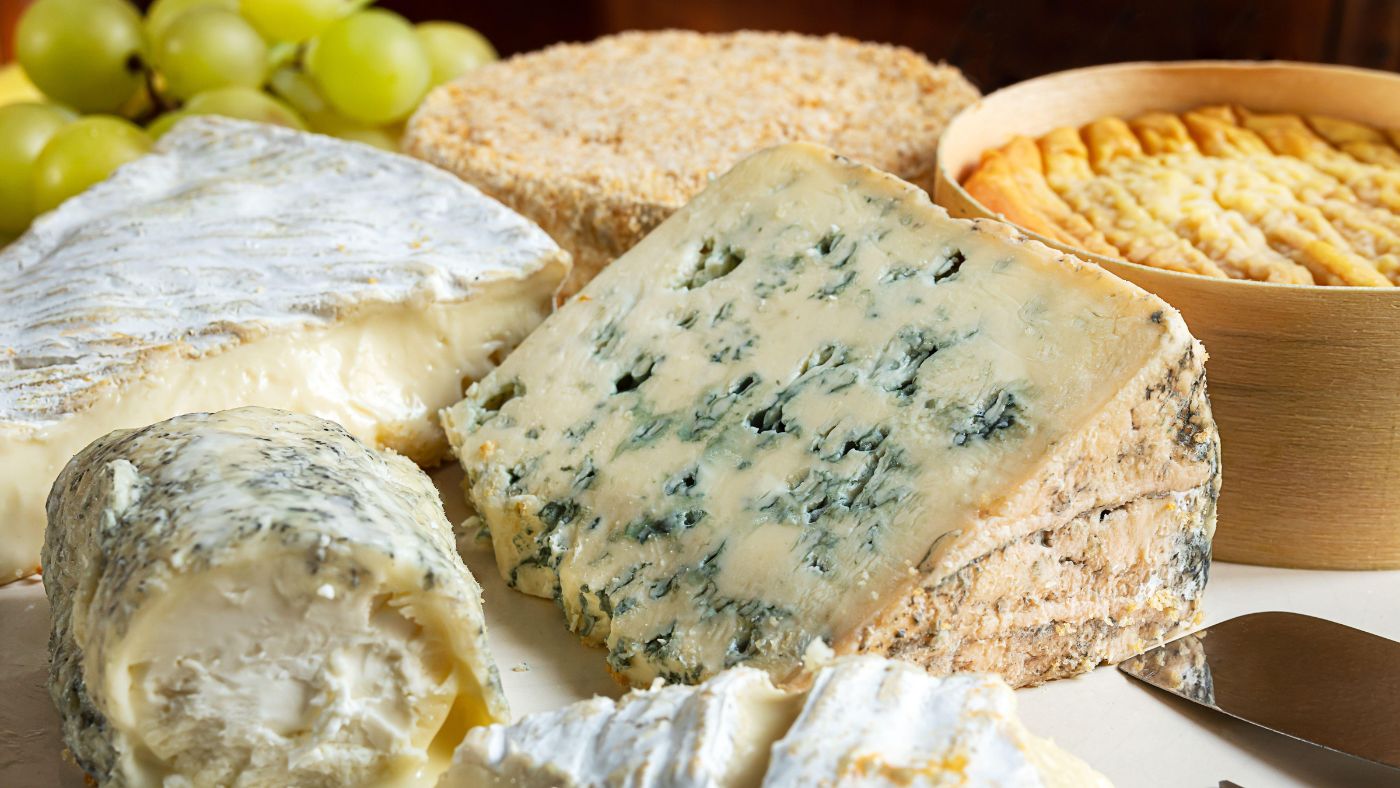
It is the land of brie, roquefort and camembert, yet last month France saw its most famous varieties reduced to also-rans in a global ranking of the world’s 100 best cheeses, says Adam Sage in The Times. To the chagrin of patriots and gastronomes up and down the country, not one French variety appeared in the top ten, which was based on the results of an online poll conducted by the culinary website TasteAtlas.
Reblochon, in 13th place, was the highest-placed French offering, with comté one spot below it. Italy dominated the top ten, with eight entries: parmesan came first, burrata second, with mozzarella and pecorino following behind. The two non-Italian cheeses were Portugal’s queijo Serra da Estrela in seventh place; and bundz, from Poland, in ninth. Matija Babic, the founder of TasteAtlas, insisted his site had rigorous systems in place to invalidate “nationalist votes and bots”. But the French were incredulous. “We, the land of cheese. How is it possible?” demanded TV presenter Marie-Sophie Lacarrau. Still, they did better than the British, none of whose cheeses even made it into the top 100.
The fashion for gourmet mushrooms
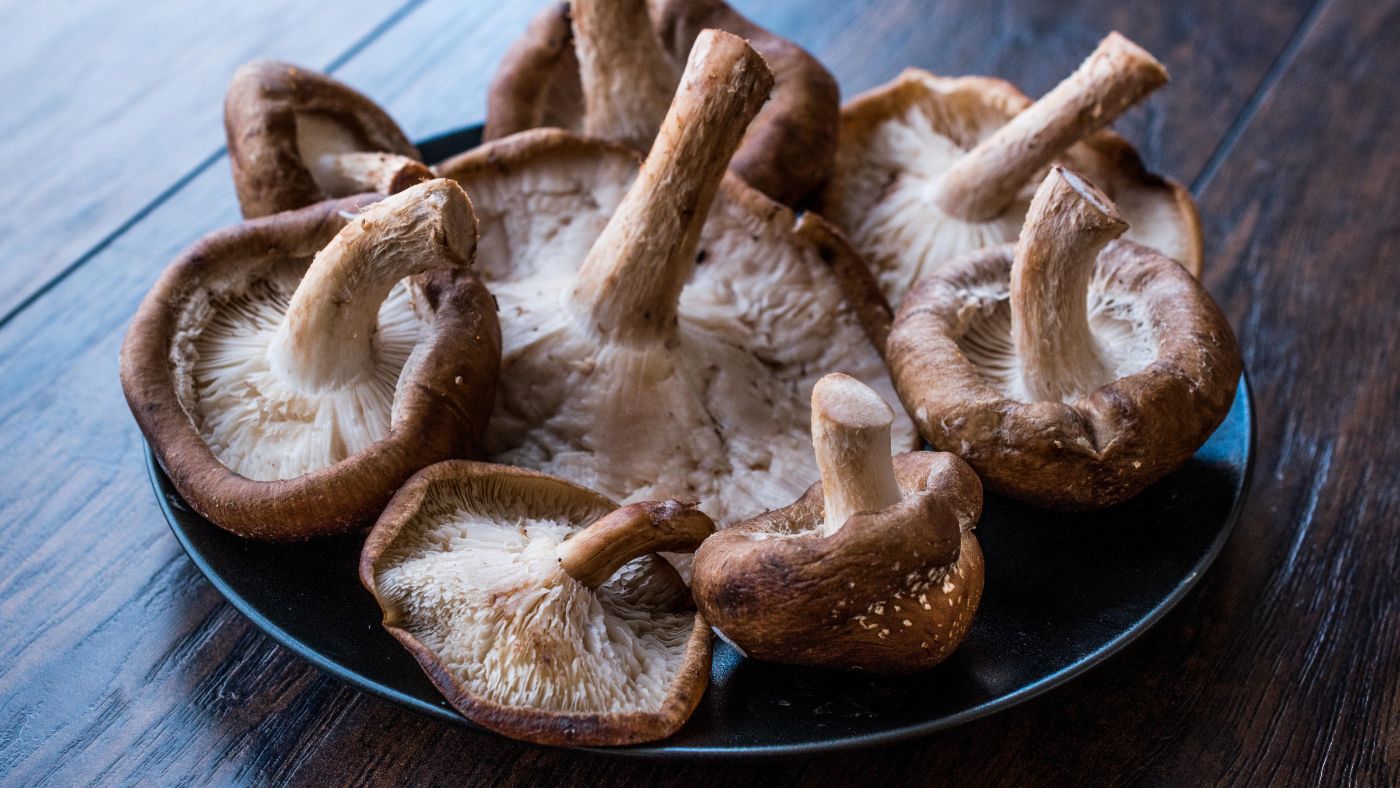
It’s the latest “showpiece” for ambitious restaurants, says Tony Naylor in The Observer: not a meat-ageing fridge or a lobster tank – but a cupboard full of mushrooms. A growing number of British chefs are finding that by cultivating their own, they can avoid the unpredictability of wild mushrooms and serve unusual fungi year-round.
At the recently reopened Ledbury in London W11, Brett Graham cultivates mushrooms in a disused linen cupboard, using inoculated growing blocks of compressed bran. Varieties include “beautiful fresh” shiitake, and the much rarer lion’s mane. Fallow, in central London, uses spent coffee grounds to produce its mushrooms, as does The Pig hotel chain. Urban mushroom farms are also springing up: Stockport Fungi supplies restaurants in Manchester, and is especially known for its tarragon oysters.
The slow cooker stages a comeback
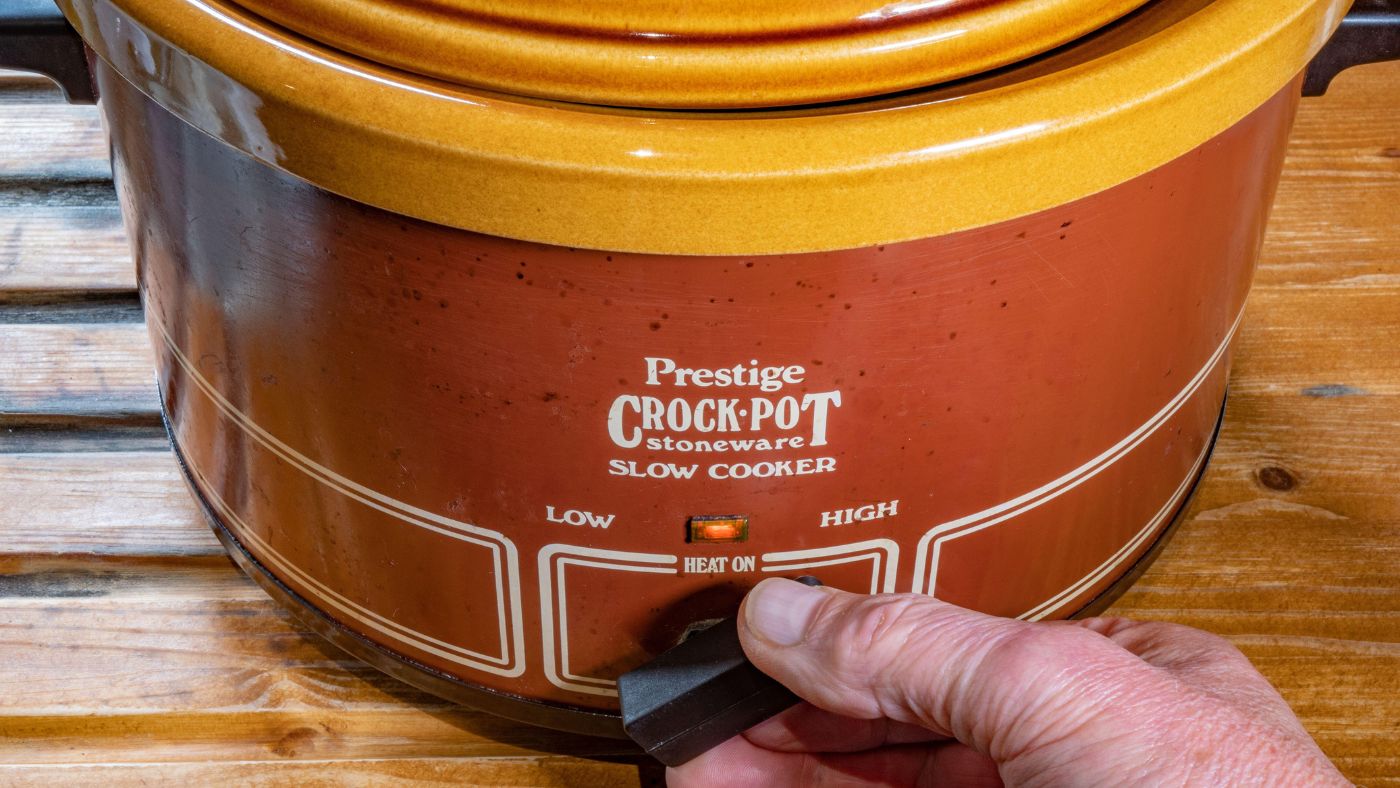
With Britain “beset by economic tumult and strike action”, it seems as if “the 1970s are calling”, says Victoria Brzezinski in The Times. And so perhaps it makes sense that one of the most popular kitchen gadgets of that era – the slow cooker – is making a comeback. The “Crock-Pot” (as the most popular brand was called) first became a hit in the 1970s, at a time when growing numbers of women were entering the workplace.
Its appeal was that it “offered a cheap, foolproof way” to make a hot meal if you were out all day. In the 1980s, slow cookers were “usurped by the convenience of microwaves” and ready meals. But now, “with all eyes on household expenditure”, they are returning to favour: last year, Lakeland sold nearly three times as many of its £59.99 six-litre slow cooker as in 2021.
Slow cookers are associated with stews and casseroles – bœuf bourguignon is a classic – but they’re surprisingly versatile: you can use them to make dahl or porridge, and even to roast a chicken. For creative ideas, look to Nathan Anthony (@boredoflunch on Instagram), author of Bored of Lunch: The Healthy Slow Cooker Book (£14.99; The Week Bookshop).
Knotweed is surprisingly nice

Japanese knotweed is definitely not something any homeowner wants to find in their garden, says the foraging expert Liz Knight in The Daily Telegraph. An invasive species, it is extremely destructive, and “almost impossible to get rid of”. If you have it on your land, you should seek advice about how best to control it. But there is a silver lining: knotweed shoots are packed with nutrients, and delicious (though be sure the plant hasn’t recently been treated with herbicide). From the same family as rhubarb and sorrel, knotweed has a tart, lemony taste that means it can “swing merrily between savoury dishes and sweet”.
Use the shoots in a stir-fry, or turn them into a mint sauce-style condiment by chopping them up with mint, fennel and dill, and adding a generous glug of sweetened apple cider vinegar and a pinch of salt and sugar. (This is especially good with oily fish.) Alternatively, use knotweed to make a fool. Cook 450g of young chopped knotweed stems in a pan with the zest and juice of a lemon and 3 tablespoons of sugar and cook until tender. Leave the fruit to cool before stirring through 300ml whipped cream and 100g Greek yoghurt.
The birth of the triple-cooked chip
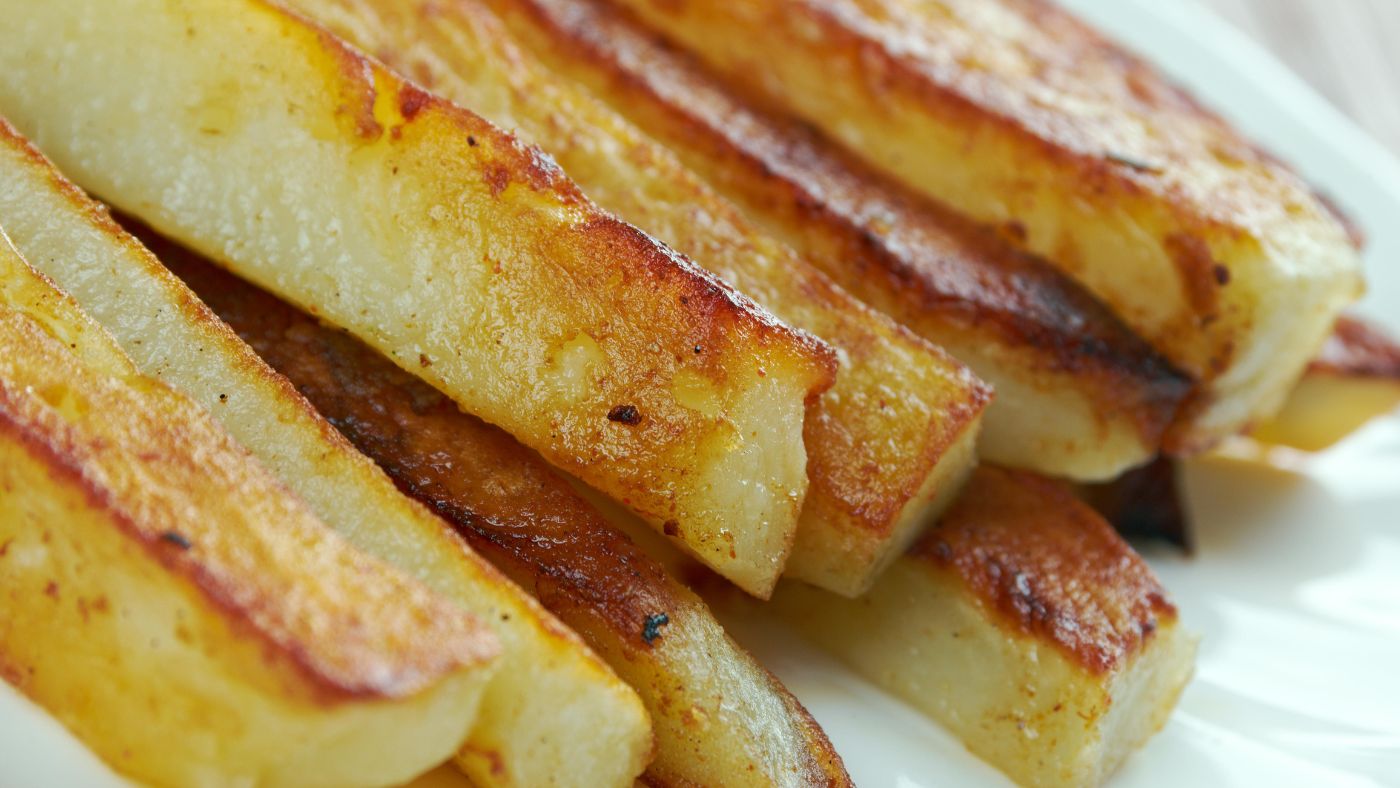
Heston Blumenthal is known for creating “bewildering dishes”, says The Economist, such as “meat fruit” (chicken liver parfait disguised as a mandarin), and bacon-and egg ice cream. And yet his “greatest gift to the world” may be something simpler: in around 1992, before he even became a professional chef, he devised a new method for cooking chips. Traditionally, chips are double-cooked – deep-fried once to cook them through, then at a higher temperature to crisp up their exteriors – but Blumenthal found that this led to chips that were too “soggy, a result of steam escaping from the middle and softening the crust”.
He wanted his chips to have a “glass-like” exterior and a fluffy centre. His solution was to add a preliminary stage: prior to being double-fried, the cut potatoes were to be simmered for 20-30 minutes, then dried on racks in the freezer. Blumenthal first served his “triple-cooked chips” when he opened The Fat Duck in 1995. Although the restaurant soon moved on to more elaborate dishes, the technique was widely adopted – and today, triple-cooked chips are so ubiquitous, they’re even available in supermarkets.
The trouble with no-egg egg

You may have seen the adverts on the sides of buses, said Ed Cumming in The Daily Telegraph. In “jaunty font on a yellow background”, they announce a product called Crackd, which is aimed at people who “can’t, don’t or won’t” eat eggs. Made from 17 ingredients – including pea protein, methyl cellulose and potassium bitartrate – Crackd is a vegan egg substitute, which is designed for use in any dish that normally calls for whole eggs: omelettes, scrambled eggs, cakes, doughnuts.
Some, of course, will find it very useful, but I’m uneasy with the trend for modifying “everything you can eat or drink” to the point that it no longer contains “its own essence”. Supermarkets are stuffed with such “negatives”, often denoted by their silly spellings – “chick’n”, “turk’y”, “Sheese”. I used Crackd to make scrambled eggs, and found the results pretty disappointing, said Danni Scott in the Daily Mirror. The protein never acquired the right texture, and the end result “vaguely tasted like a Yorkshire pudding”. If you must have vegan scrambled eggs, I’d recommend Tofoo’s scrambled tofu instead: though it undoubtedly tastes more like tofu than eggs, the flavour is at least “pleasant” and, “in a pinch”, could be a replacement.
A better use for a sandwich toaster
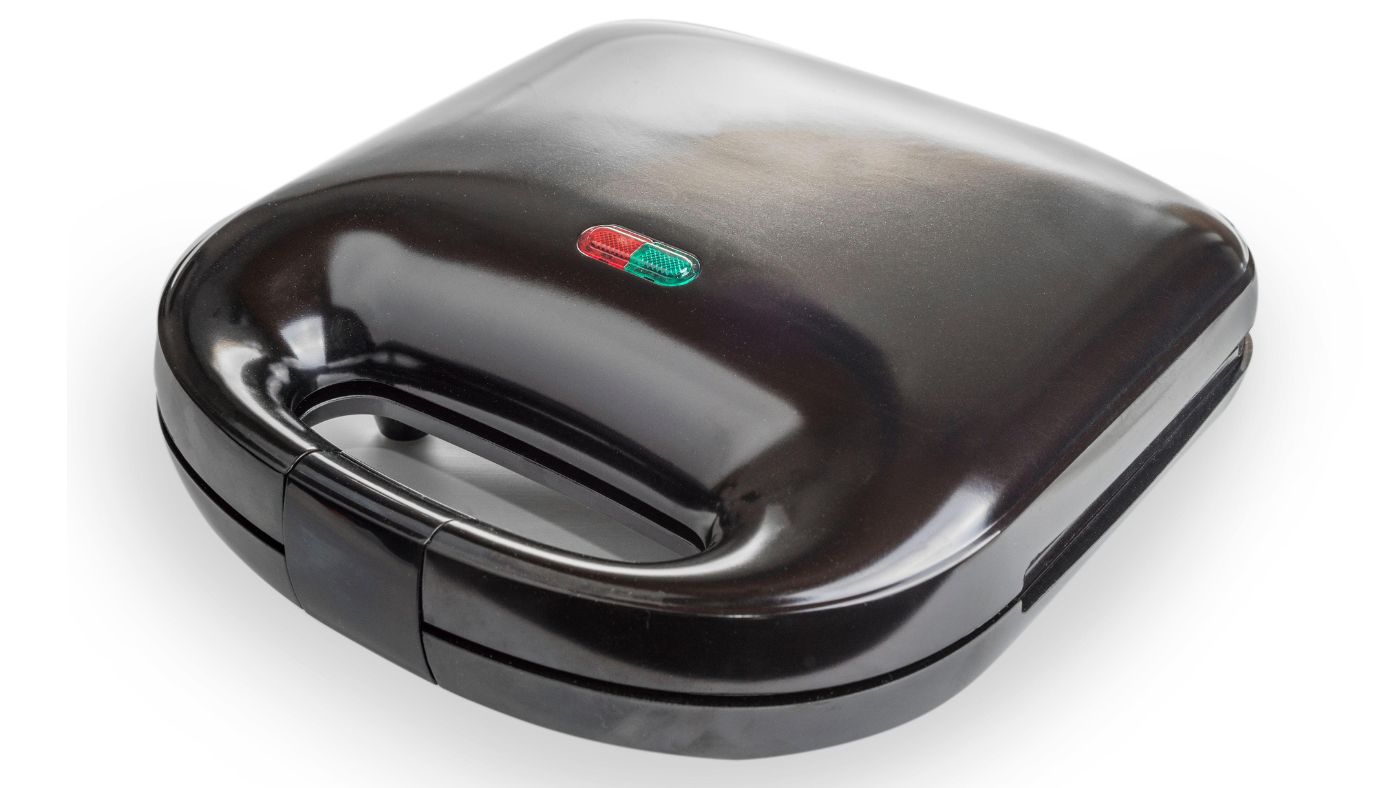
Most people have probably acquired a sandwich toaster at some stage of their life, and chances are the appliance is now gathering dust as the back of a kitchen cupboard, said Jane Baxter – co-founder of Wild Artichokes – in an interview with The Observer. That’s a shame, because toasted sandwich makers are versatile devices and remarkably useful for cooking vegetables.
I often cook purple sprouting broccoli in one, because it will end up both charred and steamed – with more flavour retained than if the veg had been boiled. You can add a little oil beforehand, but I don’t think it’s necessary. With leeks, I cut them lengthways first then chop them once they’ve been grilled. But there are lots of possibilities: French beans, slices of cabbage... “I’ve even put in whole chunks of cavolo nero, squashing [them] down with the lid.”
The plusses of a pressure cooker
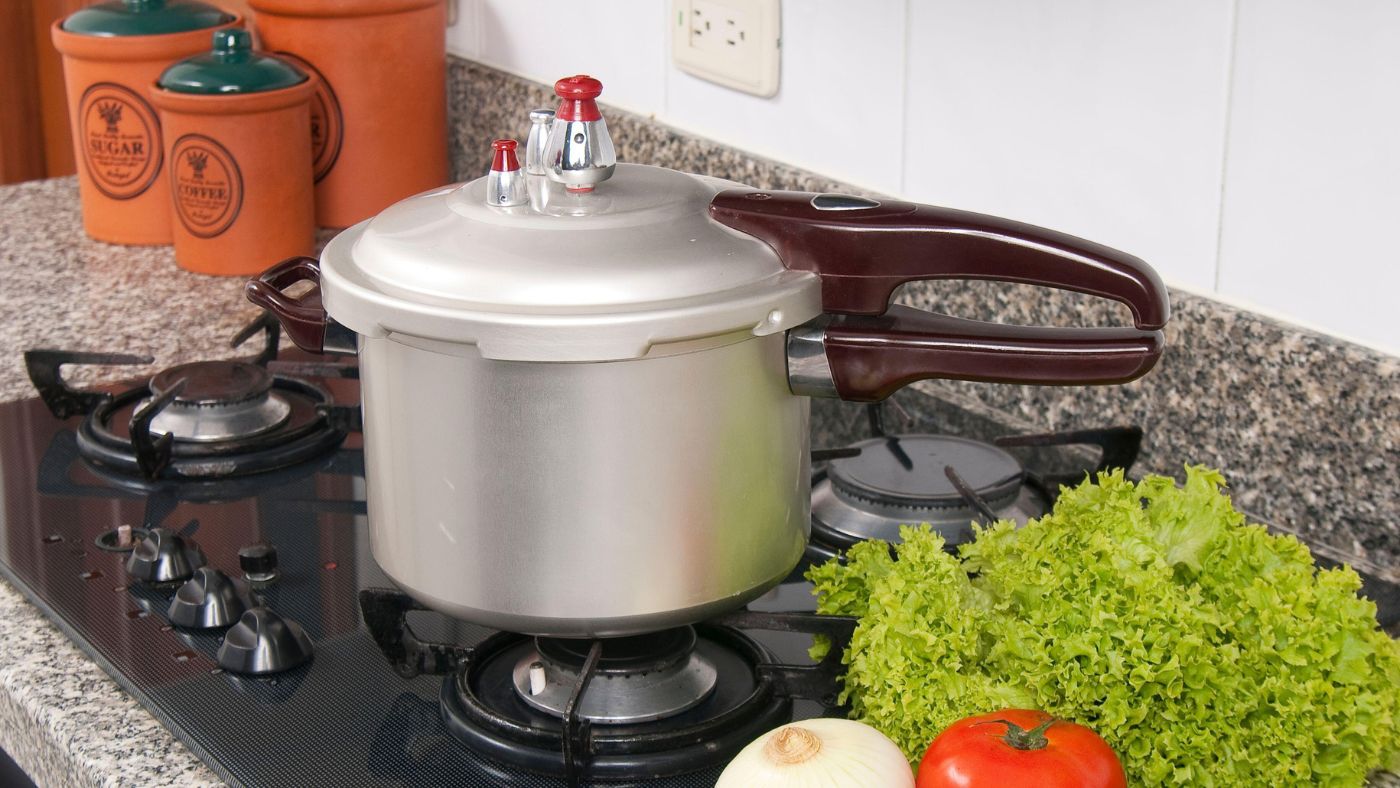
Pressure cookers offer home cooks many advantages, says Anna Berrill in The Guardian – from dramatically reducing cooking times to concentrating flavour. But they take a bit of getting used to. According to Catherine Phipps, author of Modern Pressure Cooking, using one “isn’t obviously intuitive”, and so it’s a good idea, at least at first, to follow recipes designed specifically for them.
An excellent place to start is with brothy chickpeas, says Stefano Arturi, author of the Italian Home Cooking food blog. After soaking dried chickpeas in cold water for 12 hours, drain and transfer them to your pressure cooker with just enough fresh water to submerge them, then add “salt, olive oil and aromatics (garlic, bay, rosemary and/or a parmesan rind)”. Cook the beans at high pressure for ten minutes and then “wait for the pressure to drop naturally” before tasting. “If the chickpeas aren’t quite soft, cook for a few minutes more, then set aside, covered, for 30 minutes.” They’re excellent spooned over toast with “a little of their golden broth”.
-
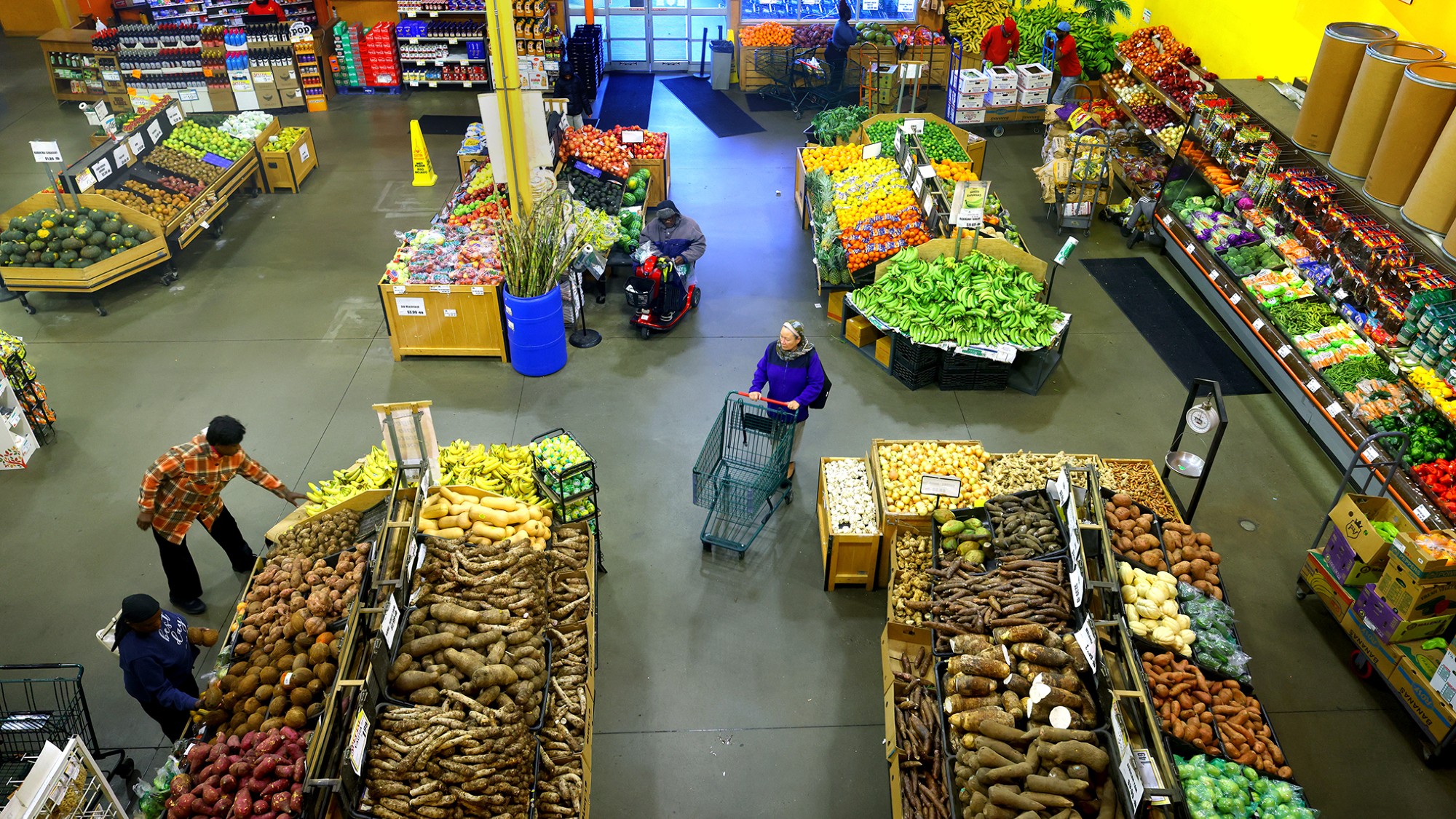 Is $140,000 the real poverty line?
Is $140,000 the real poverty line?Feature Financial hardship is wearing Americans down, and the break-even point for many families keeps rising
-
 Film reviews: ‘The Secret Agent’ and ‘Zootopia 2’
Film reviews: ‘The Secret Agent’ and ‘Zootopia 2’Feature A Brazilian man living in a brutal era seeks answers and survival and Judy and Nick fight again for animal justice
-
 Trump: Losing energy and support
Trump: Losing energy and supportFeature Polls show that only one of his major initiatives—securing the border—enjoys broad public support
-
 Film reviews: ‘The Secret Agent’ and ‘Zootopia 2’
Film reviews: ‘The Secret Agent’ and ‘Zootopia 2’Feature A Brazilian man living in a brutal era seeks answers and survival and Judy and Nick fight again for animal justice
-
 Wake Up Dead Man: ‘arch and witty’ Knives Out sequel
Wake Up Dead Man: ‘arch and witty’ Knives Out sequelThe Week Recommends Daniel Craig returns for the ‘excellent’ third instalment of the murder mystery film series
-
 Zootropolis 2: a ‘perky and amusing’ movie
Zootropolis 2: a ‘perky and amusing’ movieThe Week Recommends The talking animals return in a family-friendly sequel
-
 Storyteller: a ‘fitting tribute’ to Robert Louis Stevenson
Storyteller: a ‘fitting tribute’ to Robert Louis StevensonThe Week Recommends Leo Damrosch’s ‘valuable’ biography of the man behind Treasure Island
-
 The rapid-fire brilliance of Tom Stoppard
The rapid-fire brilliance of Tom StoppardIn the Spotlight The 88-year-old was a playwright of dazzling wit and complex ideas
-
 ‘Mexico: A 500-Year History’ by Paul Gillingham and ‘When Caesar Was King: How Sid Caesar Reinvented American Comedy’ by David Margolick
‘Mexico: A 500-Year History’ by Paul Gillingham and ‘When Caesar Was King: How Sid Caesar Reinvented American Comedy’ by David Margolickfeature A chronicle of Mexico’s shifts in power and how Sid Caesar shaped the early days of television
-
 Homes by renowned architects
Homes by renowned architectsFeature Featuring a Leonard Willeke Tudor Revival in Detroit and modern John Storyk design in Woodstock
-
 Film reviews: ‘Hamnet,’ ‘Wake Up Dead Man’ and ‘Eternity’
Film reviews: ‘Hamnet,’ ‘Wake Up Dead Man’ and ‘Eternity’Feature Grief inspires Shakespeare’s greatest play, a flamboyant sleuth heads to church and a long-married couple faces a postmortem quandary